Nexus
We are a team creating the world’s most comprehensive list of Solutions and Challenges that address the climate crisis and the regeneration of planetary ecosystems. Eliminating greenhouse gas emissions and bringing carbon back home from the atmosphere is crucial. But Nexus goes beyond tallying carbon. Solutions to the climate crisis include access to education, the restoration of human rights, honoring Indigenous ecological knowledge, social justice, gender equality, and ending political corruption and corporate malfeasance. Together, these changes encompass a profound, regenerative movement to restore life on Earth and bring humanity back into alignment with the living world. We will continue to add entries and encourage your suggestions and insights.
Each Nexus entry explores what can be done on all levels of agency, including individual, community, classroom, city, company, and government. For each topic, we curate organizations that are actively engaged, describe actions that can be taken, link to educational opportunities, and provide examples of transformation. We encourage you to take action in a way that inspires you.
In 2025, we will make the Nexus database available under a Creative Commons Attribution-ShareAlike 4.0 International license. This will allow anyone to translate it into diverse languages and make it applicable and relevant within different regions and cultures around the world. If you would like to utilize and incorporate Nexus into your website, school, NGO, government, or company, please fill out this form to get in touch. We are here to support everyone who wishes to contribute to regenerative action.
Our team is always hard at work writing new Nexus Solutions and Challenges to share with the world, but with it being such a large resource in need of constant work, we have decided to open up editing to the public. If you're interested in contributing to and editing Nexus on a volunteer basis, please fill out this form to get started.
Solutions to the climate emergency have unique social and environmental effects, positive and negative. Just as important as what solution is being implemented are the details on how an initiative is done, who is consulted, and what values are prioritized. To develop a broader understanding of the solutions in Nexus, we rate each on five criteria: Social Justice, Culture, Women, Biodiversity, and Carbon.
Sources for each Nexus are graded numerically (-3 through 10), and the average is displayed as a letter grade. You can explore each source in depth by clicking on the title of any Nexus Solution below or see all the ratings for every solution on our Nexus Ratings page. These ratings are approximations based on informed assumptions from the available data. Although the atmosphere is global, there are no global solutions. All solutions are place-based. We aim for this research to invite a holistic perspective on regenerative solutions to the planetary crisis.


Afforestation
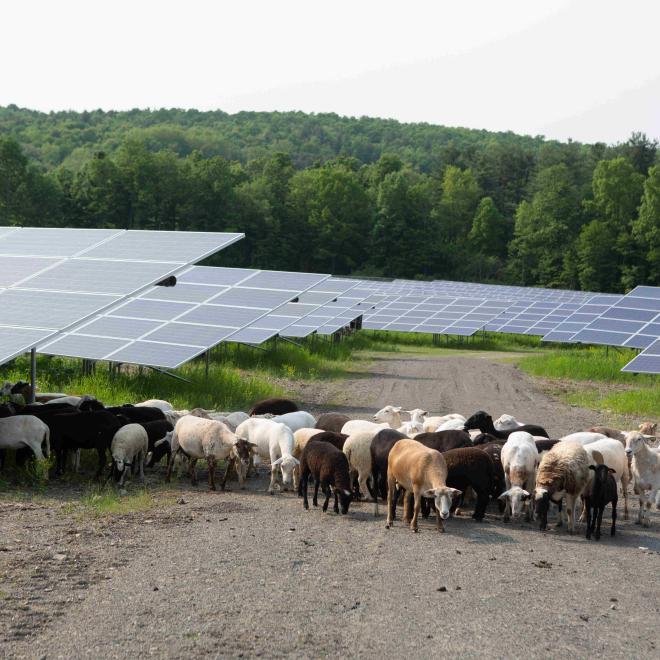

Agrivoltaics
Sheep grazing and using solar panels for shade on an agrivoltaic farm.
Courtesy of: American Solar Grazing Association, solargrazing.org
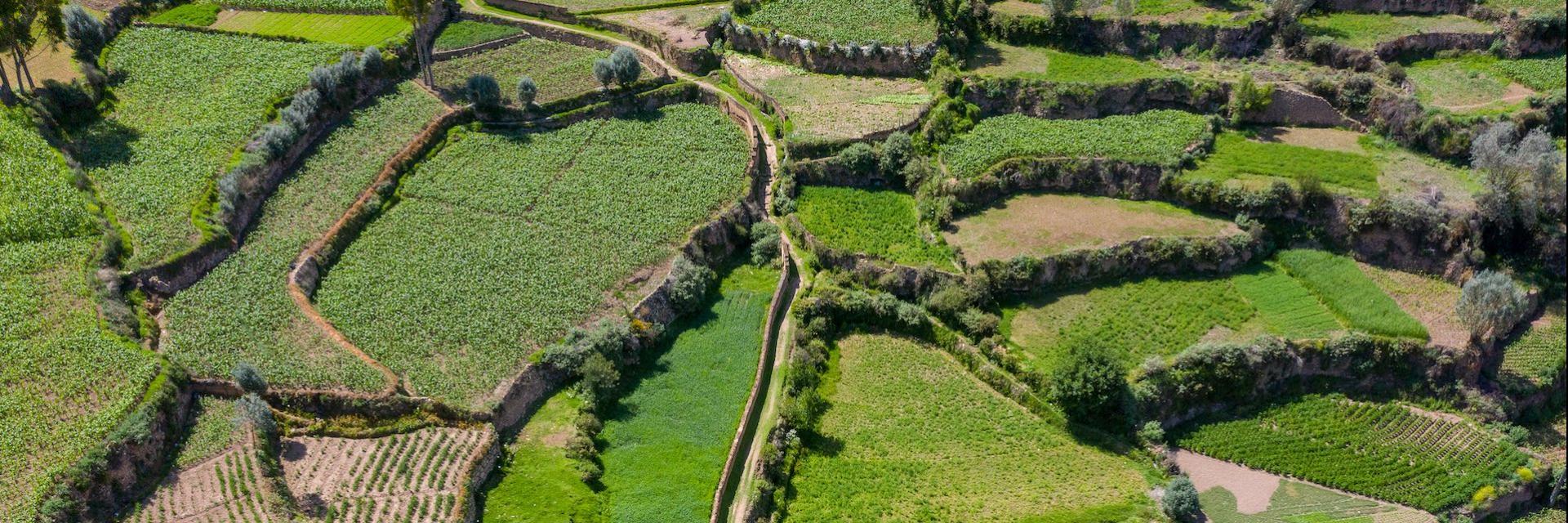
Agroecology
Andenes or platforms for agriculture in Peru.
Credit: Christian Vinces / Adobe Stock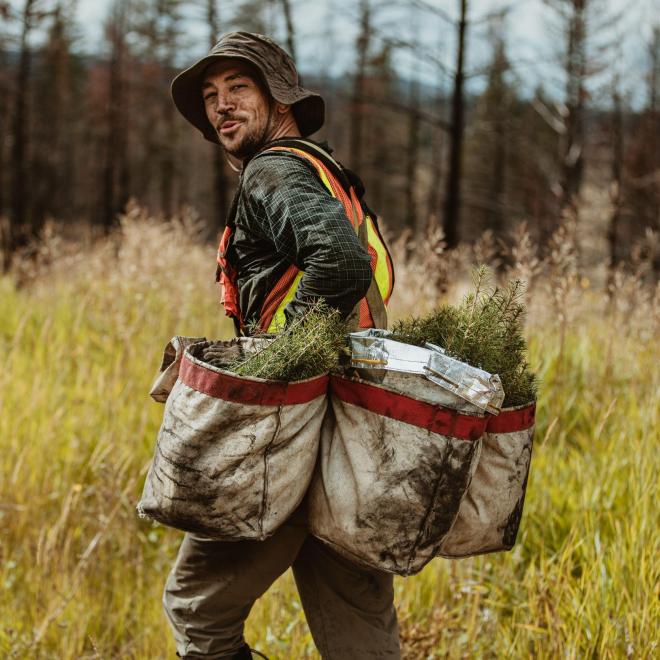
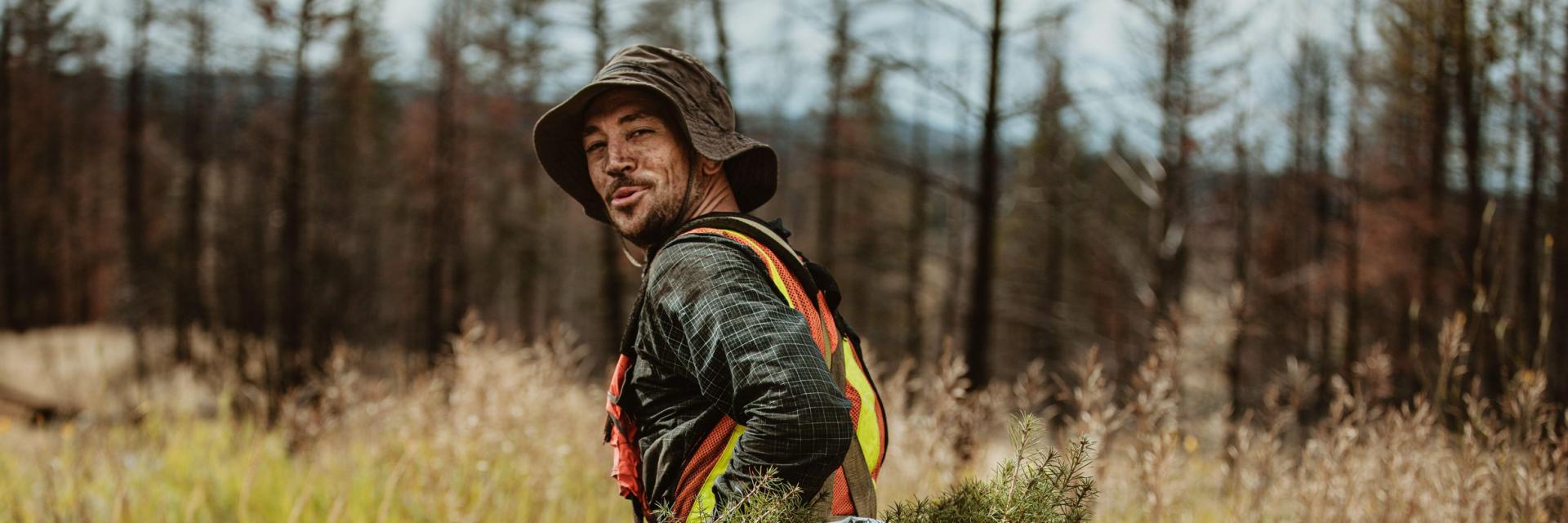
Agroforestry
“Johnny Pineseed” near Williams Lake, British Columbia, Canada.
Credit: Jacob Lund / Alamy Stock Photo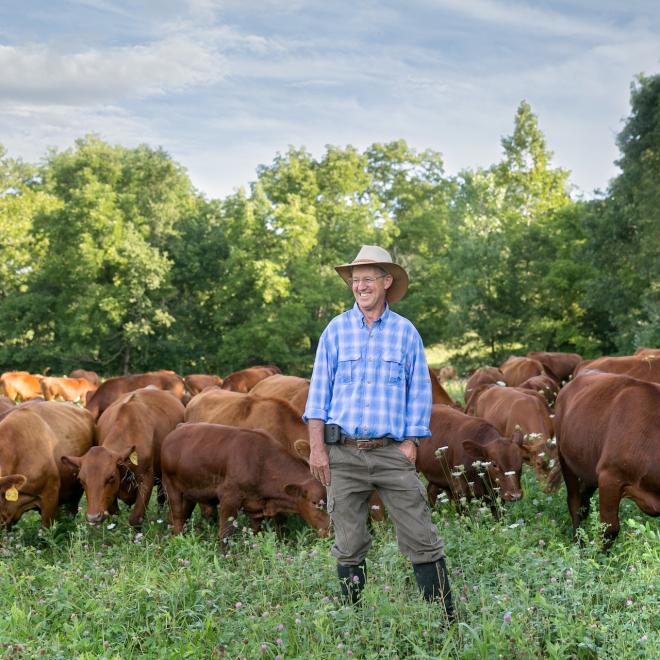
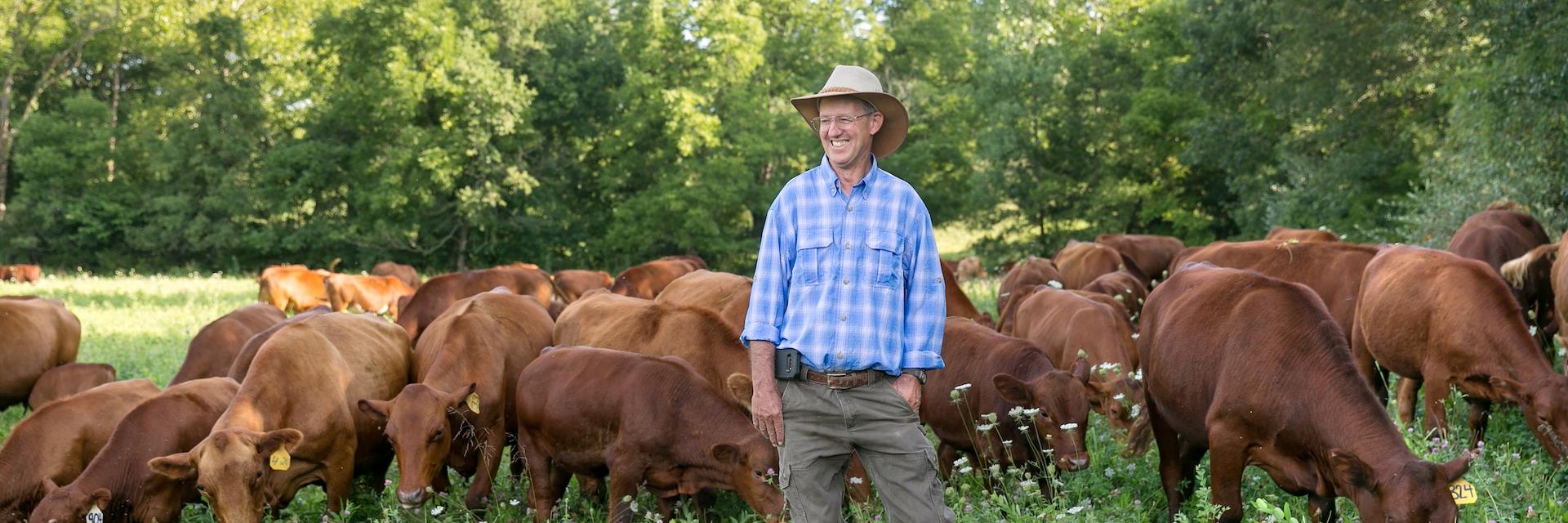
Animal Integration
Regenerative rancher Greg Judy smiling with his cattle on pasture.
Credit: Kim Wade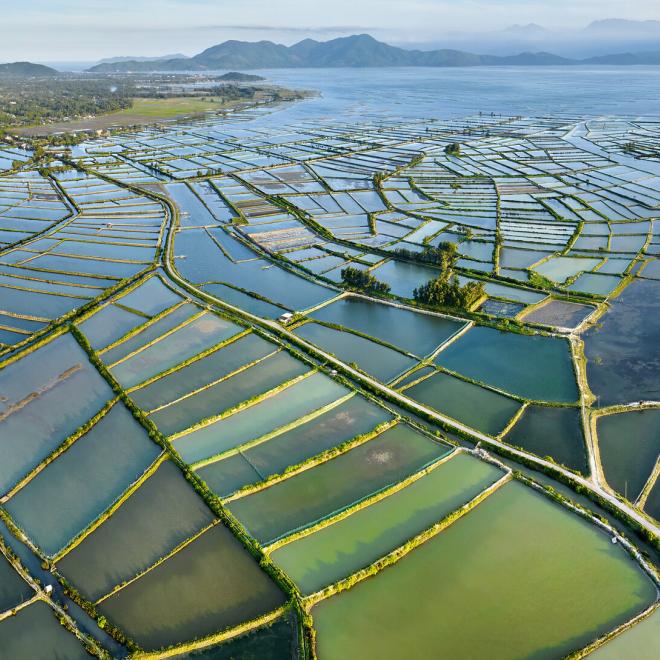
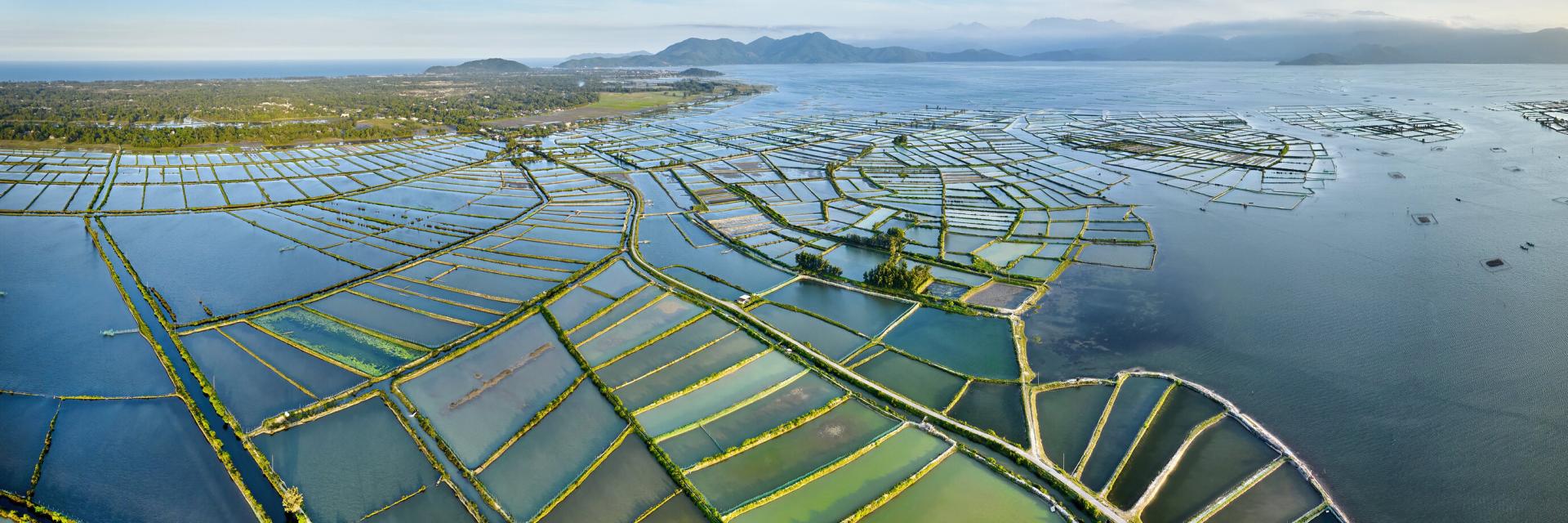
Aquaculture
Aquaculture ponds in the Hue coastal lagoons, Vietnam.
Credit: Andrea Pistolesi / Getty Images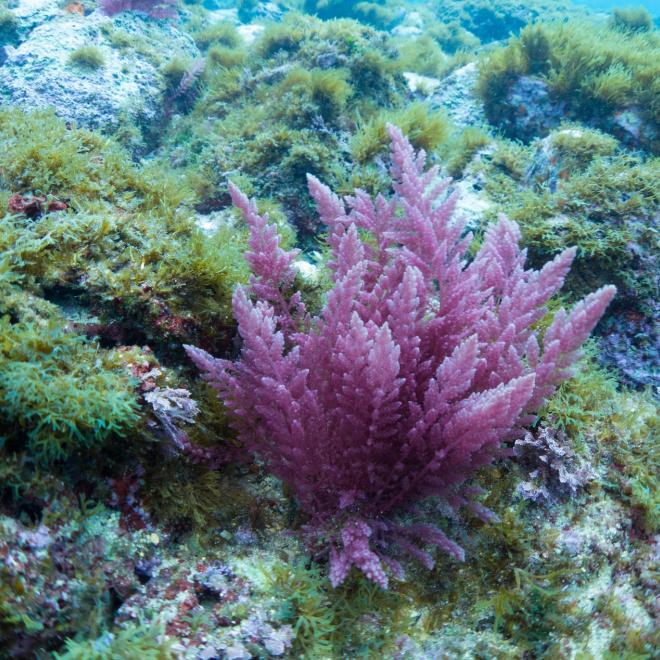
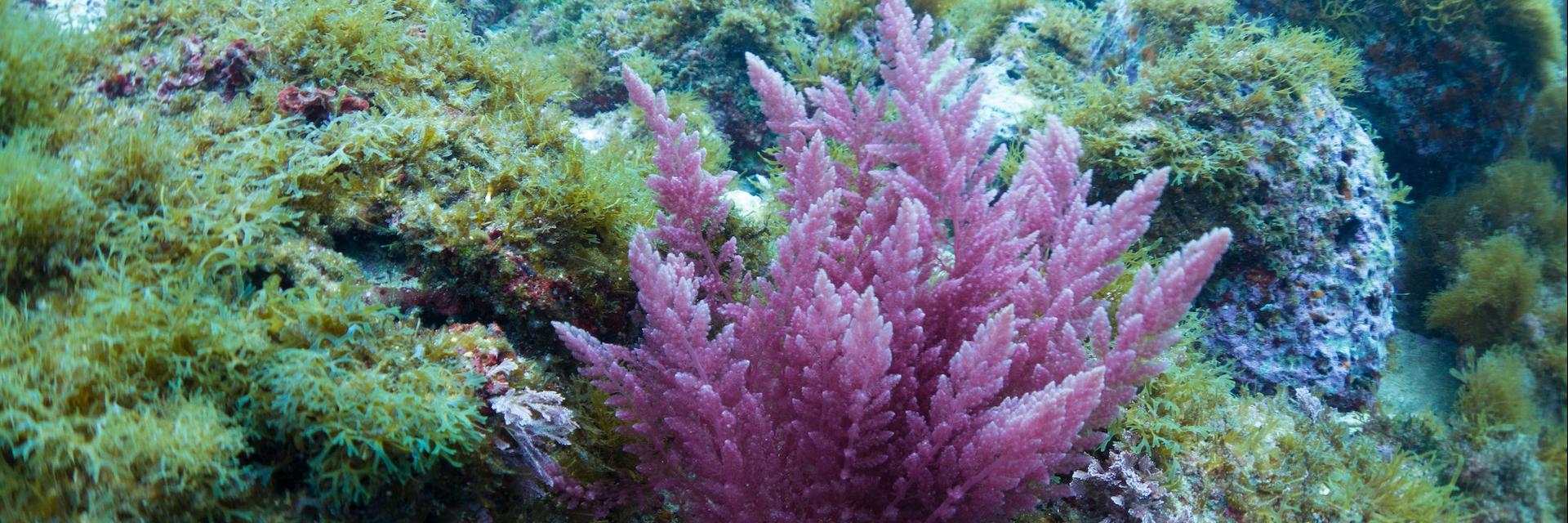
Asparagopsis
Red algae, Asparagopsis taxiformis, from the Mediterranean, Malta.
Credit: Rasmus Loeth Petersen / Alamy Stock Photo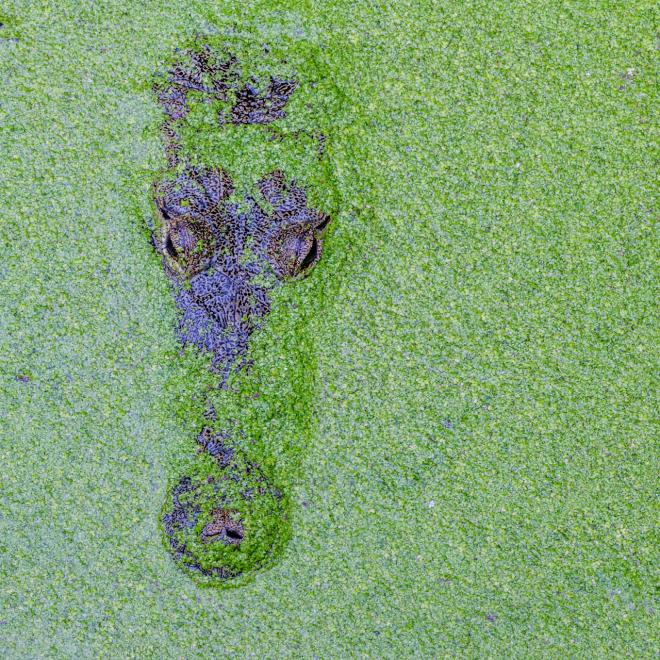

Azolla Fern
A Morelet's crocodile (Crocodylus moreletii) amid profuse Azolla fern in Laguna Catemaco, in Los Tuxtlas Biosphere Reserve at the center of the Sierra de los Tuxtlas, Veracruz, Mexico.
Credit: Claudio Contreras / Nature Picture Library

Bamboo
The sinuous trunk of a Korean pine (Pinus koraiensis) being overtaken by Moso bamboo (Phyllostachys heterocycla f. pubescens) in the Gyeongsang-do walled town in Korea.
Credit: Nathaniel Merz
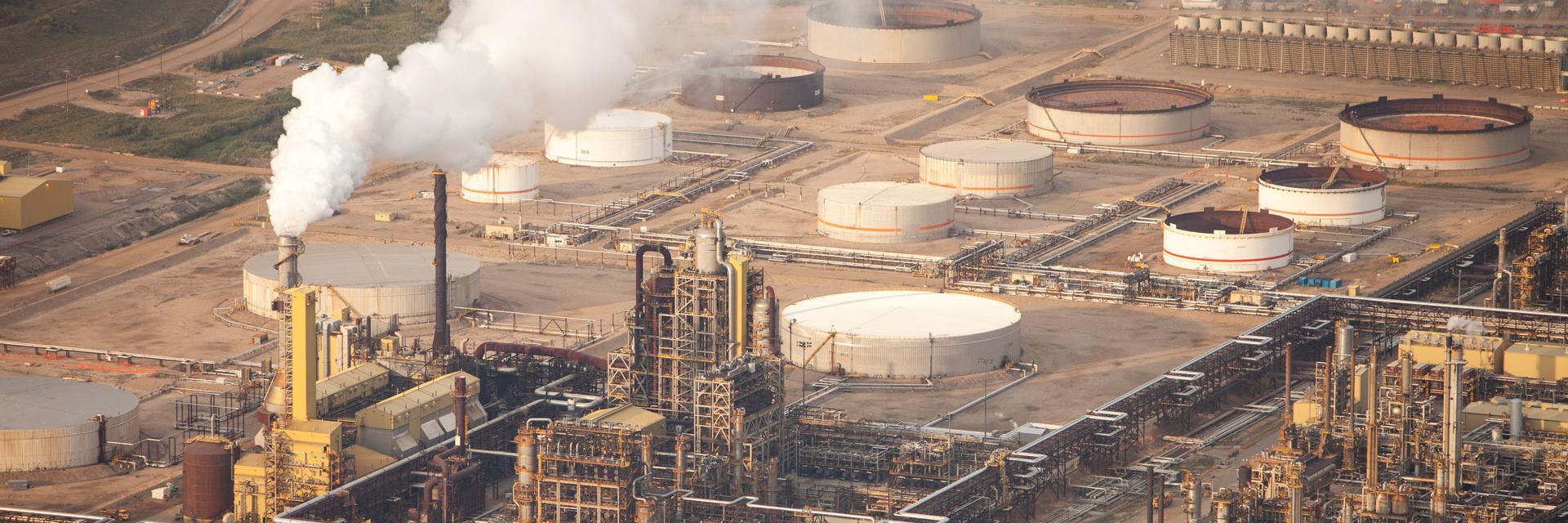
Banking & Finance
Tar sands deposits being mined at the Syncrude mine north of Fort McMurray, Alberta, Canada. The tar sands are the largest industrial project on the planet, and the world’s most environmentally destructive. The synthetic oil produced from them is three times more carbon intensive than conventional oil supplies. The tar sands are responsible for the second-fastest rate of deforestation on the planet, second only to the Amazon rainforest. They produce millions of liters of highly polluted water every day, which leaches out into the Athabasca River and has serious health impacts on First Nation peoples living downstream.
Credit: Ashley Cooper / Nature Picture Library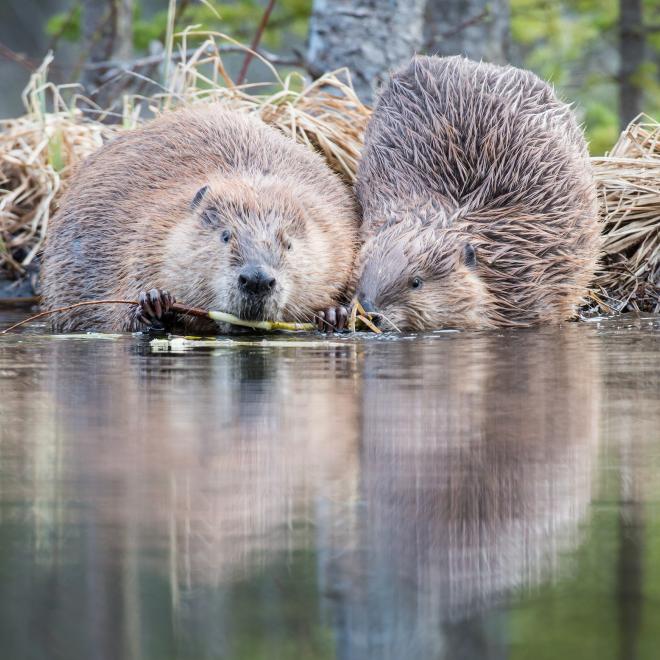
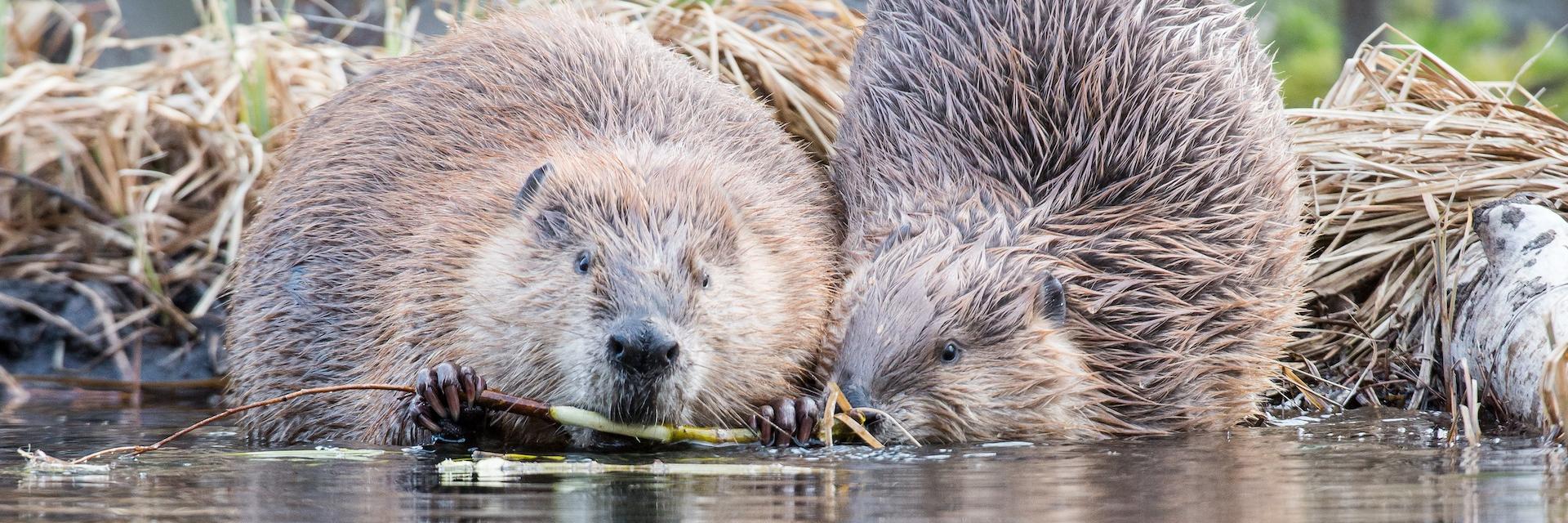
Beavers
Beavers are priamrily nocturnal and crepuscular, but are occasionally seen being active during the day.
Credit: Jillian / Adobe Stock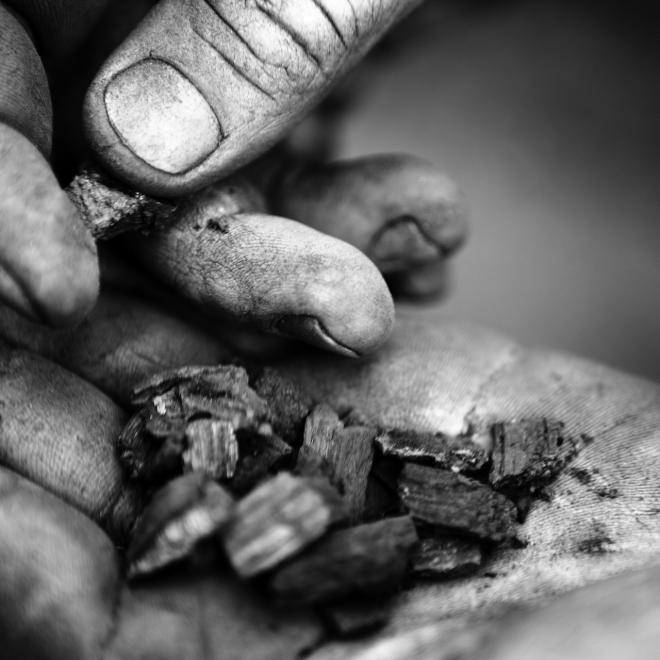

Biochar
Biochar made of chicken waste and wood chips from Josh Frye’s farm in Wardensville, West Virginia.
Credit: Jeff Hutchins / Getty Images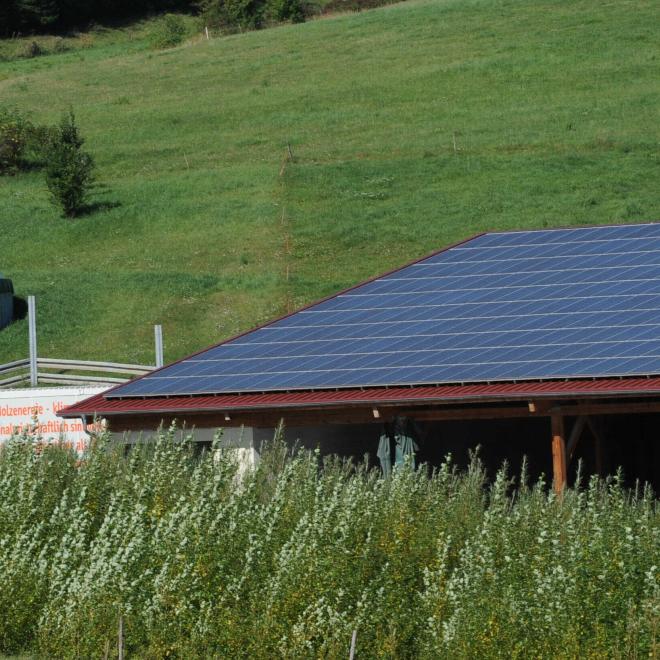
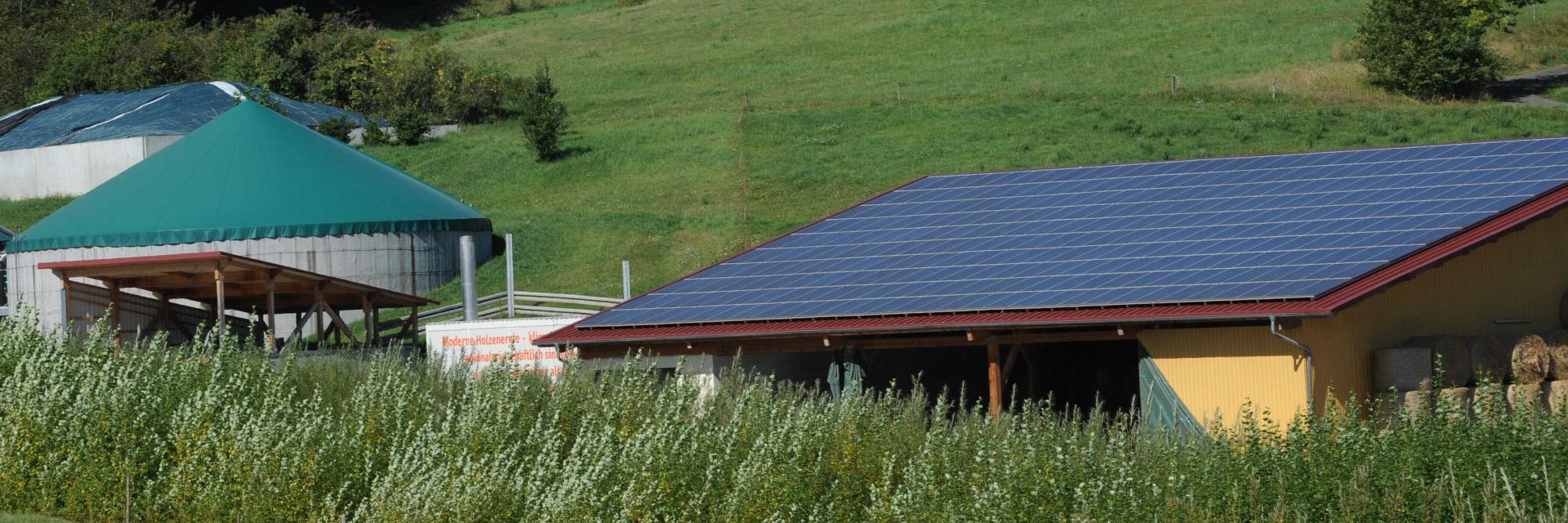
Biogas
A small biogas plant rises above the green grass of a farming meadow in the bio-energy village of Mauenheim, Germany, 27 August 2012. Six years ago, the village of Mauenheim launched an initiative to convert to biomass as the primary energy source and subsequently became the first village in the state of Baden-Wuerttemberg to run completely on self-sustaining regenerative thermal energy.
Credit: dpa picture alliance archive / Alamy Stock Photo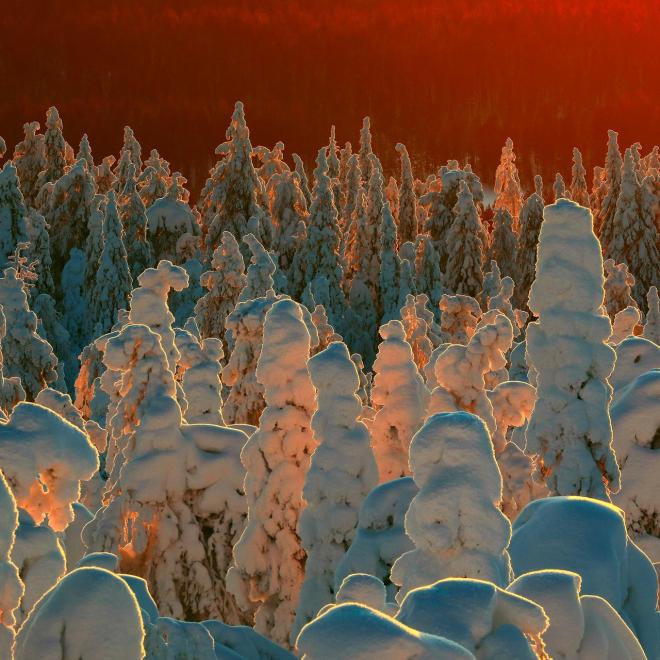
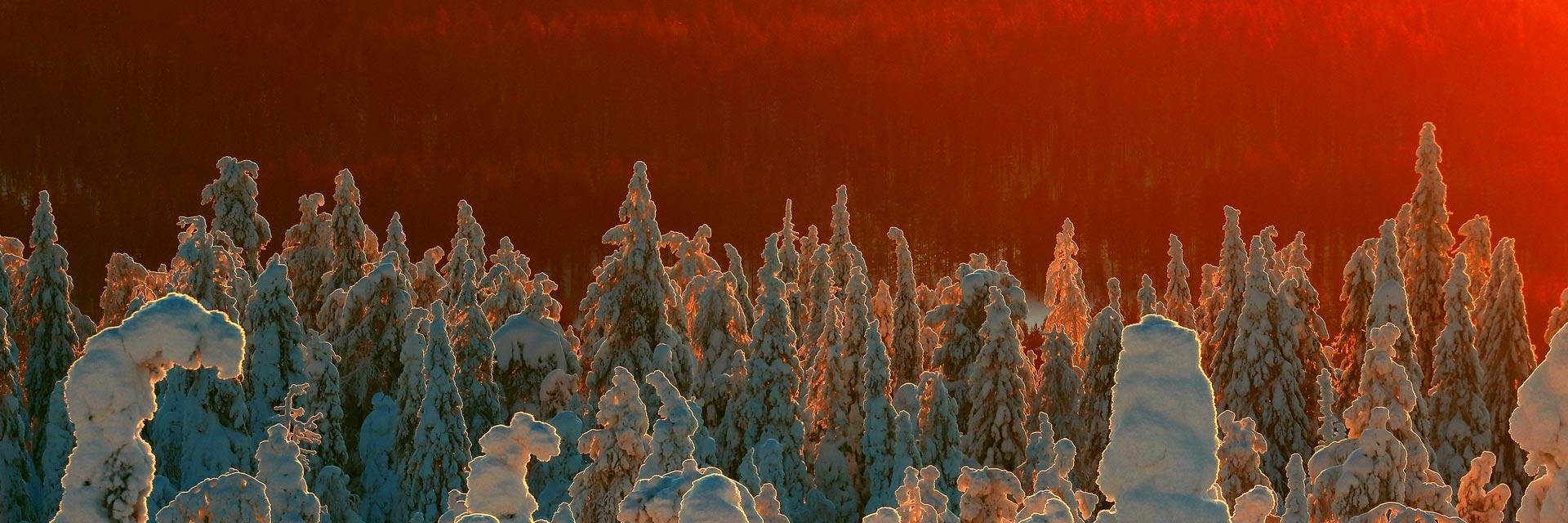
Boreal Forests
Snow-covered taiga forest in Finland.
Credit: David Allemand / Nature Picture Library
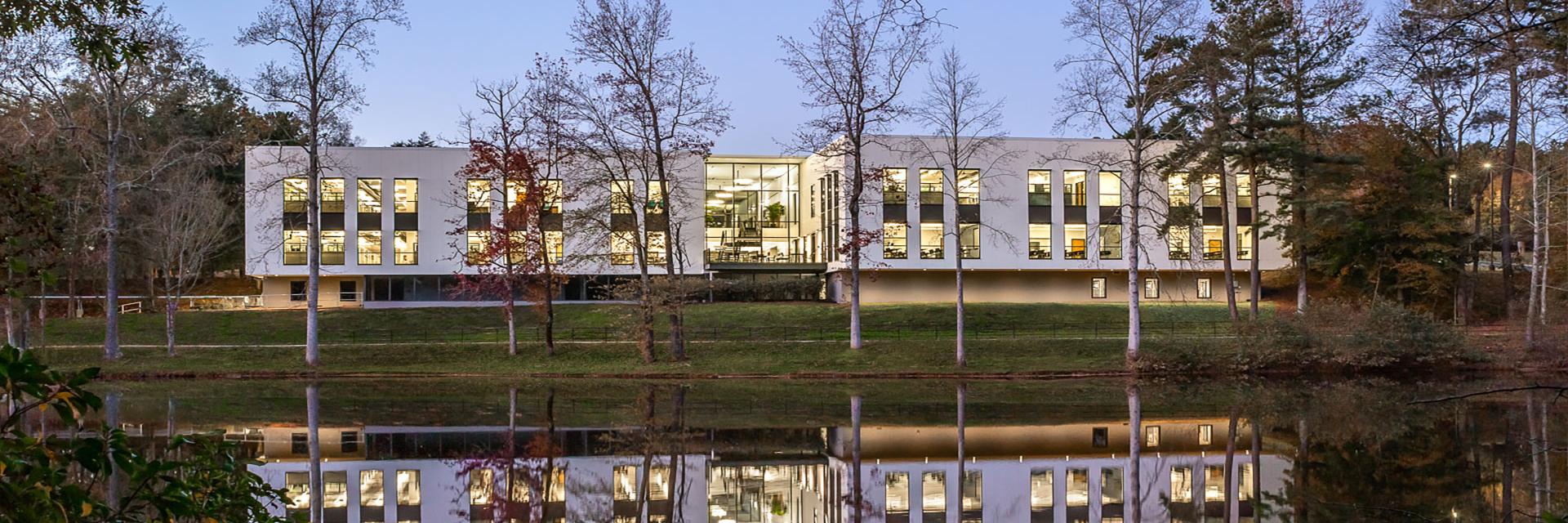
Buildings
The Atlanta headquarters for ASHRAE (American Society of Heating, Refrigerating, and Air-Conditioning Engineers) is a deep-energy retrofit that transformed an energy inefficient building from the 1970s into a daylit, industry-leading, efficient facility with advanced HVAC systems, LED lighting, and building automation systems. It is a fossil fuel-free and net-zero energy facility designed by McLennan Design.
Credit: Jason McLennan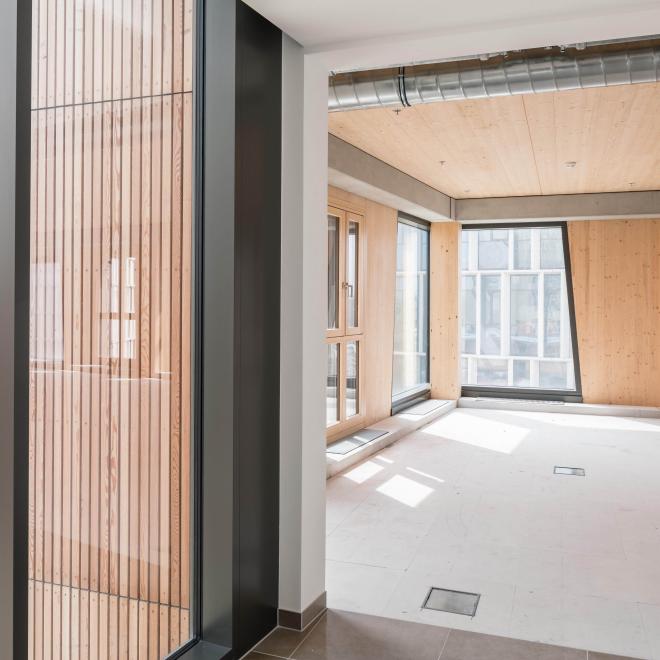

Carbon Architecture
The twenty-four-story high HoHo Tower complex in Vienna, Austria, is currently the world’s tallest timber building. It houses a hotel, apartments, a restaurant, a wellness center, and offices. Most of the building was prefabricated and assembled on-site. The construction system was kept deliberately simple, consisting of stacks of four prefabricated building elements: supports, joists, ceiling panels, and facade elements. About eight hundred wooden columns made of Austrian spruce carry the floors. It is designed to achieve “passive- house” energy efficiency.
Credit: DPA Picture Alliance / Alamy Stock Photo

Circularity
"The circular economy is a system where materials never become waste and nature is regenerated. In a circular economy, products and materials are kept in circulation through processes like maintenance, reuse, refurbishment, remanufacture, recycling, and composting. The circular economy tackles climate change and other global challenges, like biodiversity loss, waste, and pollution, by decoupling economic activity from the consumption of finite resources." -Ellen MacArthur Foundation
Credit: Capt.Pic / Shutterstock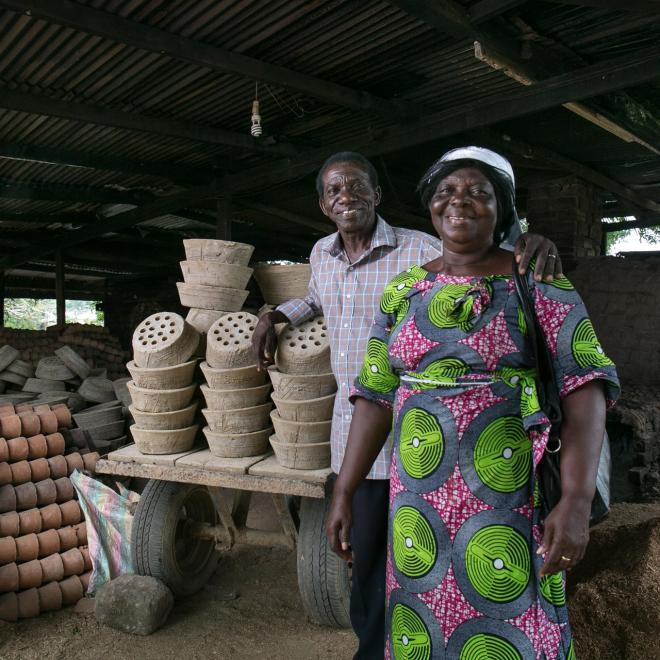
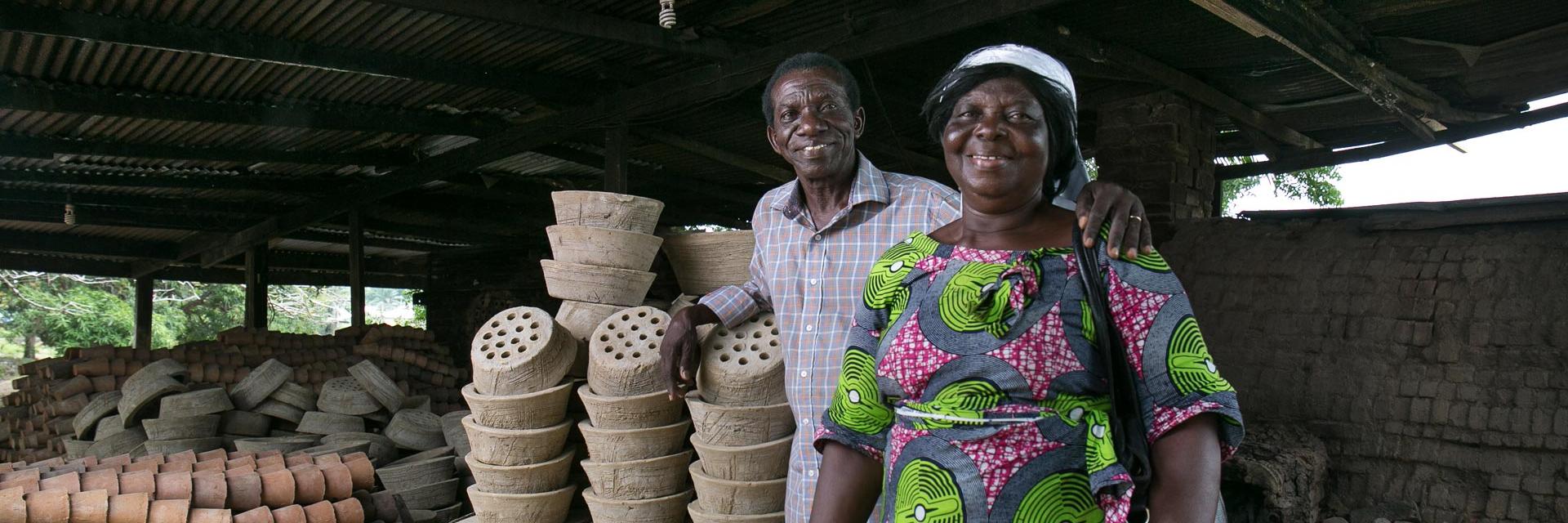
Clean Cookstoves
The Gyapa cookstove is made in Ghana, which has one of the highest deforestation rates in the world. It is the cocreation of ClimateCare and Relief International. The liners and claddings are made by local ceramicists and metal workers, providing local employment. Over 4.1 million Gyapa cookstoves have been made, saving users more than $75 million thus far. It reduces smoke and energy use by 50 to 60 percent. Richard and Gladys Eken make ceramic liners that are designed to create more complete combustion of charcoal or biomass.
Credit: Relief International Gyapa™ Project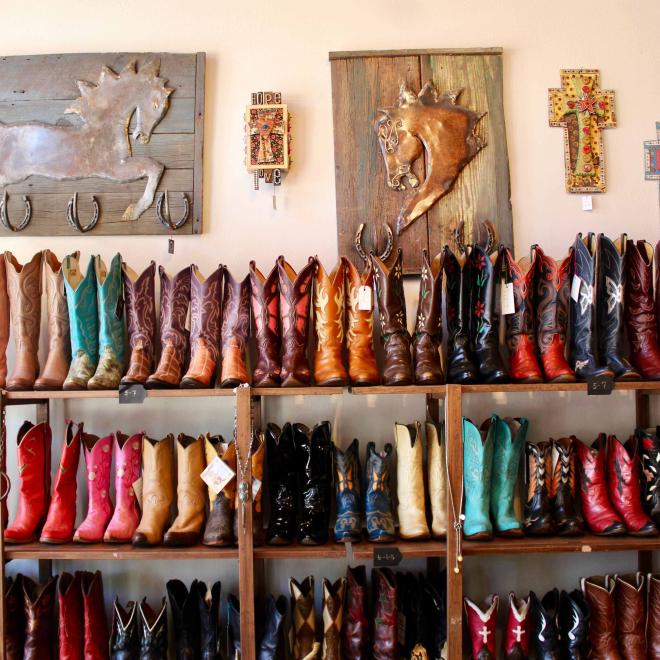
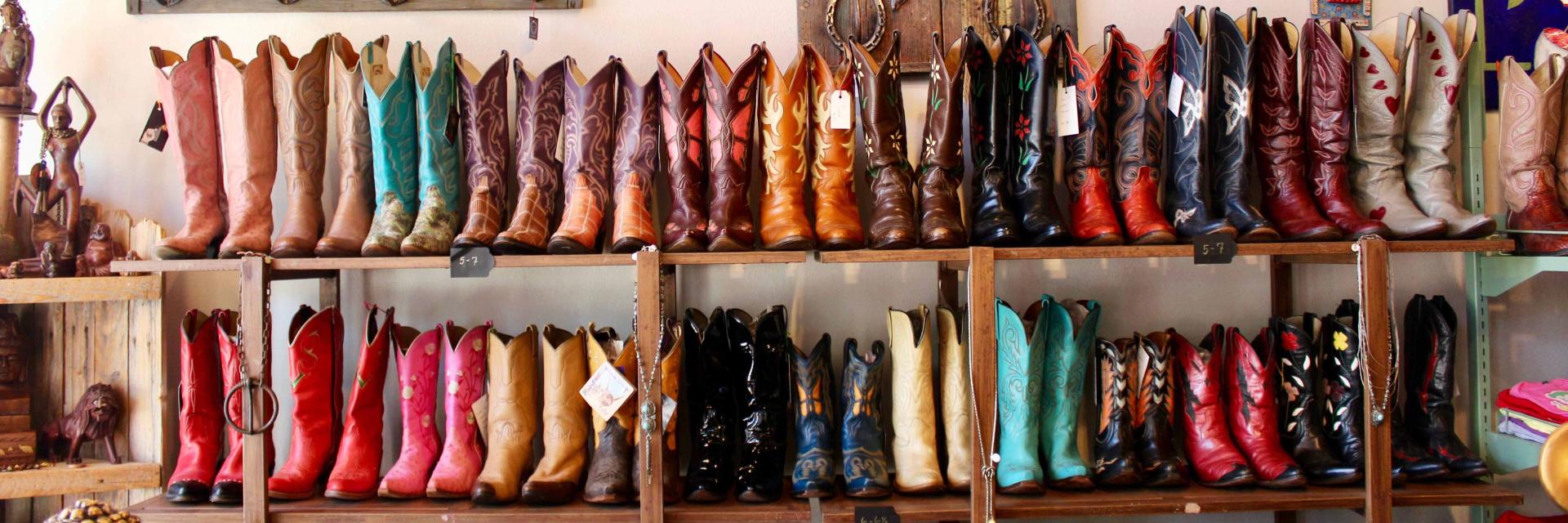
Clothing
A display of vintage and secondhand boots from My Flaming Heart, a handmade and vintage boutique store in Houston, Texas, USA.
Credit: simon leigh / Alamy Stock PhotoCompassion
Considered a living embodiment of compassion, the late Zen master Thich Nhat Hanh's human rights and reconciliation work during the Vietnam War led Martin Luther King Jr. to nominate him for a Nobel Prize. His legacy as a meditation teacher, poet, and peace activist continues to resonate worldwide.
Courtesy of: The International Plum Village Community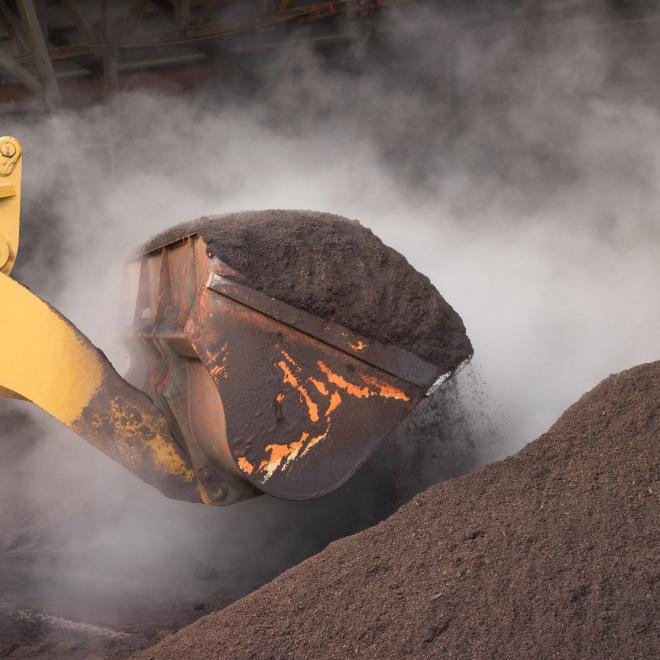
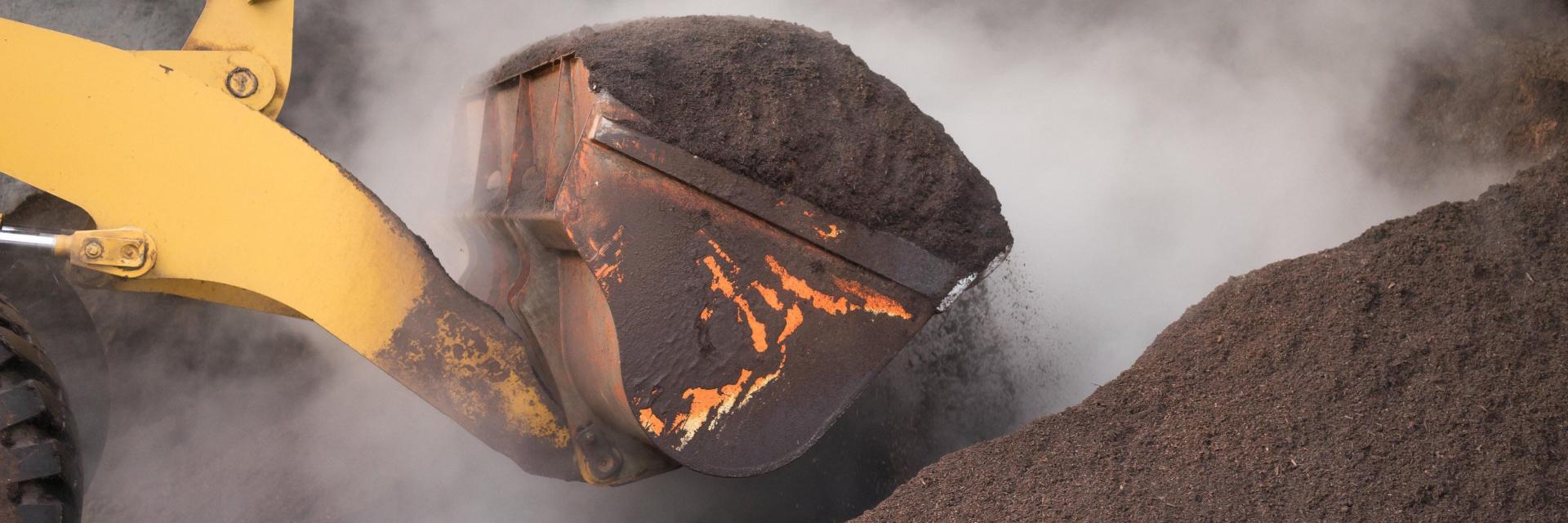
Compost
Industrial compost made from composted vegetables and animal manure in the UK.
Credit: Derek Yamashita / Alamy Stock Photo
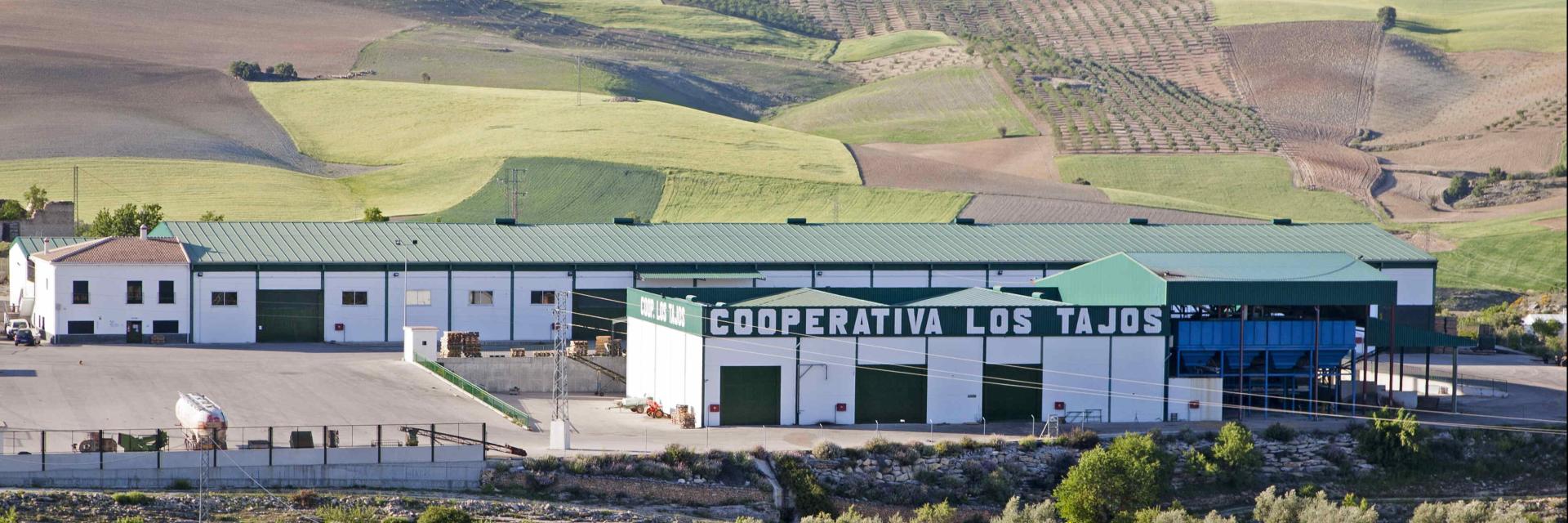
Cooperatives
Los Tajos Cooperative agricultural processing center, in the countryside near Alhama de Granada, Spain.
Credit: Geography Photos/Universal Images Group via Getty Images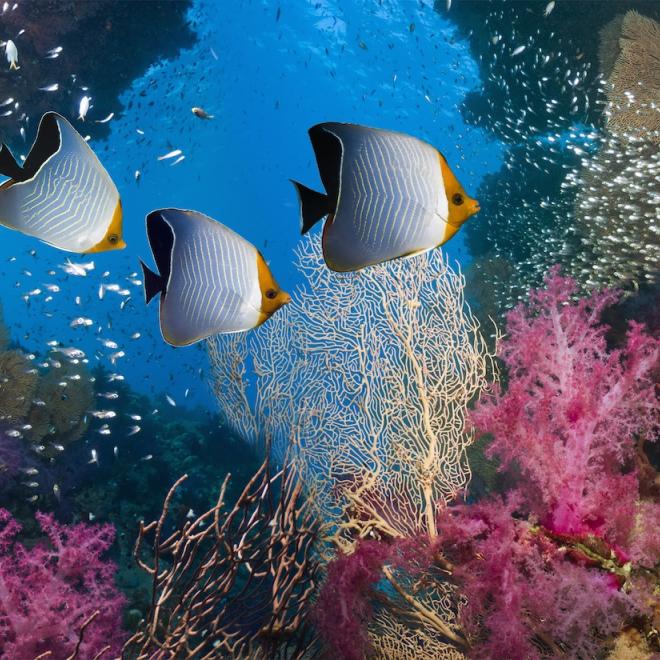

Coral Reefs
Coral reef scenery with a pair of golden butterflyfish (Chaetodon semilarvatus), Red Sea orange face butterflyfish (Chaetodon larvatus) and an exquisite or blacktail butterflyfish (Chaetodon austriacus) swimming past soft corals (Dendronephthya sp). Egypt, Red Sea.
Credit: Georgette Douwma / Getty Images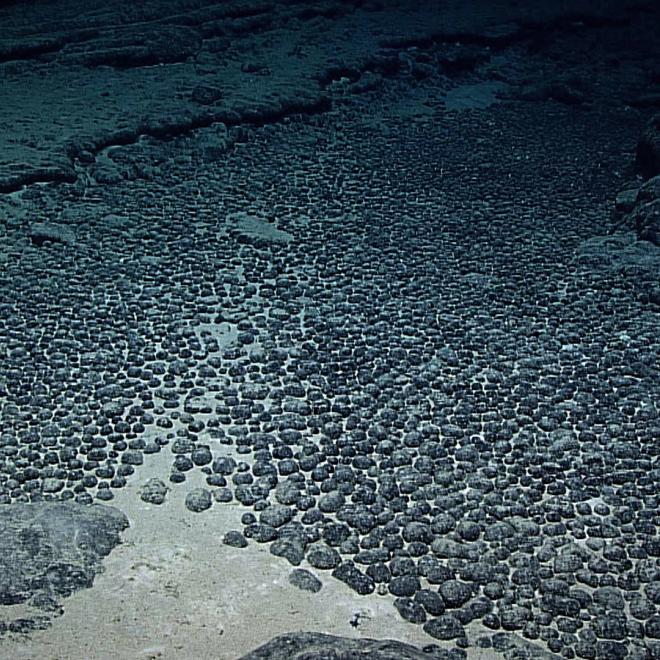
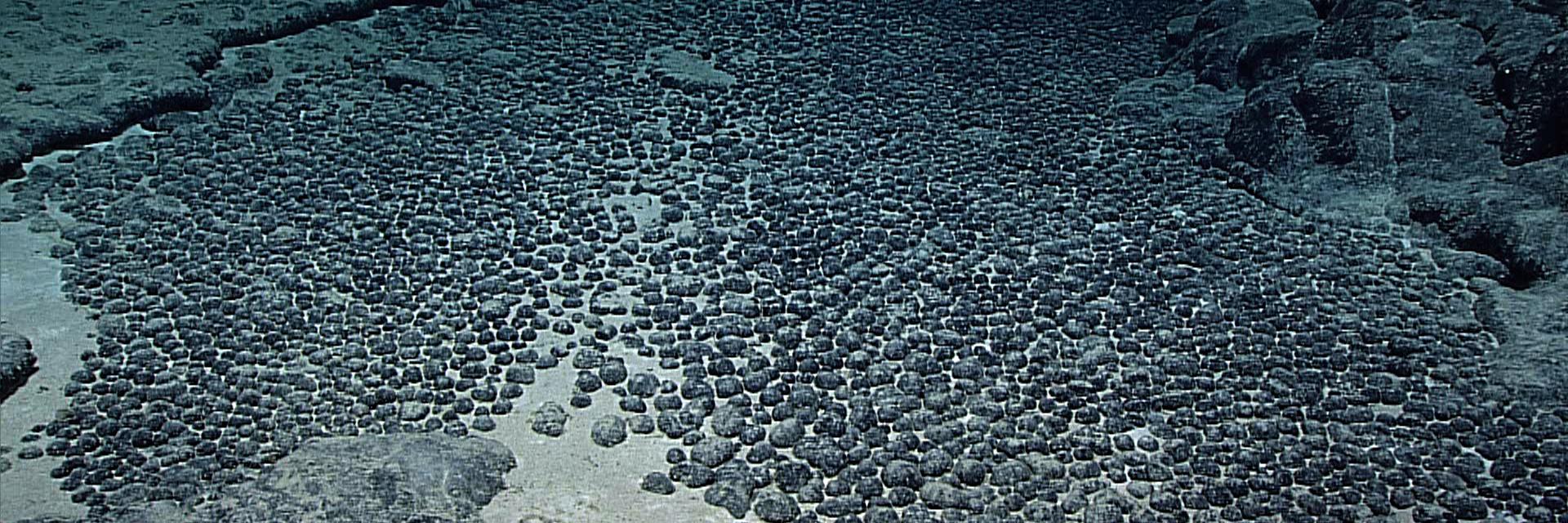
Deep Seabed Mining
Polymetallic nodules coat fields of the ocean floor and are rich in critical minerals needed to make batteries for electric vehicles.
Courtesy of: NOAA Ocean Exploration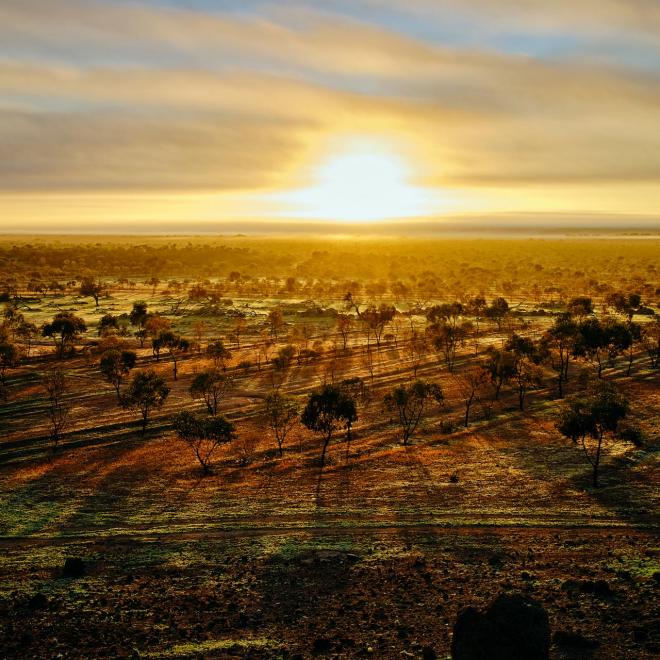
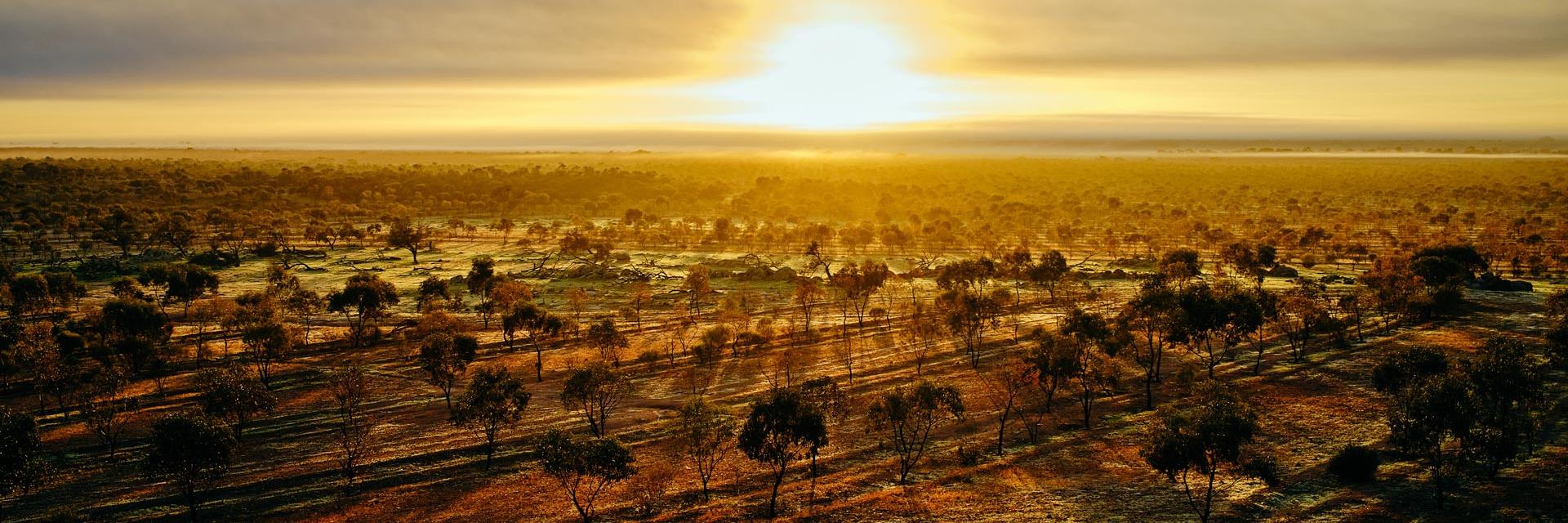
Degraded Land Restoration
The Yarra Yarra Biodiversity Corridor Project in Western Australia aims to link existing nature reserves by restoring land to create a 200-kilometer corridor. Since 2008, more than 30 million trees and shrubs indigenous to the region have been planted on 14,000 hectares. Over 90 percent of the restored area was cleared in the 1900s and is no longer suitable for traditional agriculture. Pictured above is restoration in progress from one of their earliest plantings. With active management, shrubs and grasses will gradually return to join the overstory trees. Techniques to encourage concurrent seedling and understory growth are being implemented in newer sites, including more dense and close row spacing, curved and contoured row alignment, and full-time removal of sheep.
Credit: Russell Ord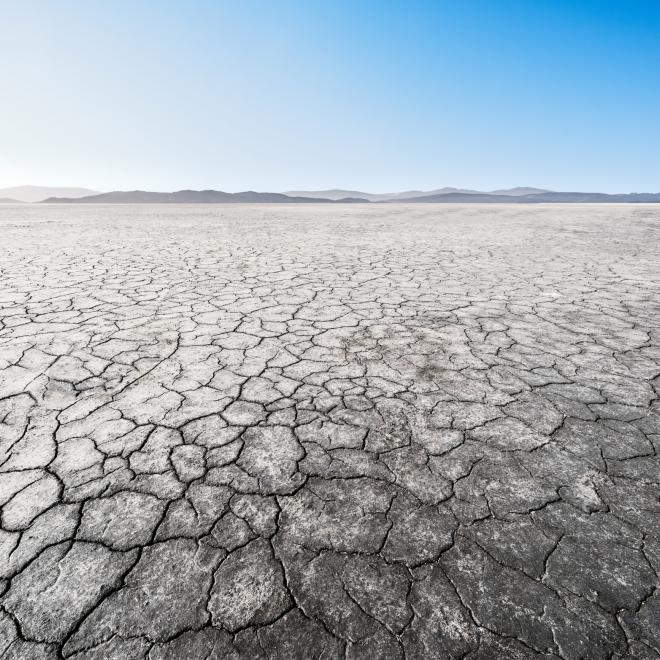
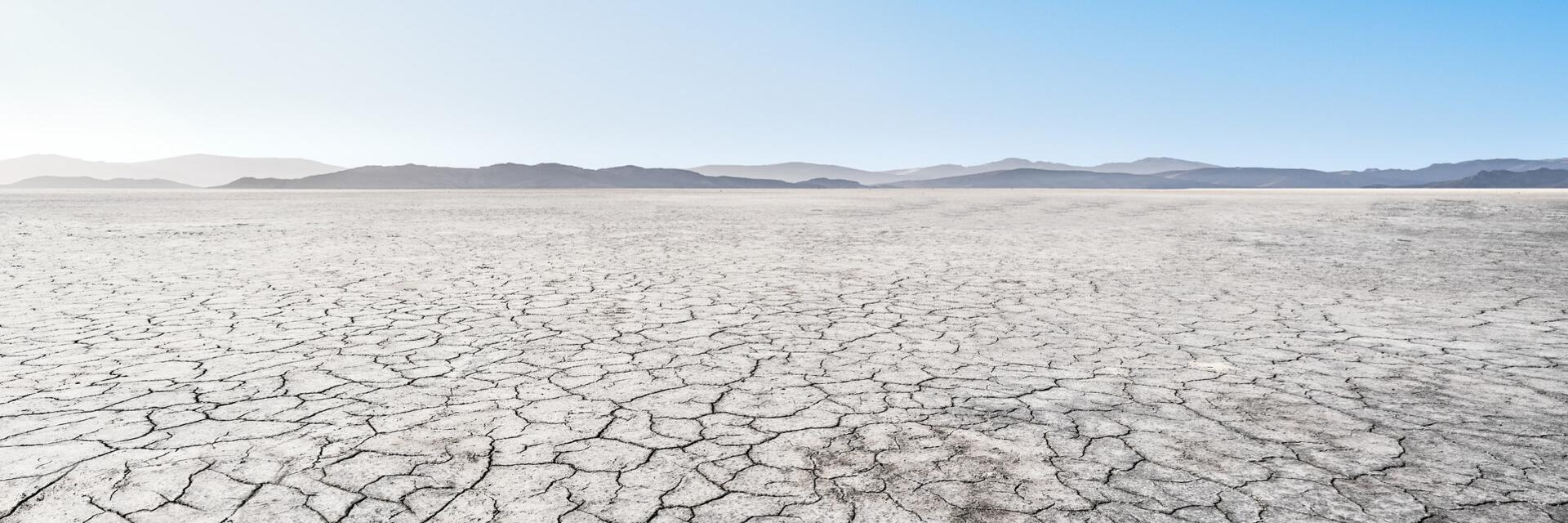
Desertification
Desertification affects 27.4 percent of China’s land, impacting about 400 million people.
Credit: Xuanyu Han / Getty Images
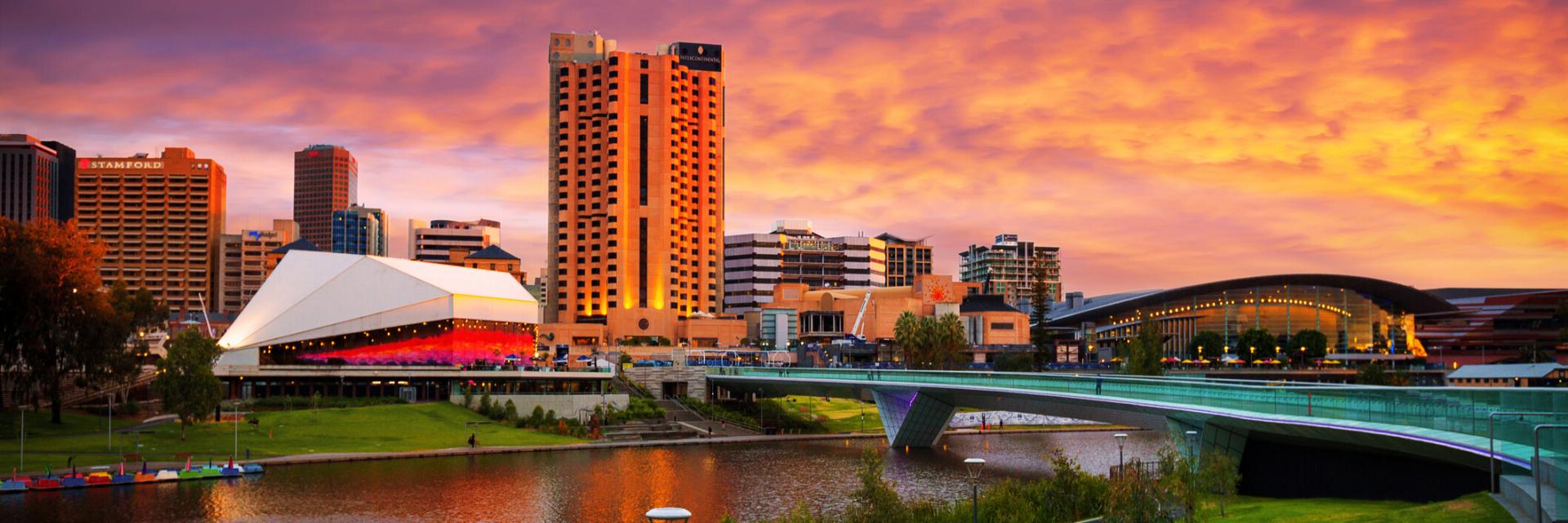
Efficiency
As part of Adelaide's commitment to net zero by 2025, the city is powering its municipal operations with 100% renewable energy, making buildings more energy efficient, investing in energy storage technology, harnessing biogas from wastewater treatment plants, promoting the uptake of hybrid and electric vehicles, and promoting more cycling and walking.
Credit: Artie Photography (Artie Ng) / Getty Images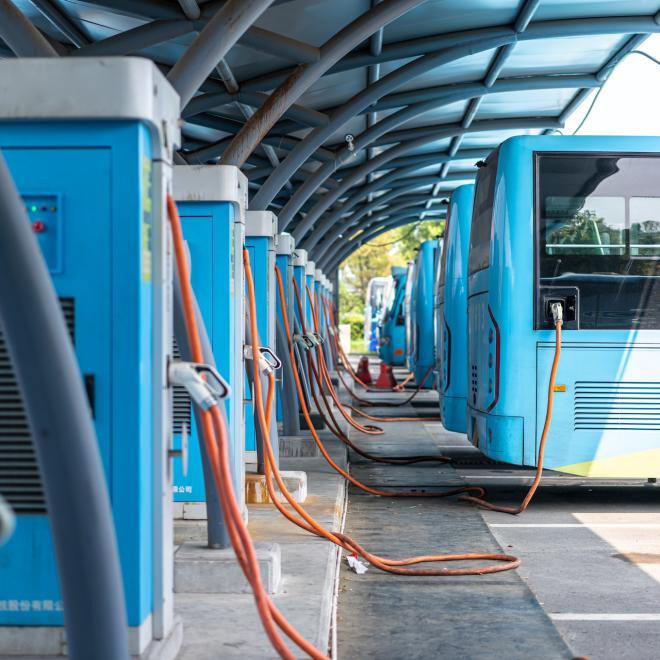

Electric Vehicles
Blue EV buses charging.
Credit: THINK b / Adobe Stock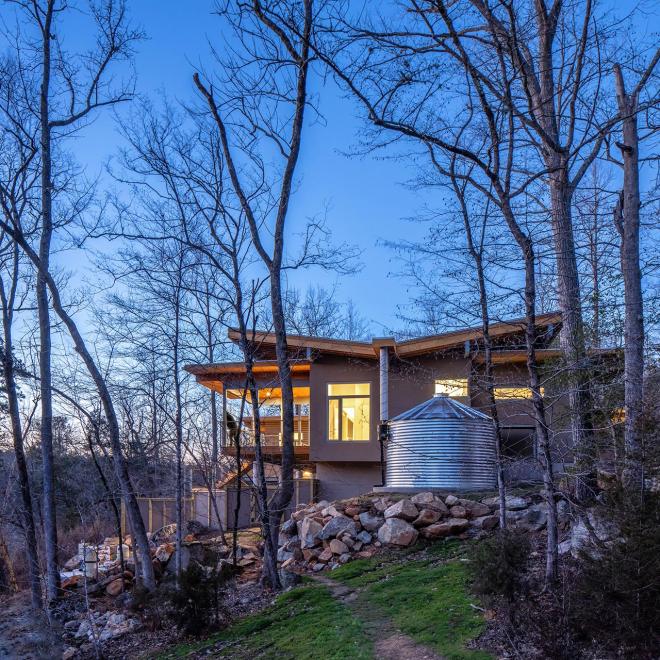
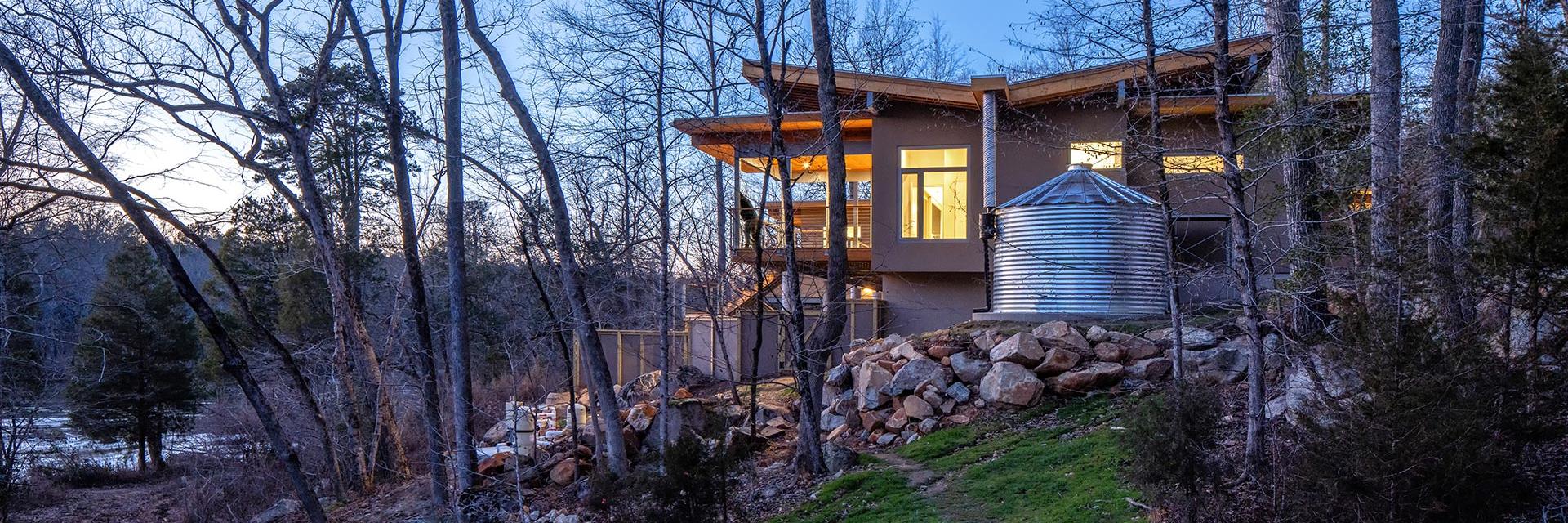
Electrify Everything
The Haw River House is a 2,600-square-foot, net-zero home located in North Carolina. Its rooftop solar array provides all of its electricity. Insulation, passive house design, energy-recovery ventilators, and solar reflective shades improve energy efficiency and help maintain a constant temperature. A geothermal heat pump handles the rest of the heating and cooling needs. It is also water independent; a small well supports a rainwater collection and purification system that, when full, can provide water for 230 days.
Credit: Tzu Chen Photography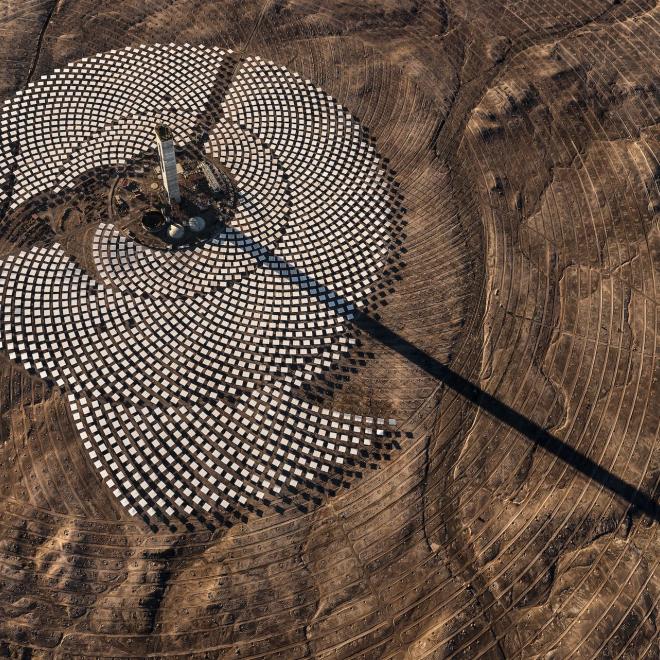
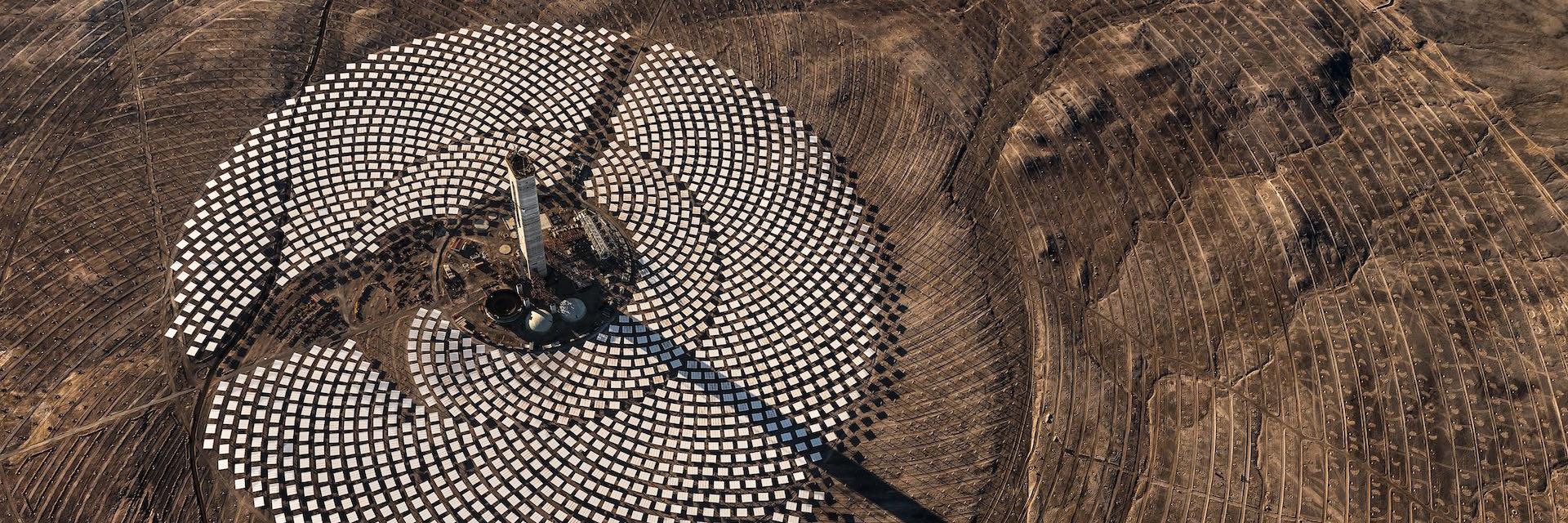
Energy Storage
This is the first stage of the now completed Cerro Dominador concentrated solar power plant situated in the Maria Elena Commune in the Atacama Desert, Chile. The molten salt technology employed in the plant can store up to eighteen hours of electrical generation capacity, which allows for a continuous flow of solar energy twenty-four hours a day. The completed plant covers 1,750 acres and contains 10,600 heliostats that automatically track the sun.
Credit: Jamie Stilling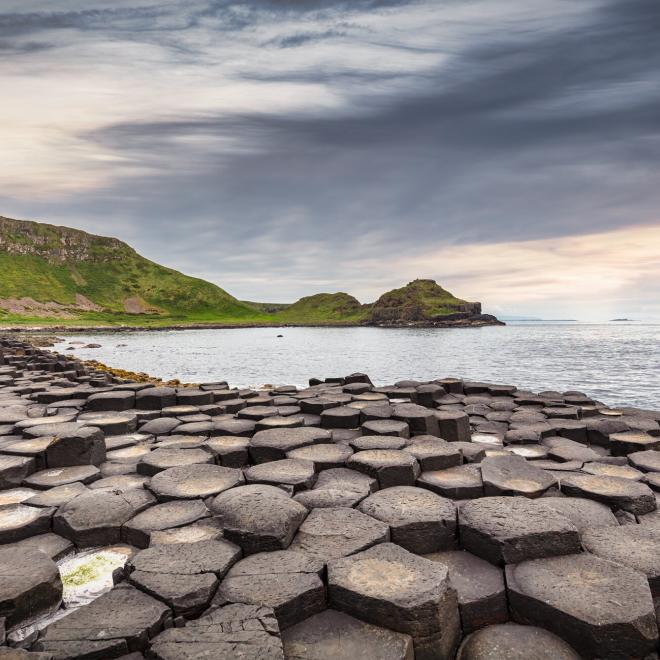
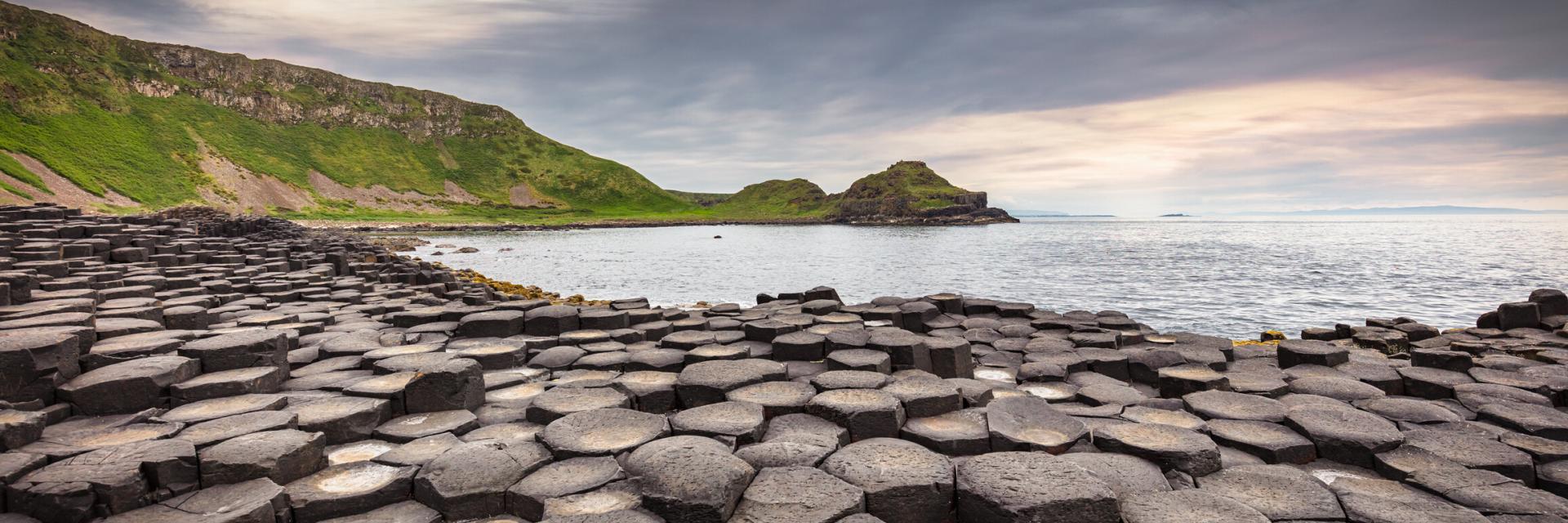
Enhanced Weathering
Basalt columns are natural pillars made of hardened lava, caused by the contraction of volcanic rock as it cools. Northern Ireland.
Credit: Alexander Hafemann / Getty Images
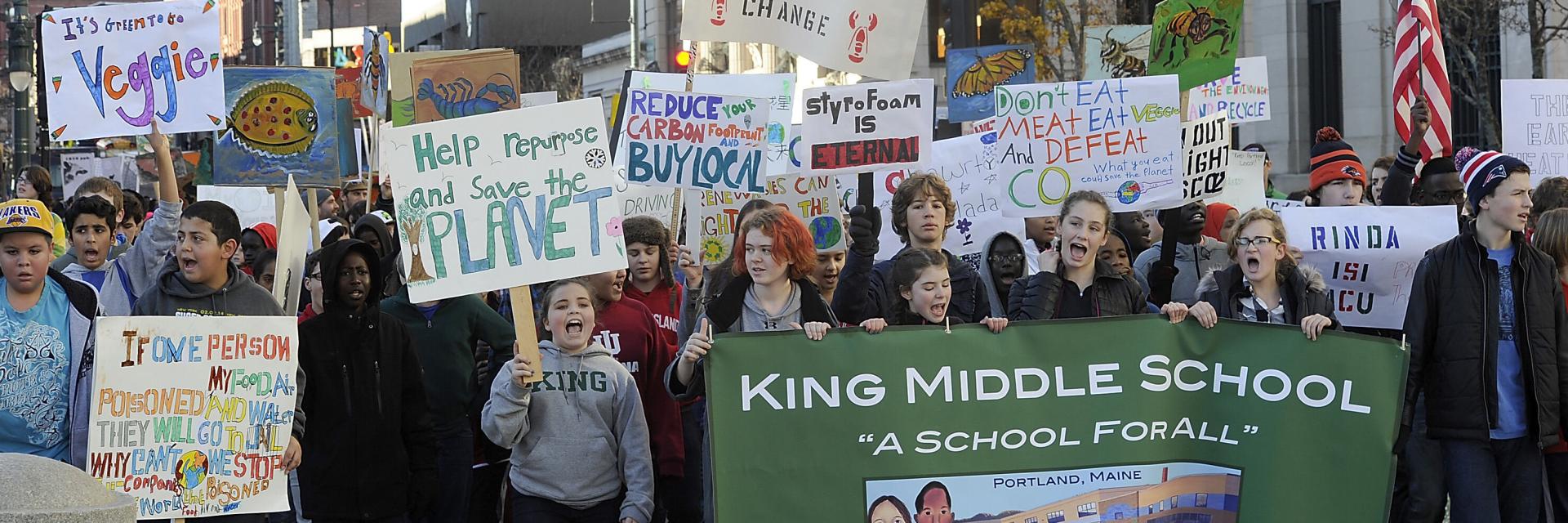
Environmental Education
400 students from King Middle School marched from the school down Congress to Portland City Hall to promote climate change awareness.
Credit: Gordon Chibroski/Portland Portland Press Herald via Getty Images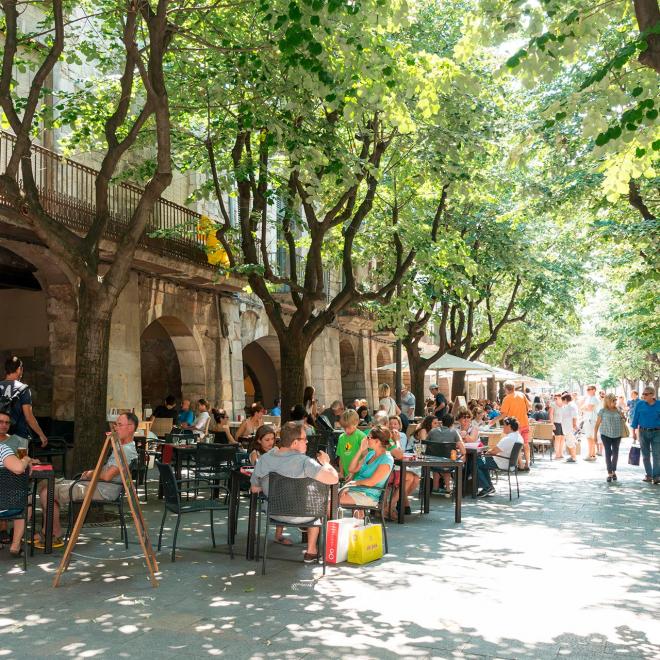
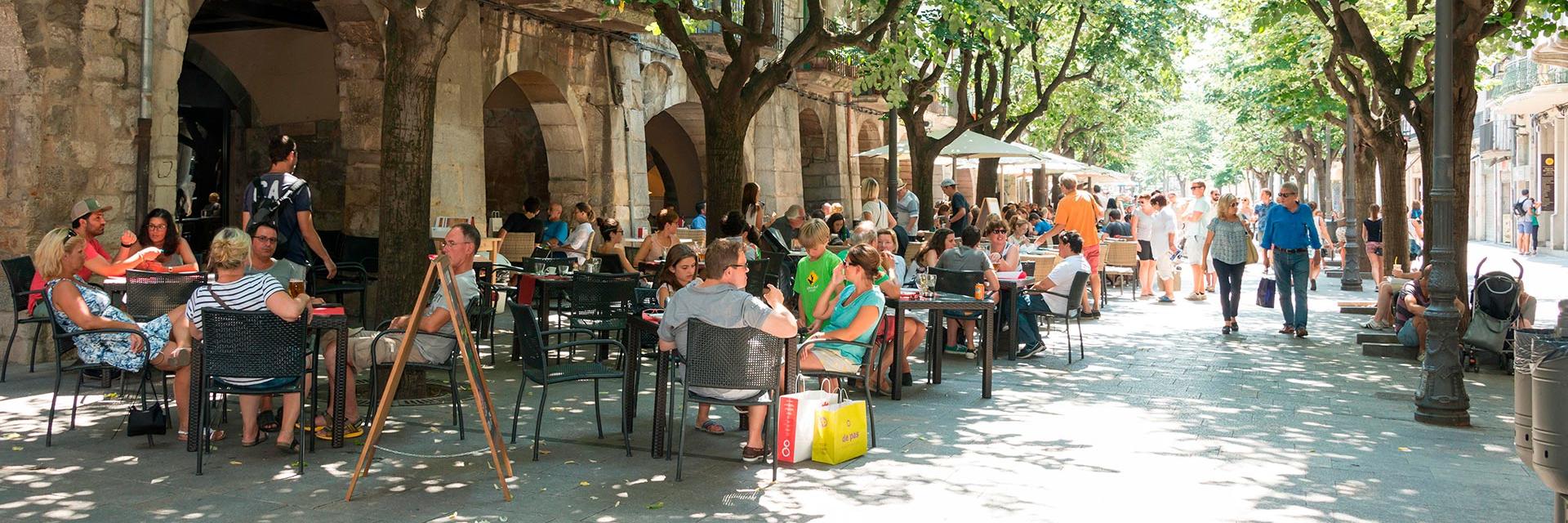
Fifteen-Minute City
La Rambla de la Llibertat, in the old town of Girona, Catalonia, Spain.
Credit: Greg Balfour Evans / Alamy Stock Photo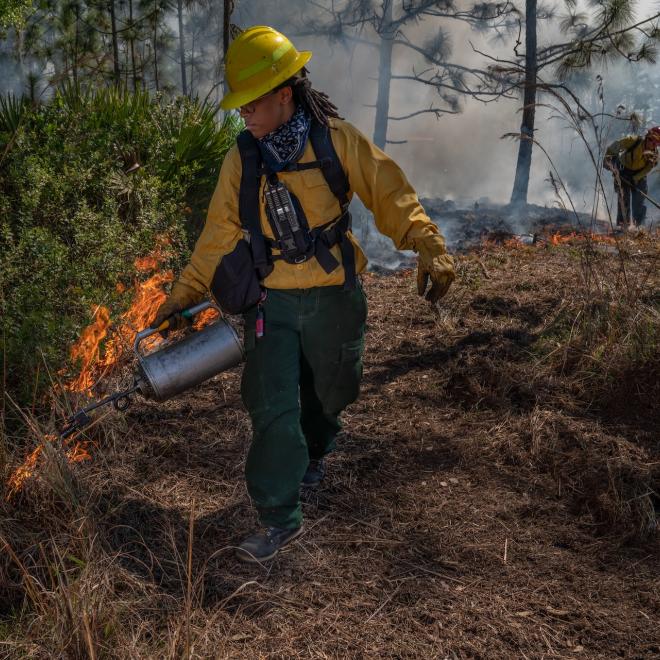
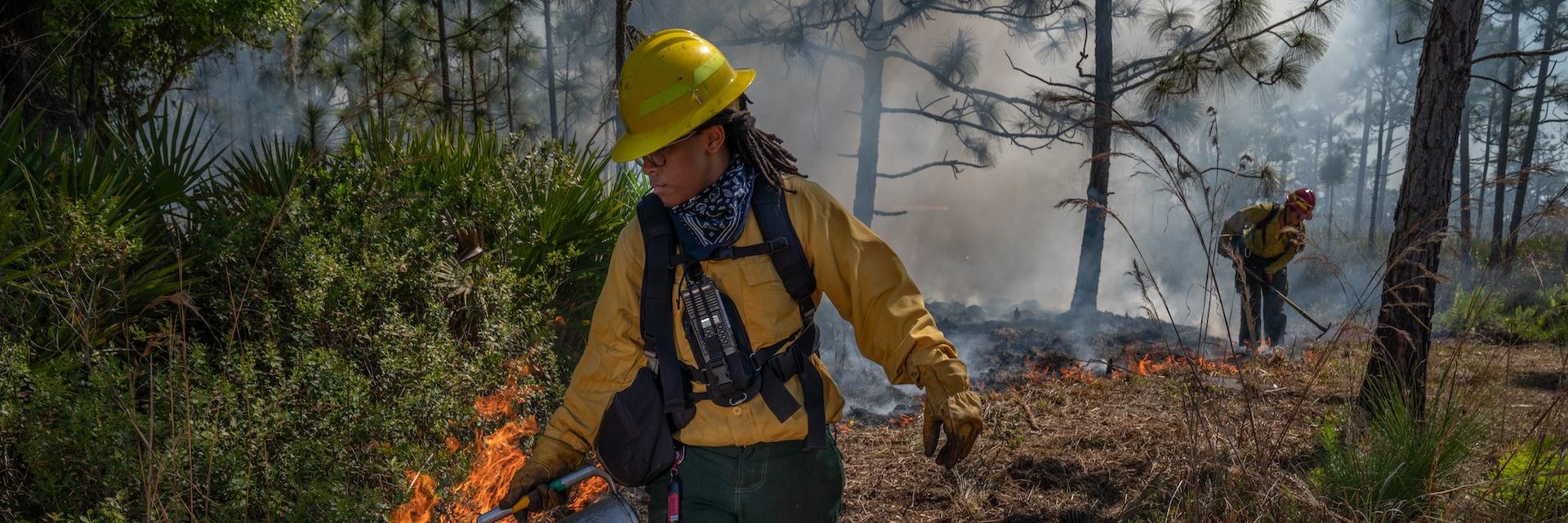
Fire Ecology
Nature Conservancy fire worker Char’rese Finney uses a drip torch to start a controlled burn to manage a longleaf pine forest in central Florida.
Credit: Carlton Ward Jr. / Nature Conservancy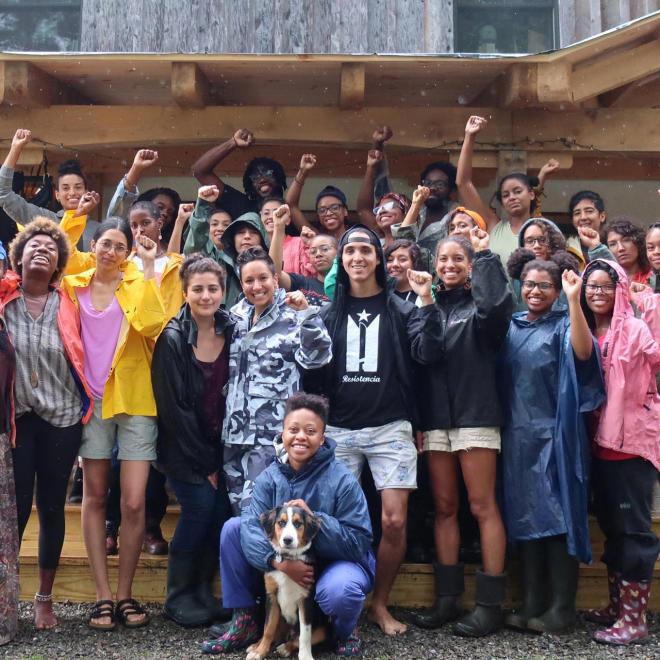
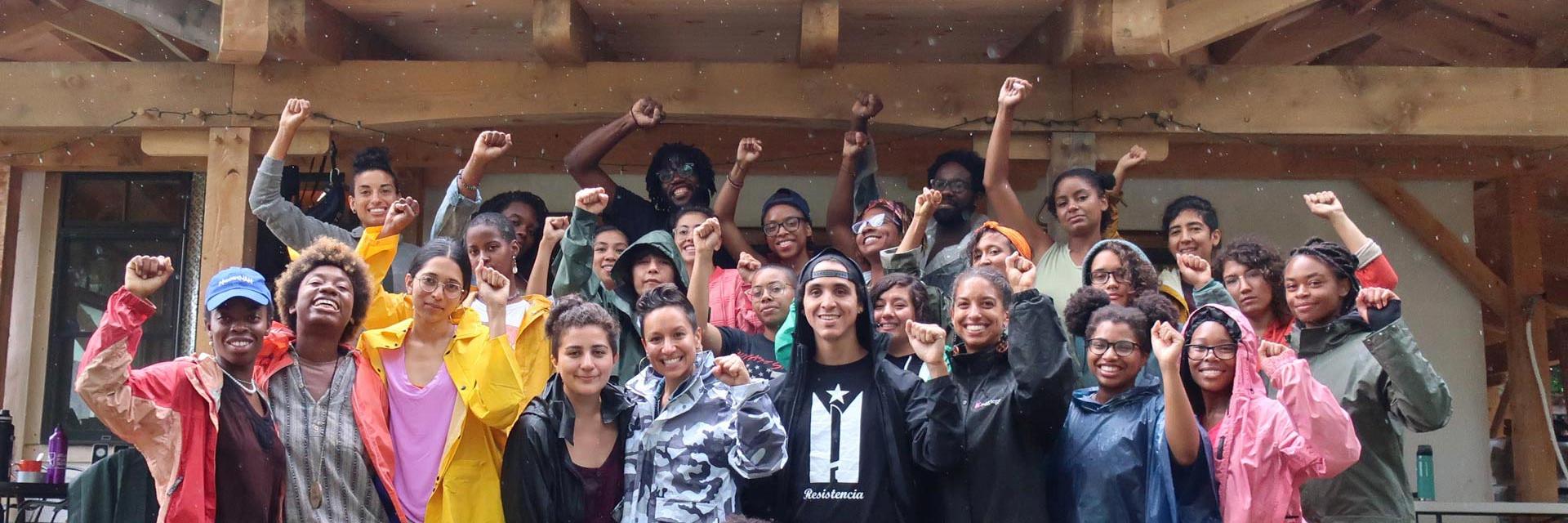
Food Apartheid
Young farmers at Soul Fire Farm near Albany New York. Founded by Leah Penniman, Soul Fire demonstrates, practically and visibly, how regeneration connects health, nourishment, soil, society, education, and a renewed sense of dignity and self.
Credit: Leah Penniman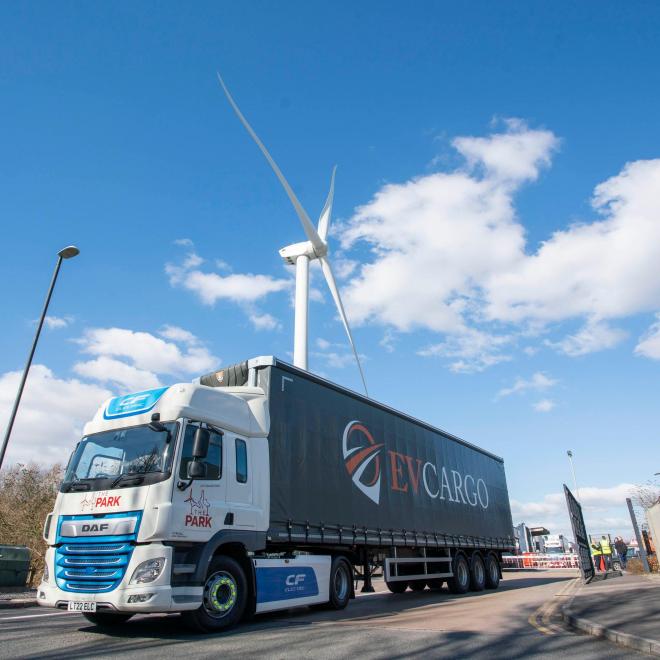
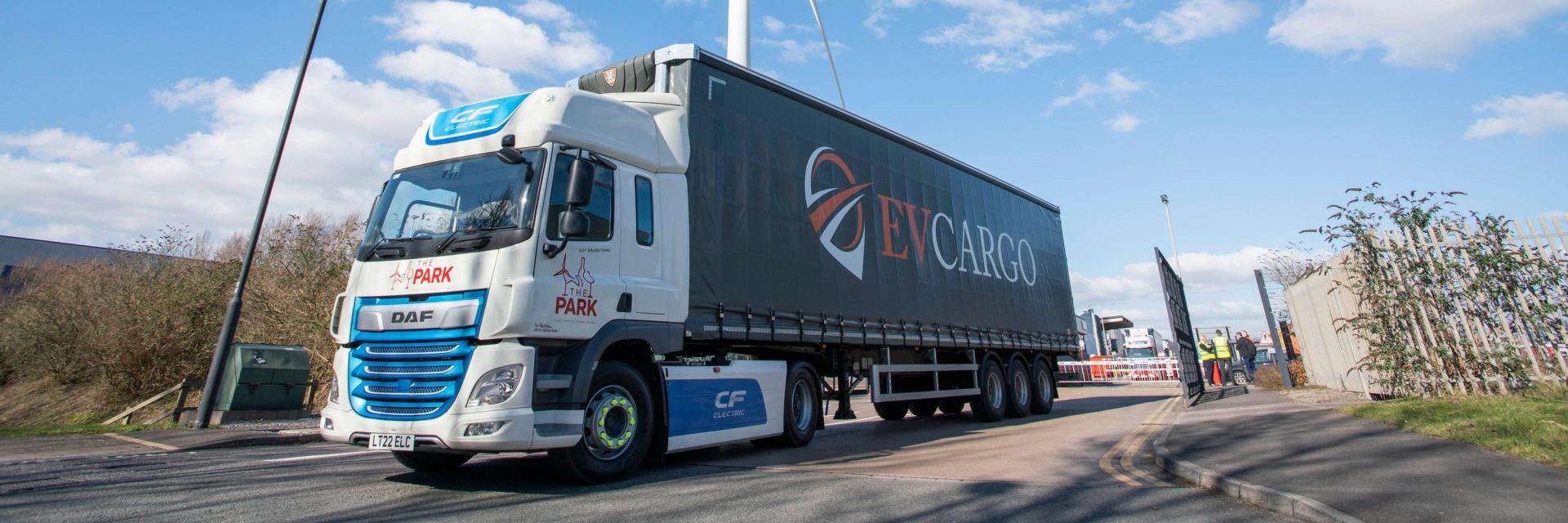
Freight and Trucking
A fully electric heavy goods truck (DAF) at The Parks Bristol headquarters.
Credit: PA Images / Alamy Stock Photo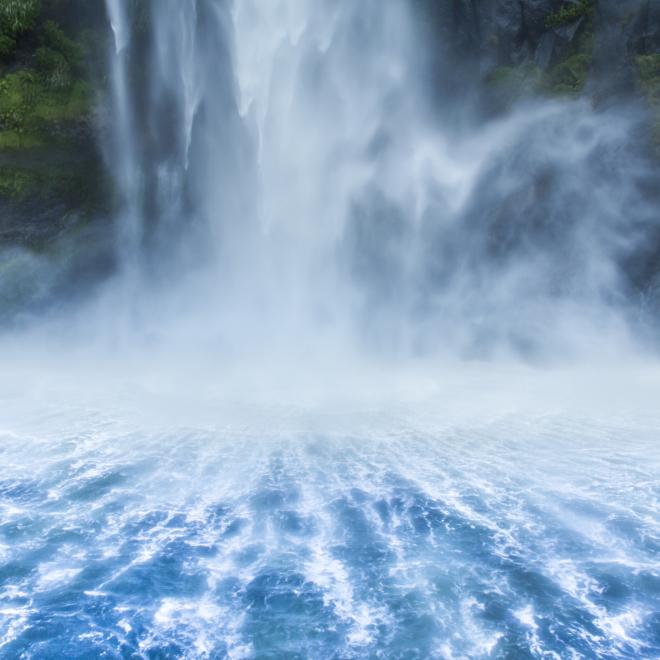
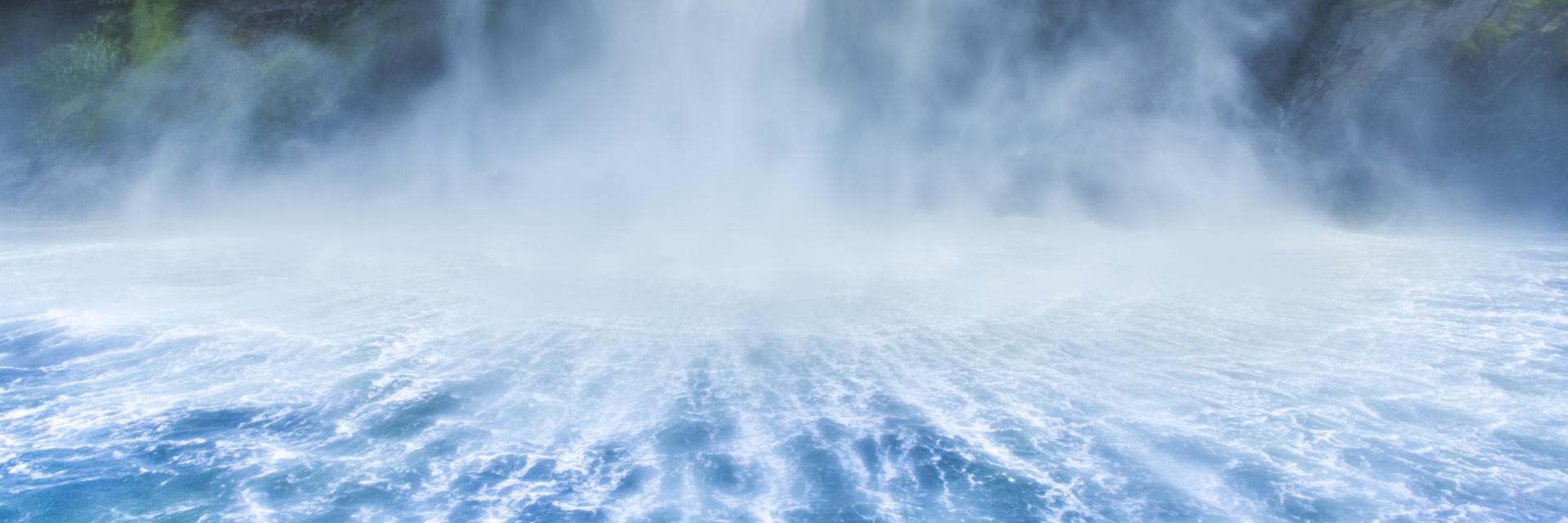
Freshwater
Milford Sound is one of New Zealand's natural wonders; the fresh waterfall creates symmetrical patterns in fjord water and is a popular tourist destination.
Credit: picturegarden / Getty Images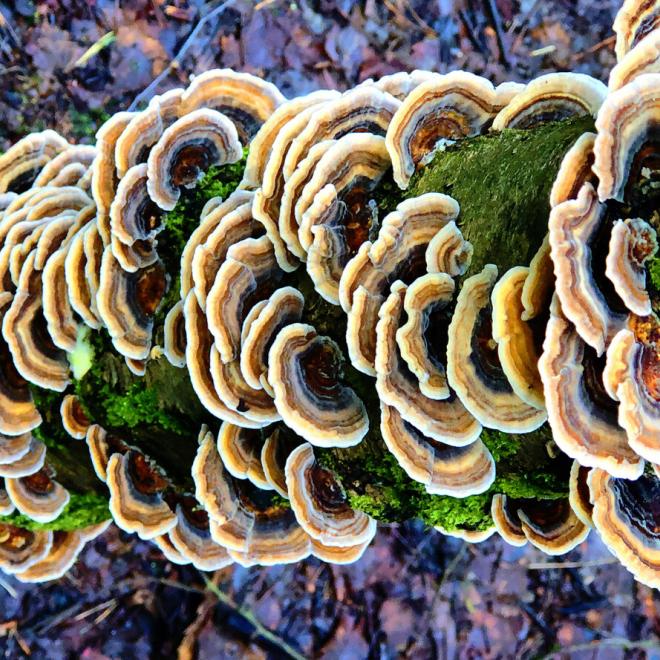

Fungi
Tree fungi (Coriolus versicolor) - commonly found on dead wood and often referred to as the turkey tail mushroom. Though it's not edible, it does contain polysaccharide-K, widely used for medicinal purposes.
Credit: ©Daniela White Images / Getty Images
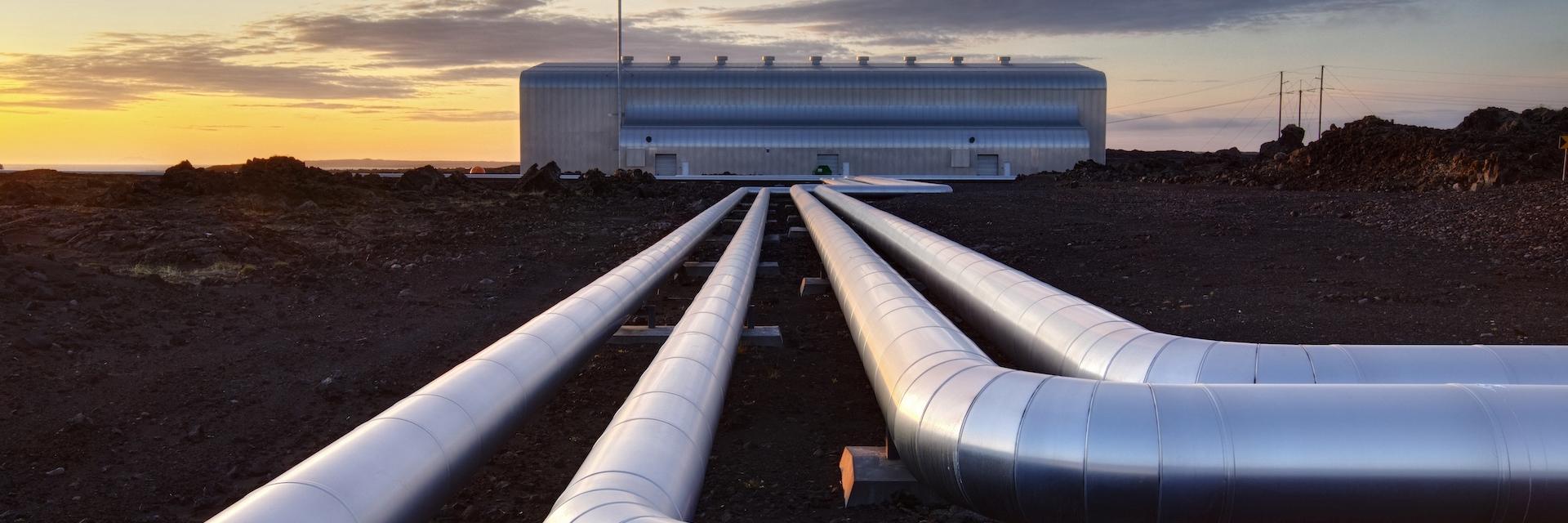
Geothermal
View of pipework and Geothermal power plant, Reykjanesvirkjun, South West Iceland.
Credit: Guy Edwardes / Nature Picture Library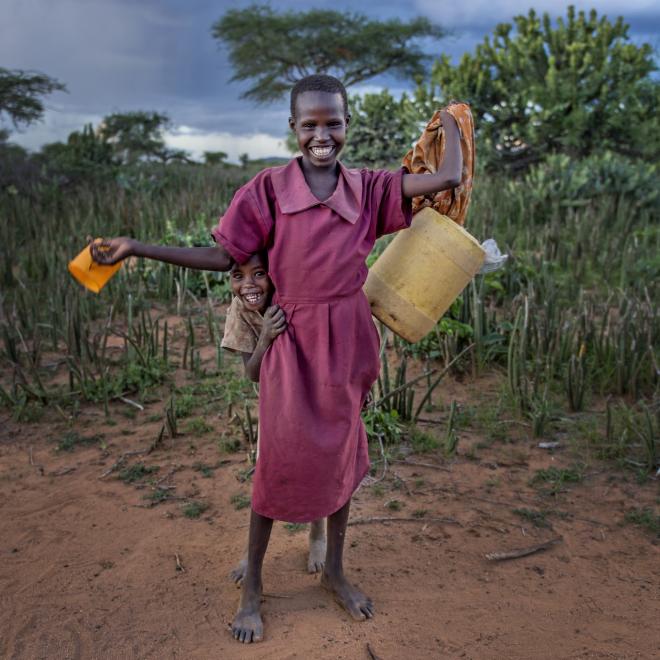
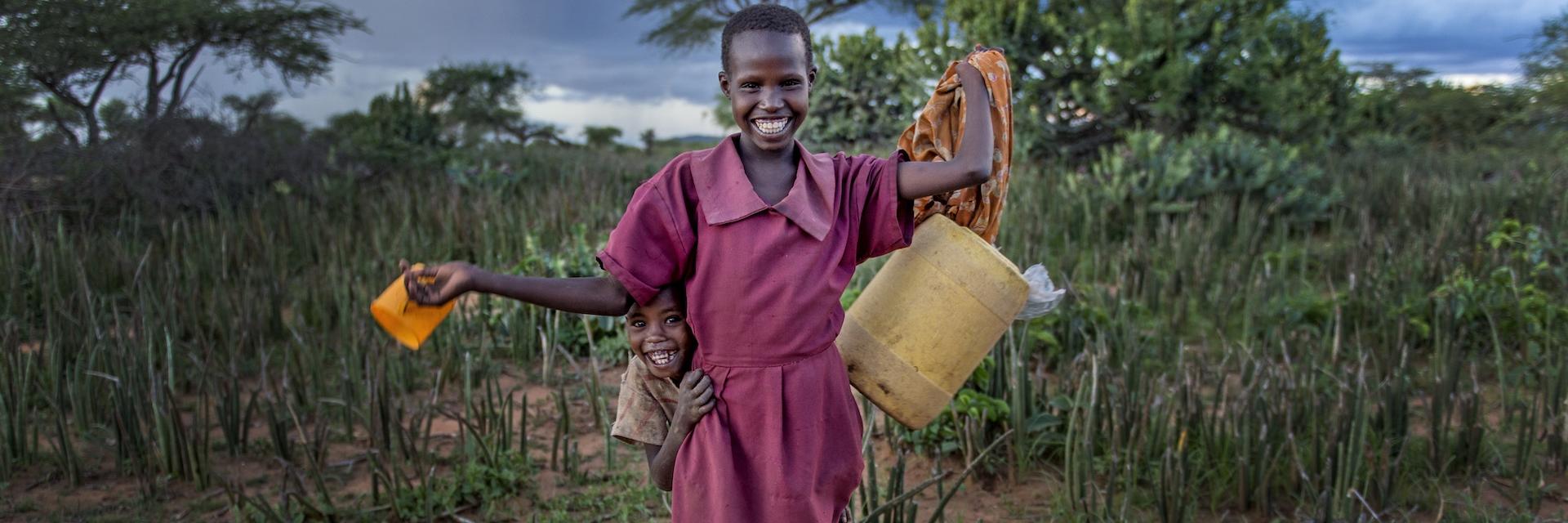
Girls Education
Sisters returning home from the Ewaso Primary School in Ewaso, Laikipia, in Northern Kenya. This and other local schools are funded by ecotourism revenues from the Loisaba Wilderness Conservancy.
Credit: Amy Vitale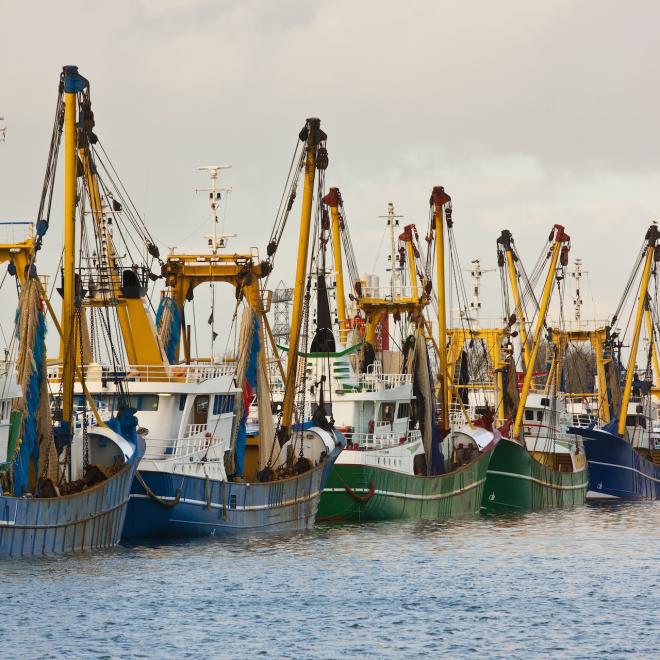
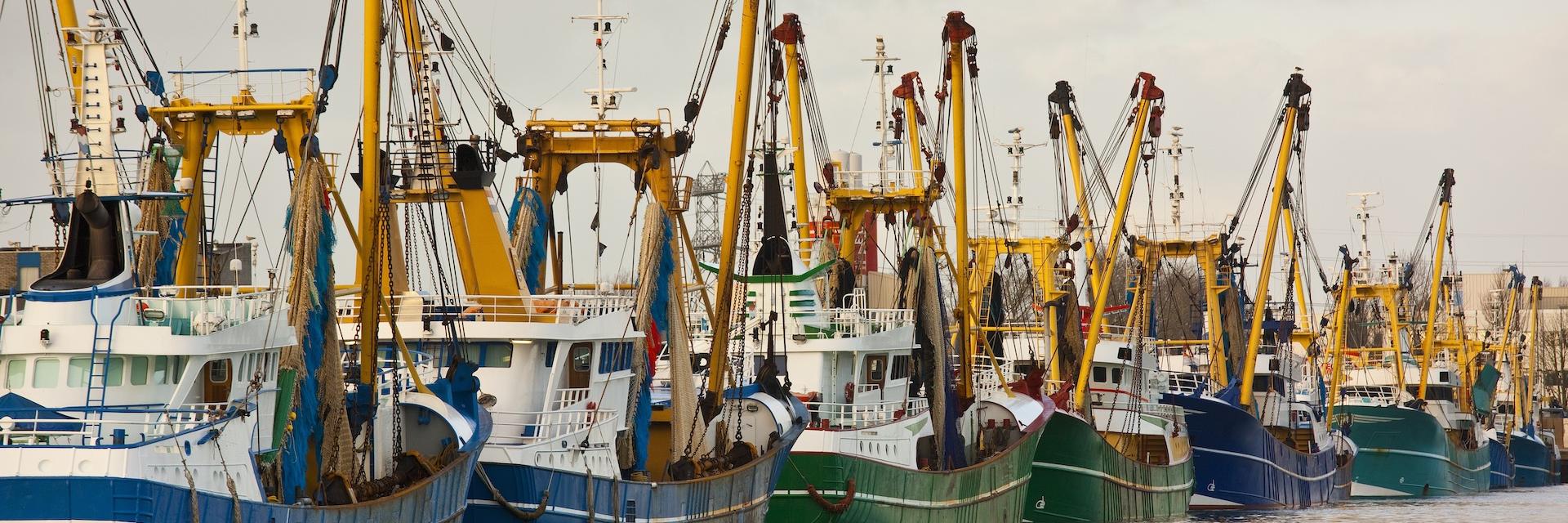
Global Fishing Fleets
Trawler fleet docked at pier in Middelburg / Netherlands.
Credit: Cavan Images / Getty Images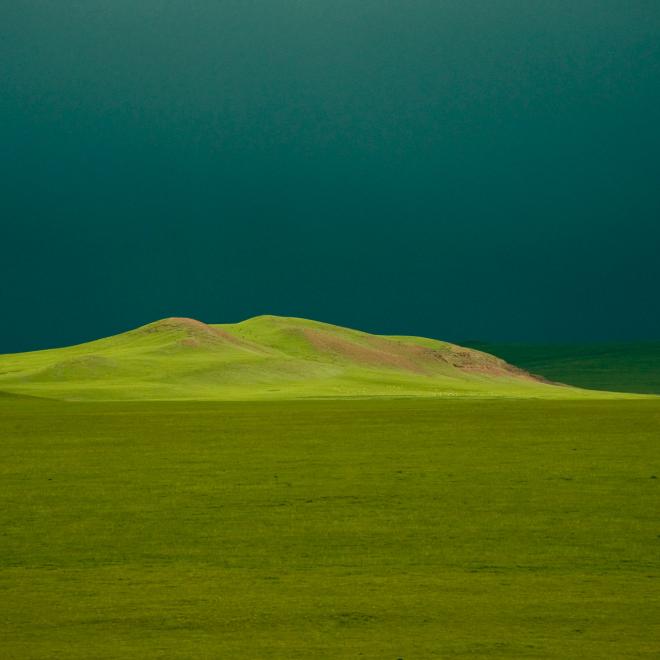

Grasslands
Sunlight on grasslands in the Tibetan Plateau at an elevation of over 13,000 feet.
Credit: Heather Angel / Nature Picture Library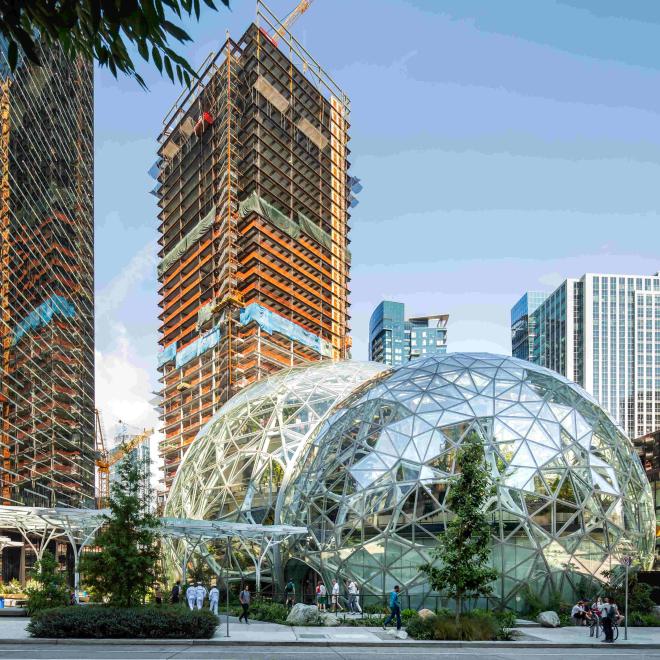
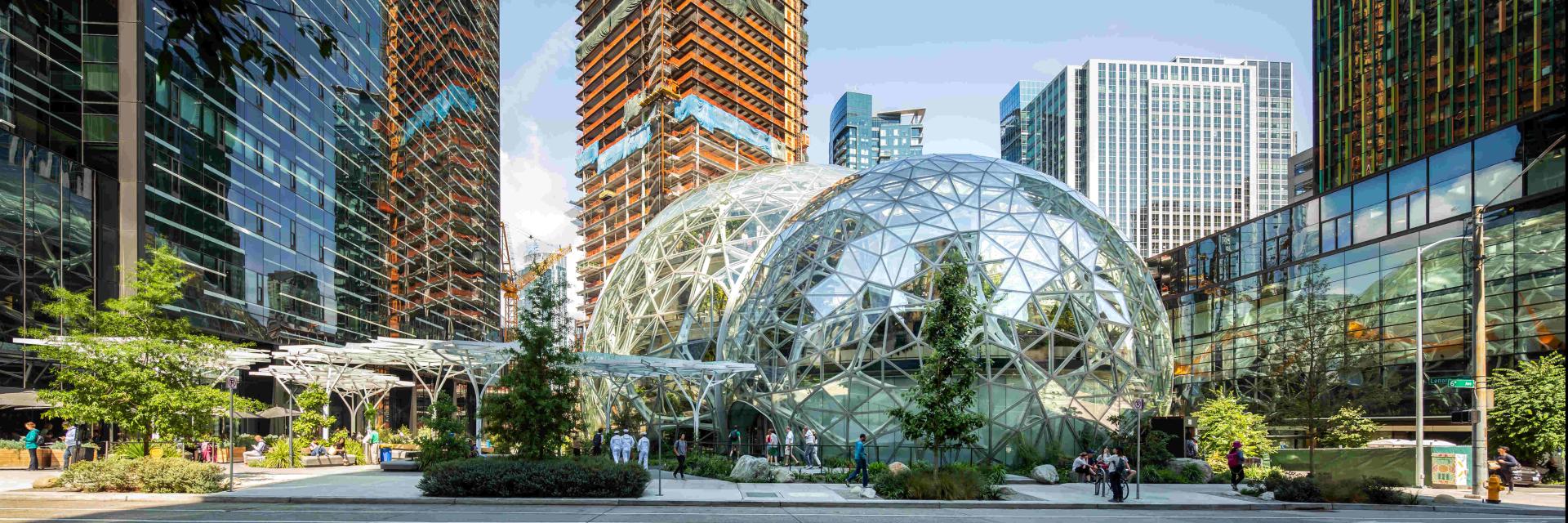
Green Cement
The Spheres building in Seattle is built with ECOPlanet low-carbon cement with 80% less CO2 inside.
Credit: NBBJ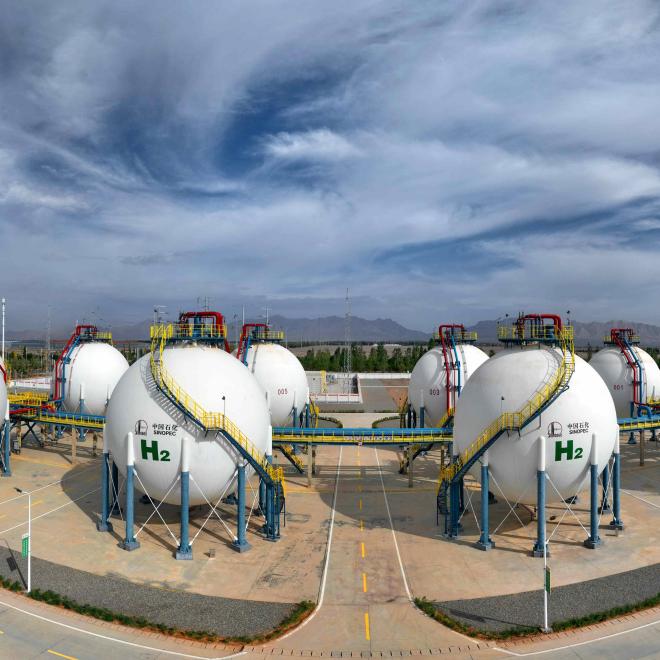
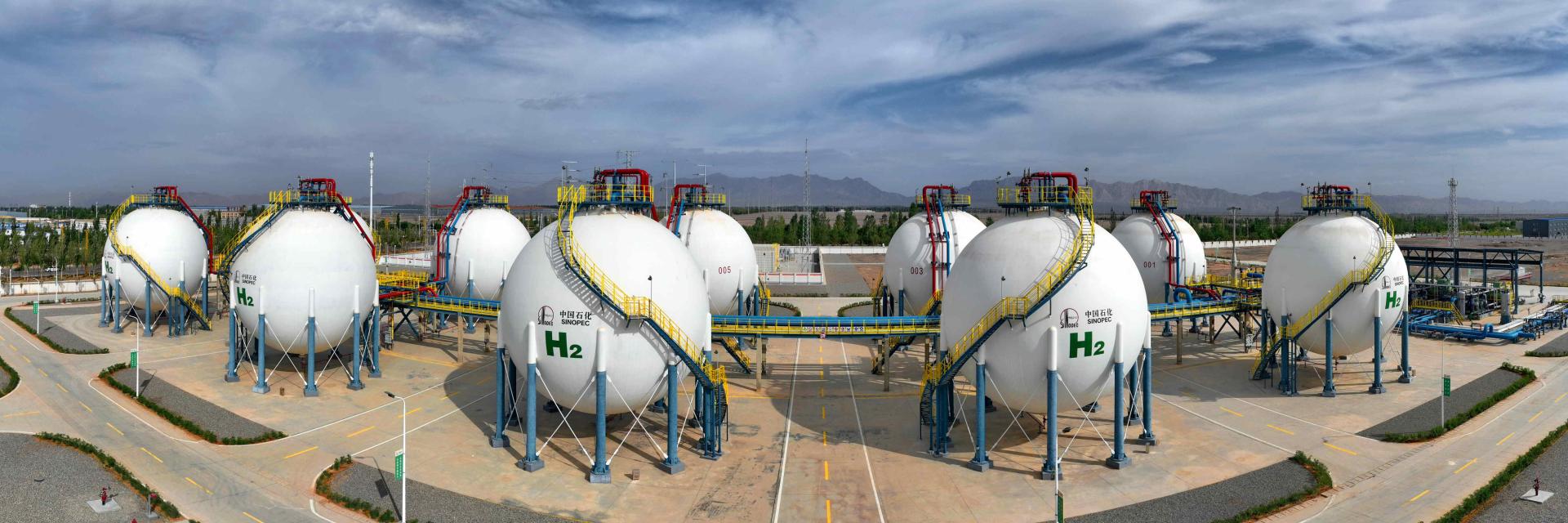
Green Hydrogen
China's largest solar green hydrogen facility. It can store 210,000 cubic meters of hydrogen and transport 28,000 cubic meters of hydrogen every hour.
Credit: VCG/VCG / Getty Images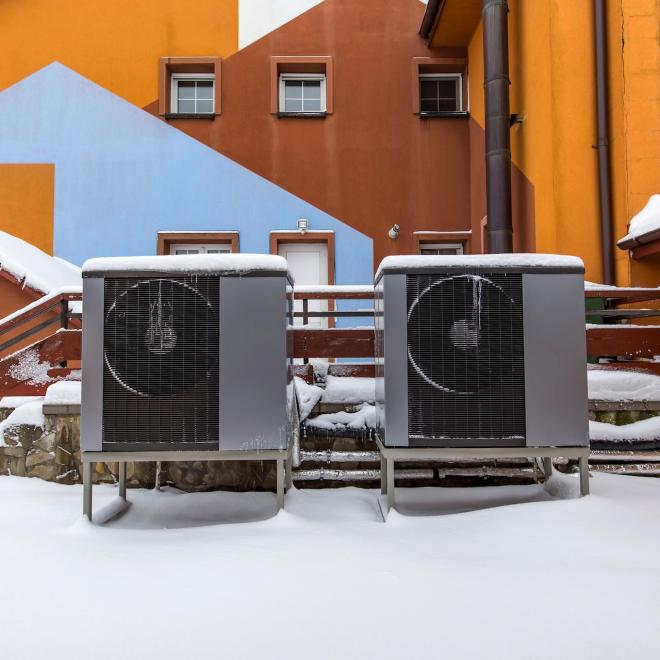
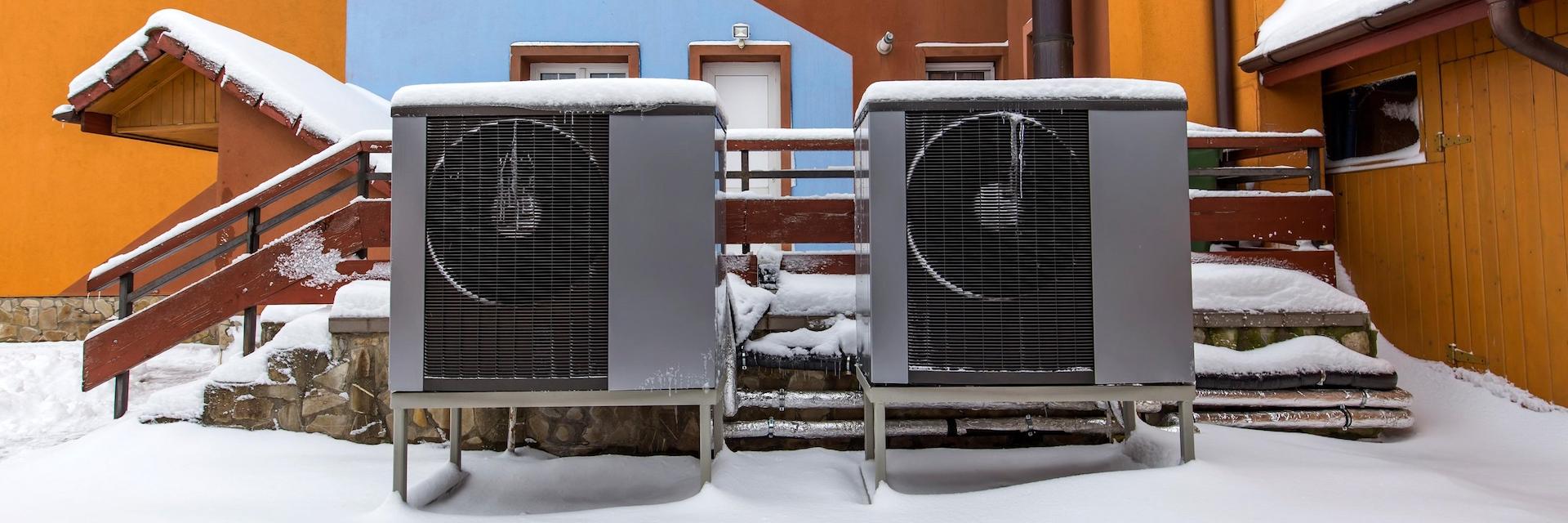
Heat Pumps
Two residential modern heat pumps buried in snow.
Credit: Radu Sebastian / Alamy Stock Photo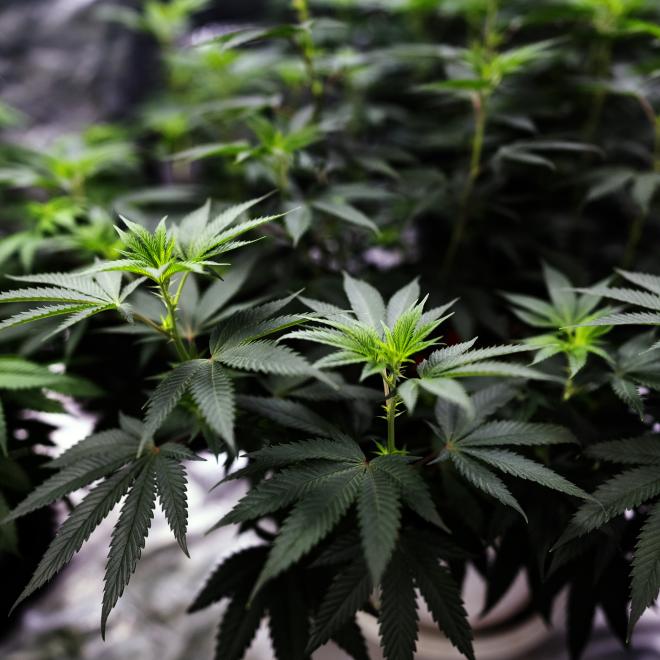
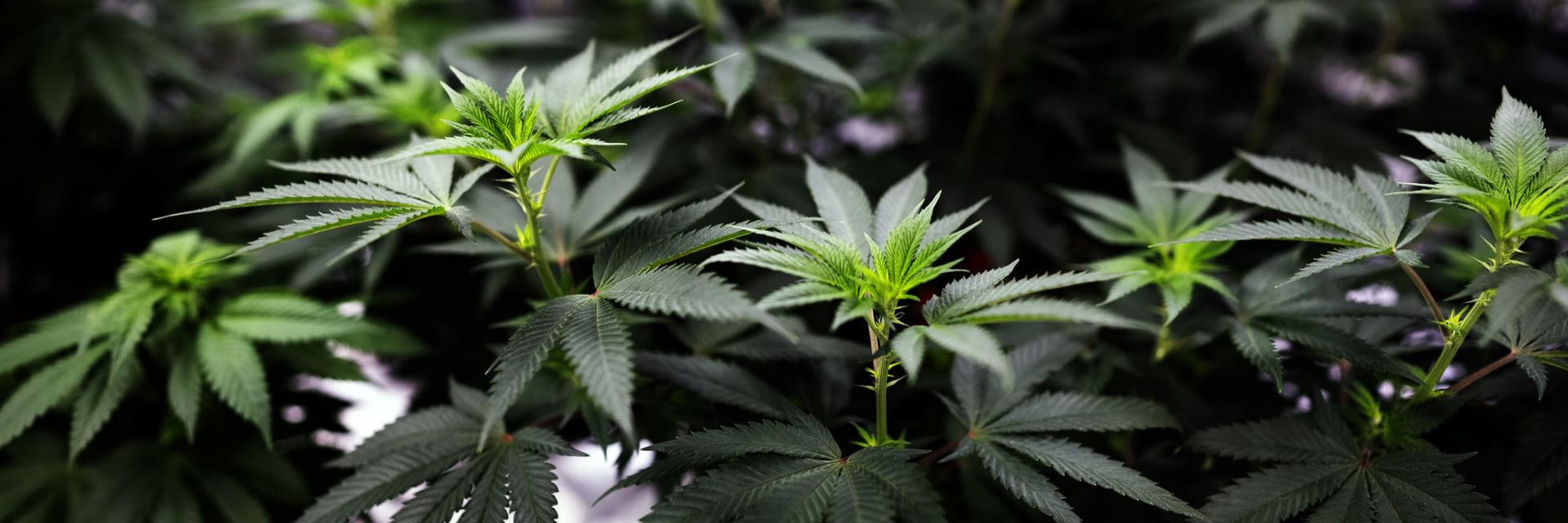
Hemp
Hemp plants (cannabis sativa) enhance soil health and sequester carbon dioxide twice as effectively as trees.
Credit: skaman306 / Getty Images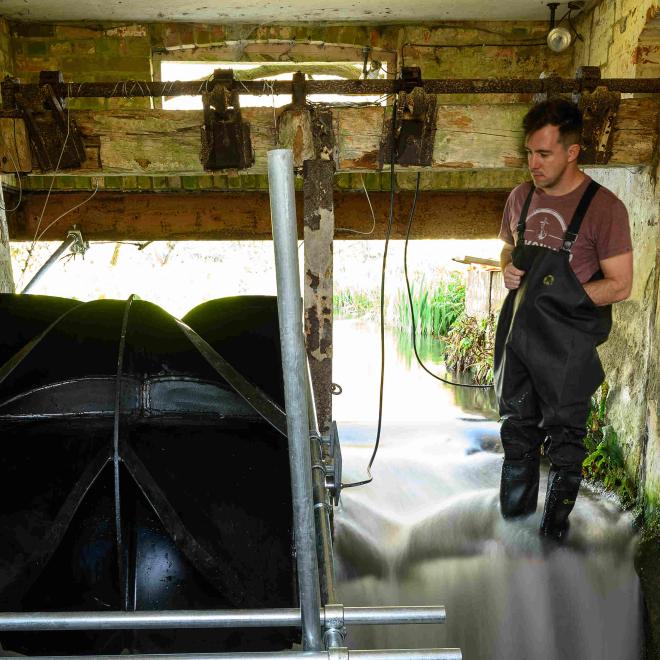
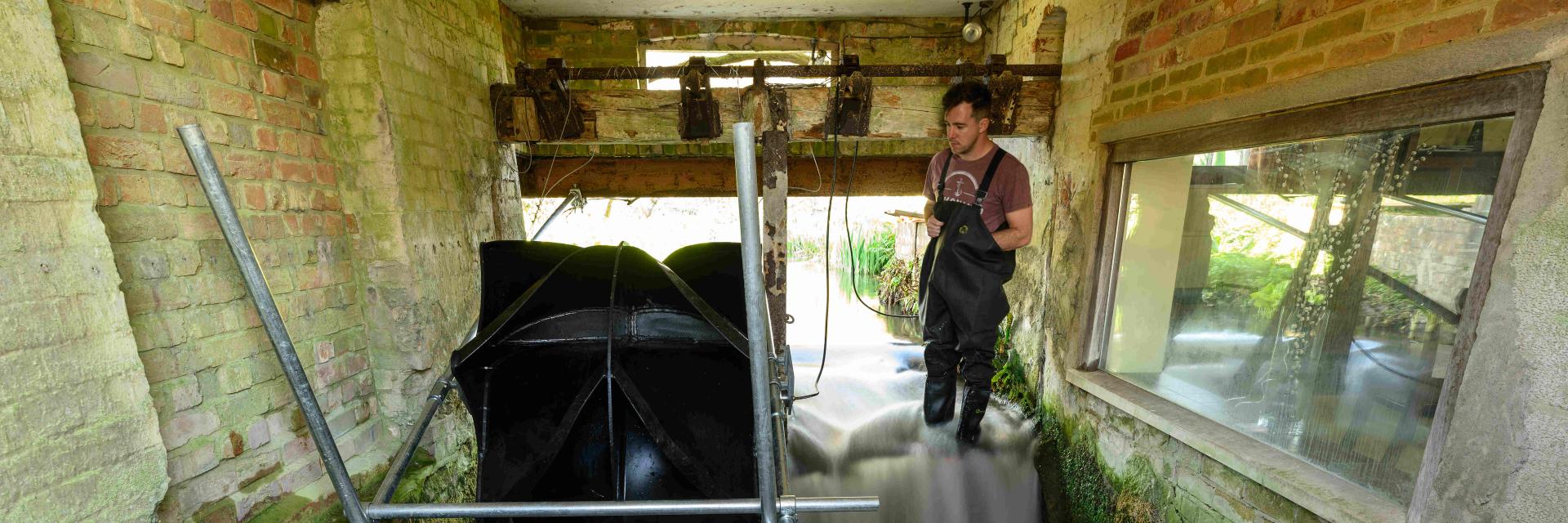
Hydropower
HOOK, HAMPSHIRE - APRIL 04: Senior Engineer Gregg Walker looks towards a "Picostream" floating turbine generator during installation in an old water mill on April 04, 2023, in Hook, Hampshire. Amid persistently high energy prices and environmental concerns, interest has grown in alternative energy sources. While most of the attention is aimed at solar and wind energy, hydroelectricity is seeing an increase in available options. Founded by Henry Reily-Collins, the Fish Friendly Hydro Company is in the process of developing a floating hydropower turbine generator that can be installed in flowing water on residential and commercial properties, with their 1000-watt PicoStream producing the same amount of electricity in a year as a 40 solar panel array or a 4kW wind turbine. Designed specifically to have a very low impact on the ecology of the waterway, the turbine floats on the surface, meaning the river requires no harmful damming.
Credit: Leon Neal / Getty Images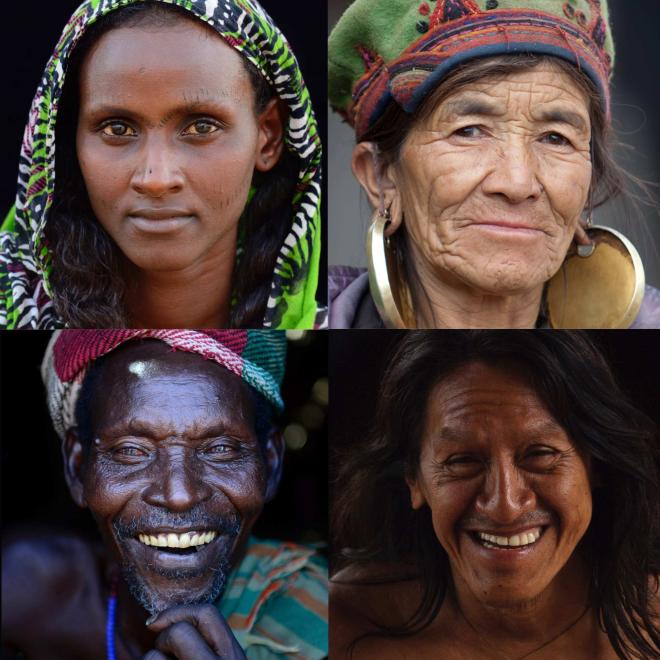
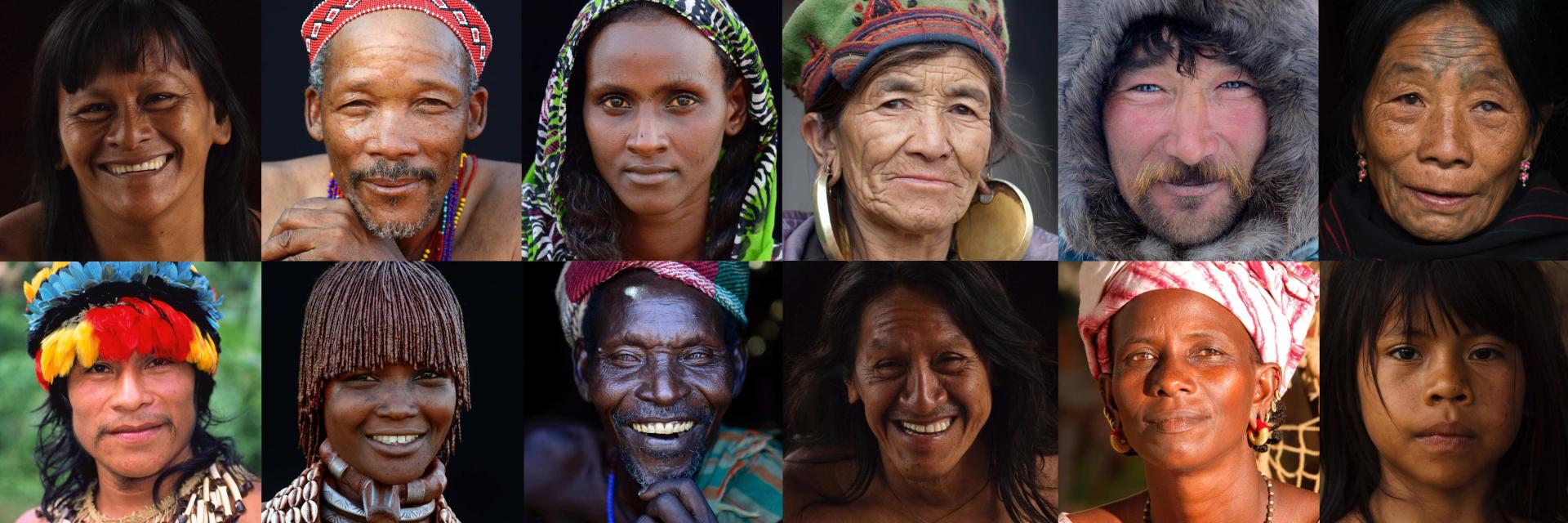
Indigenous Sovereignty
(Left to right, top to bottom) Waorani woman, Bameno Community, Yasuni National Park, Ecuador. Naro San man, Kalahari, Ghanzi region,Botswana. Afar woman, Danakil Depression, Ethiopia. Tamang woman, Thuman, Langtang region, Nepal. Nenet reindeer herder, Yar-Sale district, Yamal, northwest Siberia. Chang Naga woman, Tuensang district, Nagaland, Northeast India. Záparo man, Llanchamacocha, Ecuadorian Amazon. Hamer woman, Omo Valley, Ethiopia. Arbore man, Lower Omo Valley, Ethiopia. Waorani man, Bameno Community, Yasuni National Park, Ecuadorian Amazon. Fulani woman, north Senegal, West Africa.Waorani Child, Bameno Community, Yasuni National Park, Ecuadorian Amazon.
Credit: Pete Oxford, Eric Baccega, Enrique López-Tapia / Nature Picture Library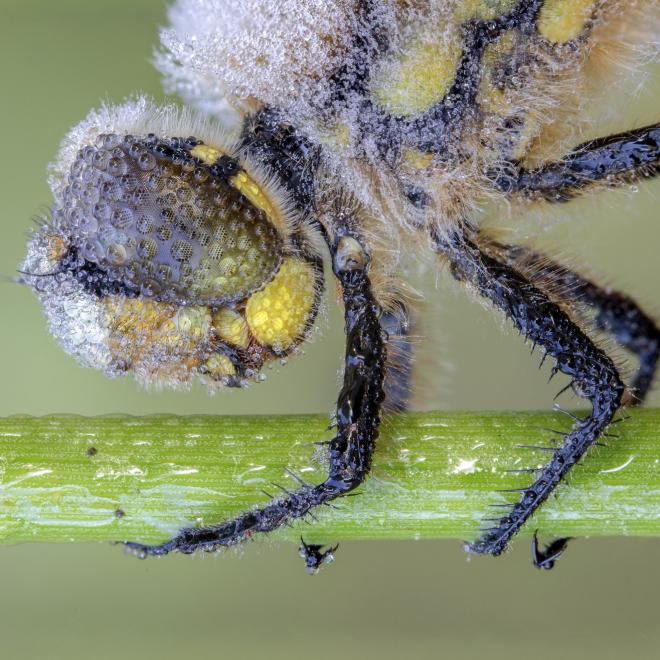
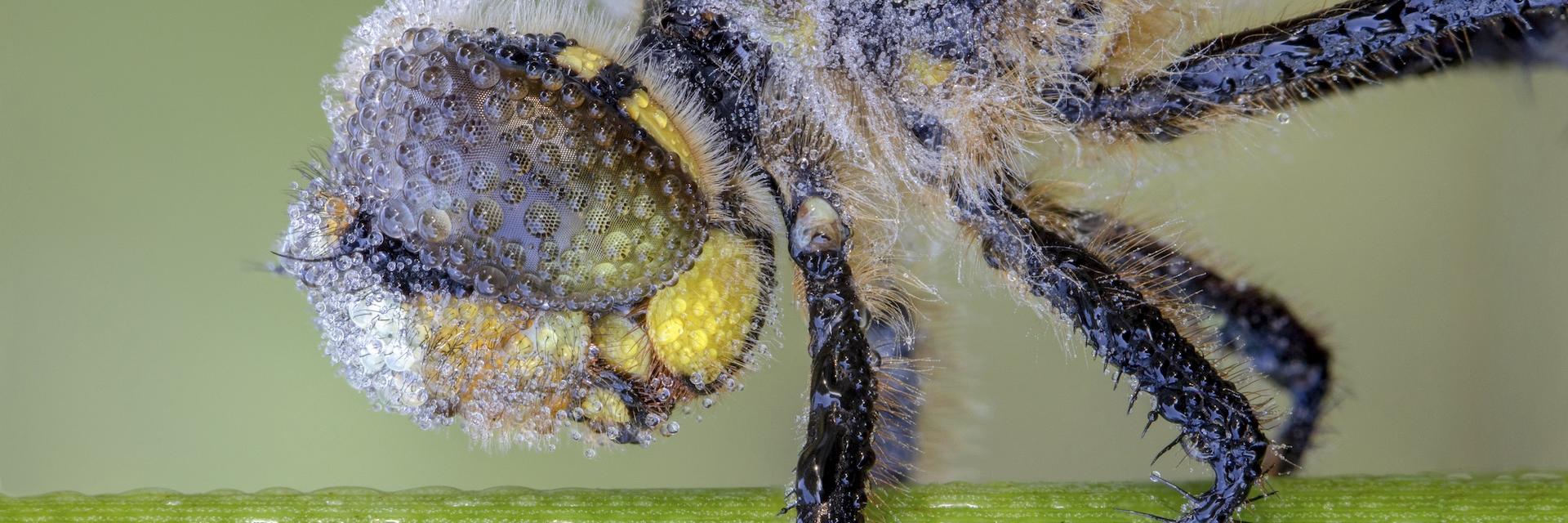
Insects
A four-spotted chaser (Libellula quadrimaculata) resting on a stem, covered in early morning dew.
Credit: Oliver Wright / Nature Picture Library
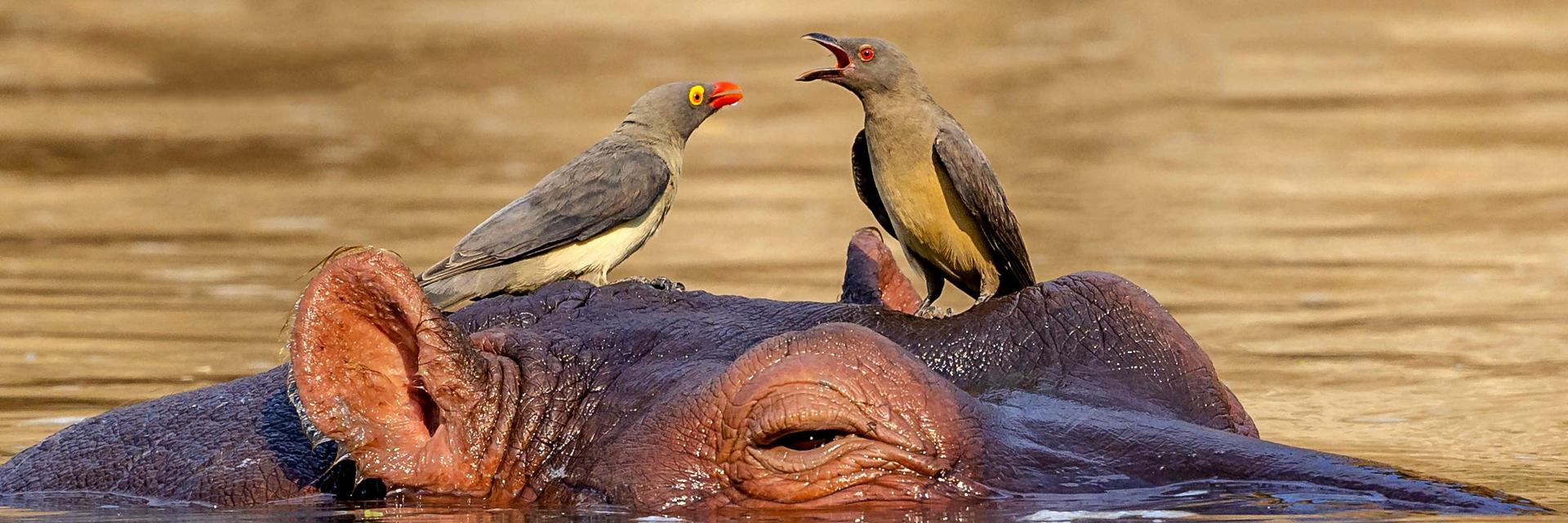
Keystone Species
Hippopotamus (Hippopotamus amphibius) with Red-bellied oxpeckers (Buphagus erythrorhynchus) on his head in river, Luangwa National Park, Zambia.
Credit: Klein & Hubert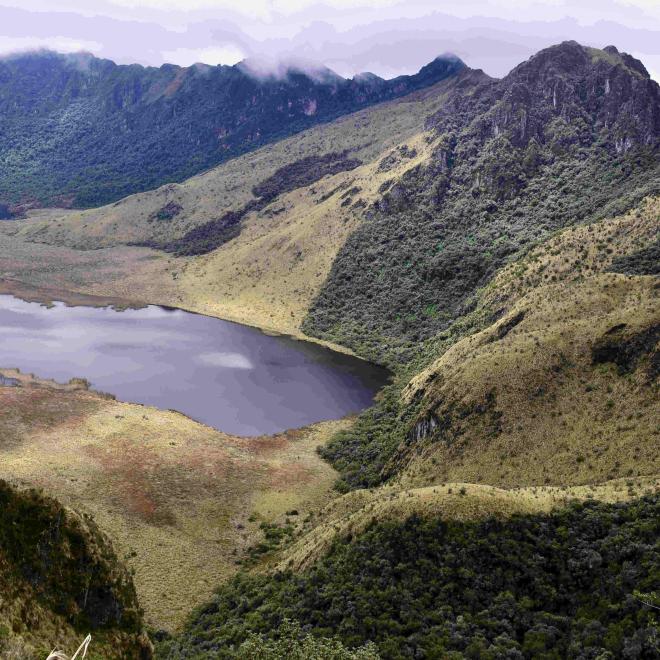
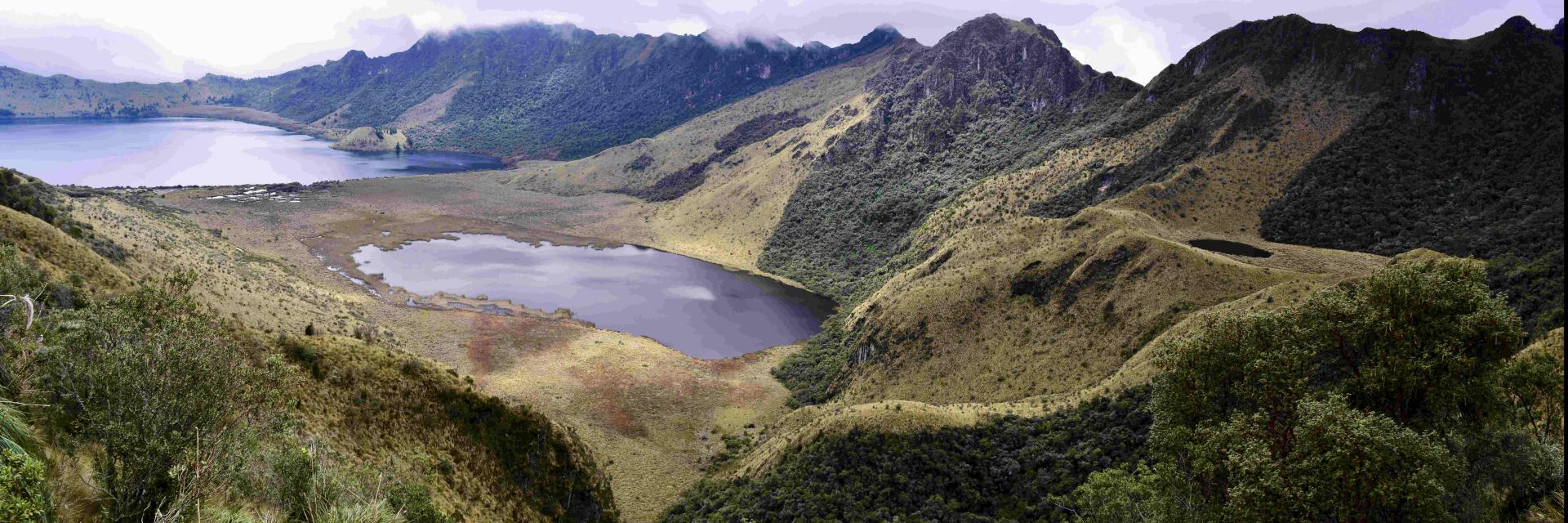
Land Protection
Pichincha - Mojanda Lagoons, Peru. An Aves y Conservación-protected area.
Courtesy of: Acción Andina
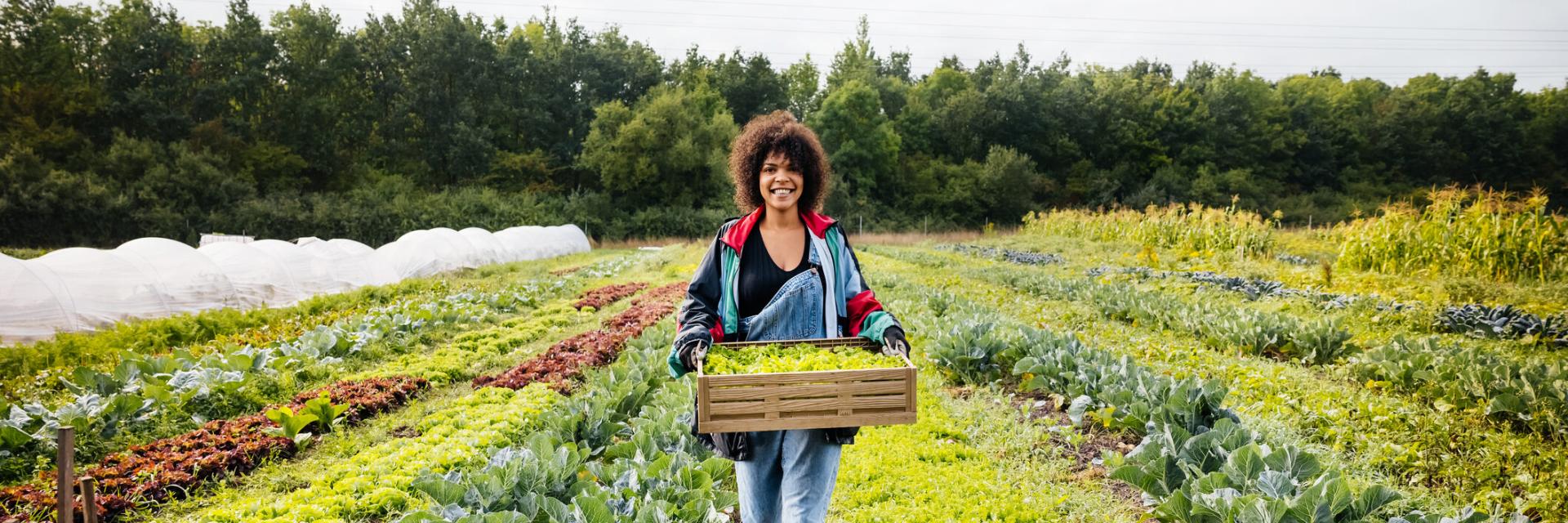
Localization
A woman carrying a crate of freshly harvested organic vegetables from her plot.
Credit: Tom Werner / Getty Images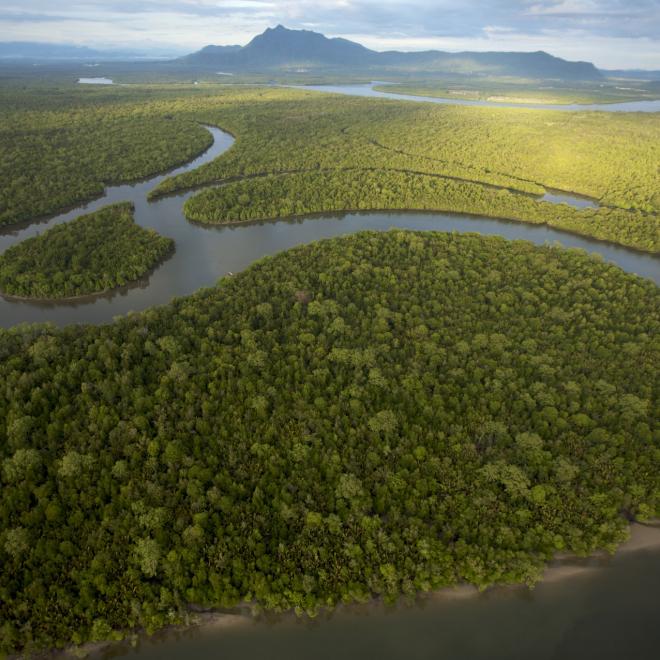
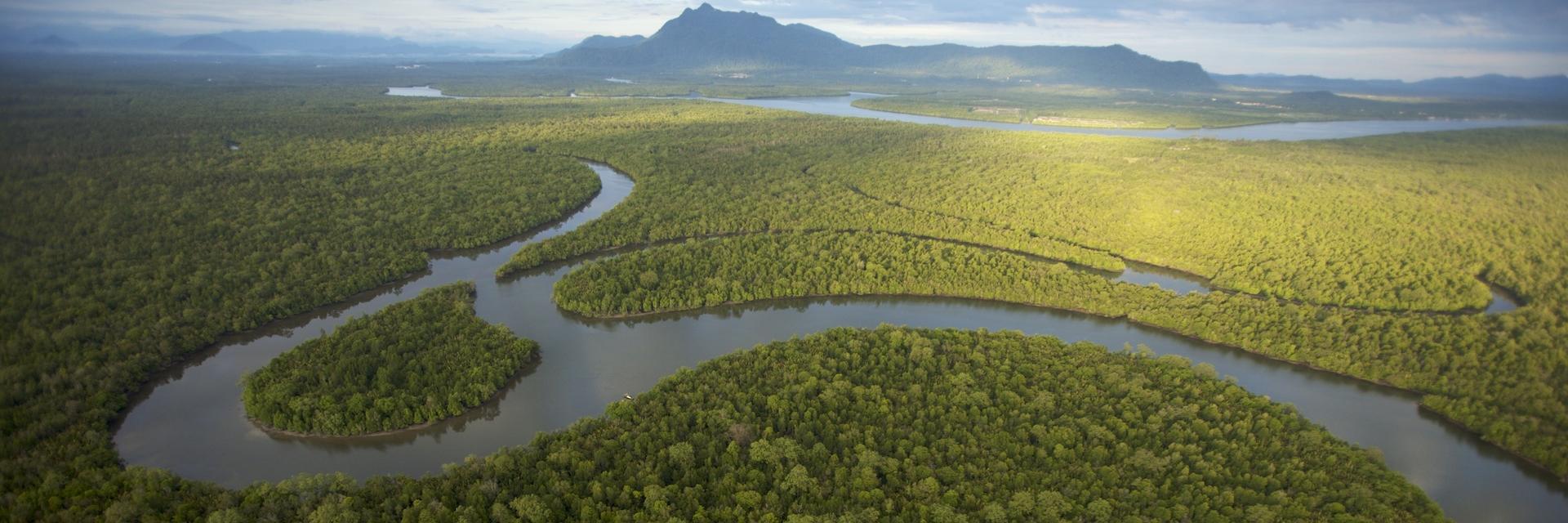
Mangroves
River and mangrove forest in the Sarawak Mangrove Reserve, Borneo, Malaysia.
Credit: Tim Laman / Nature Picture Library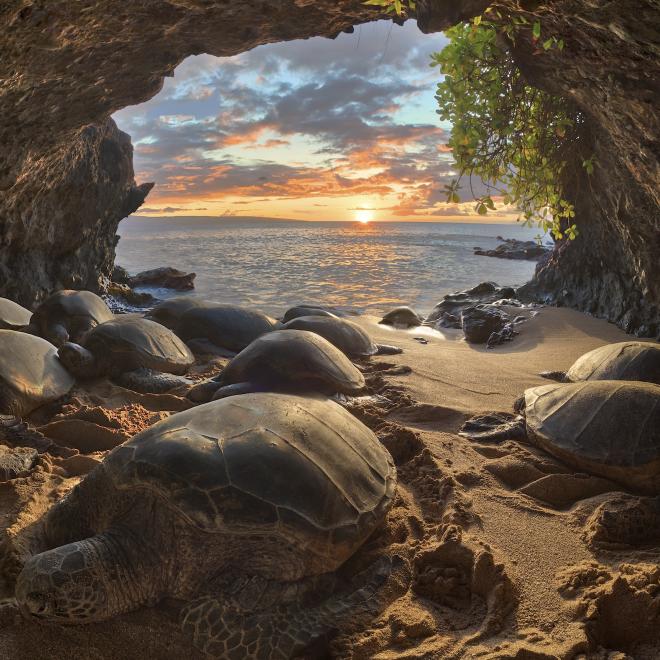
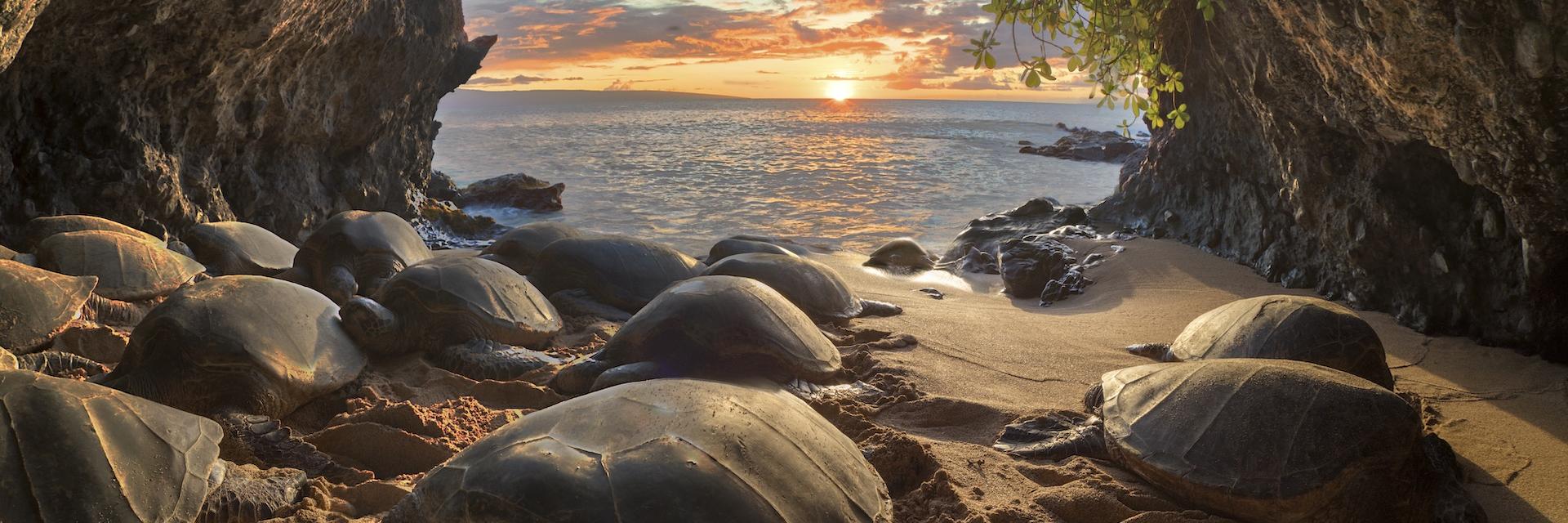
Marine Protected Areas
Hawaiian green sea turtles (Chelonia mydas) crowding into a small seaside cavern to bask at sunset. Resting on shore is a behaviour that is very rare for sea turtles, except in Hawaii and the Galapagos Islands. Hawaii, USA.
Credit: Doug Perrine / Minden Pictures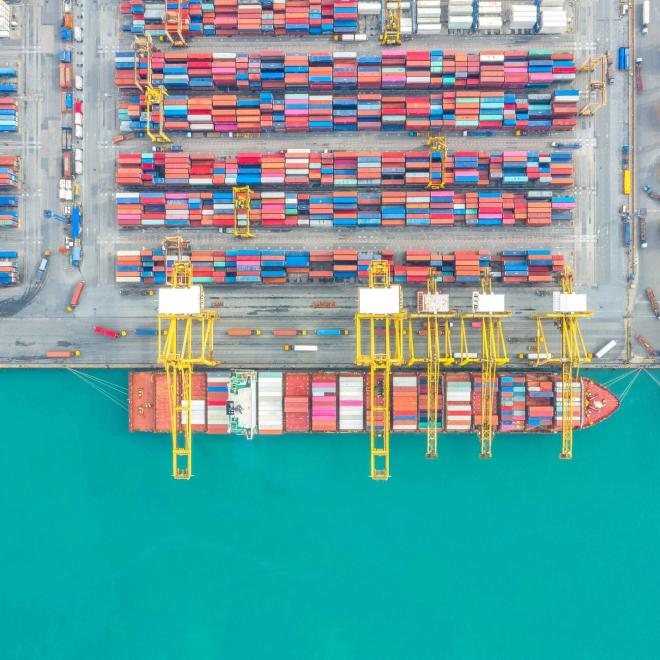
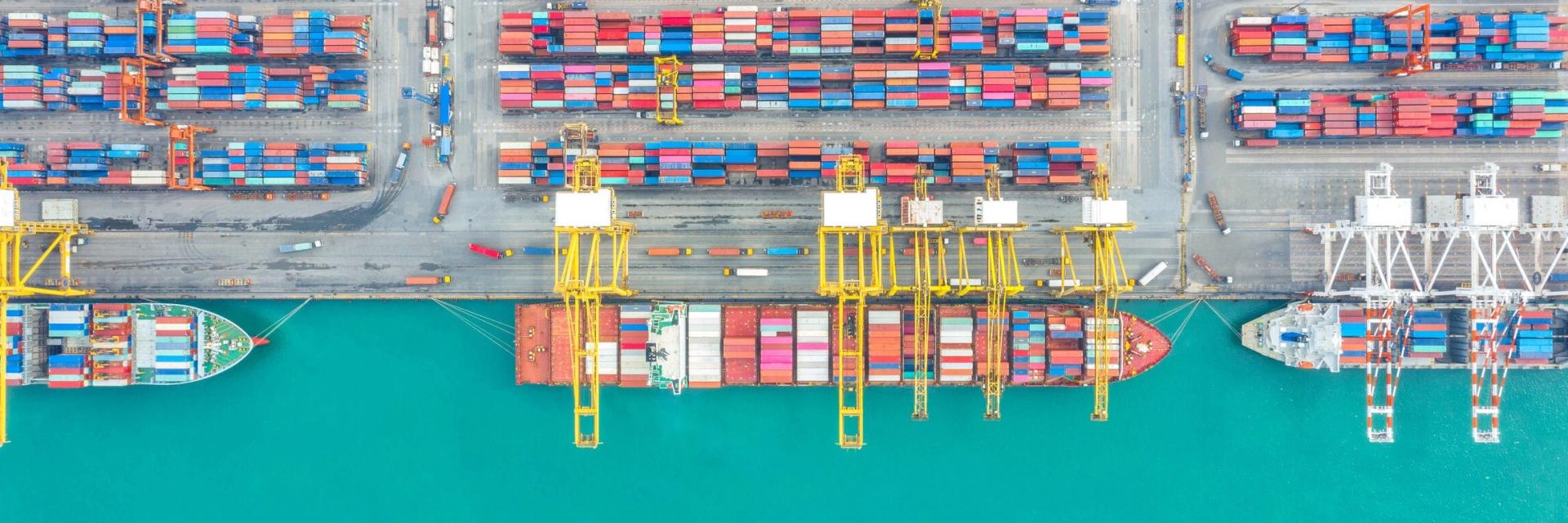
Maritime Shipping
Bangkok Port, Ratburana, Thailand. Container ships emit about one billion metric tons of CO2, which is three percent of global emissions, but the industry has set targets to completely decarbonize by 2050.
Credit: ProPIC / Getty Images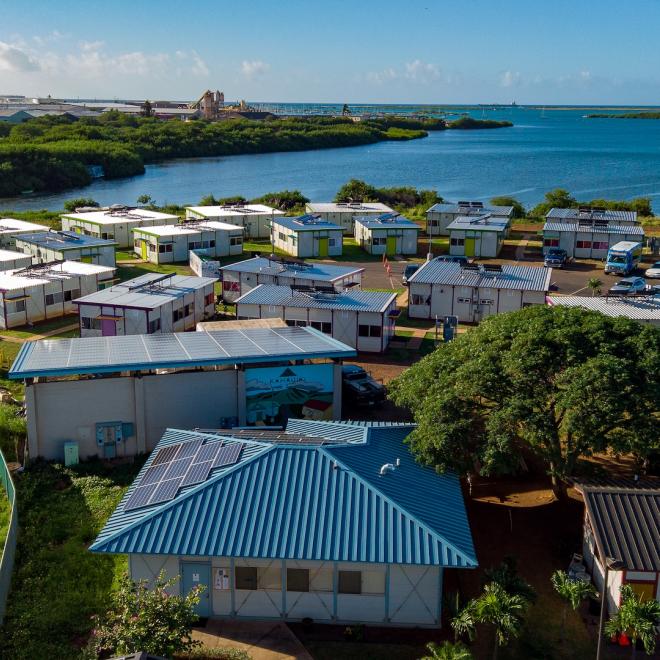
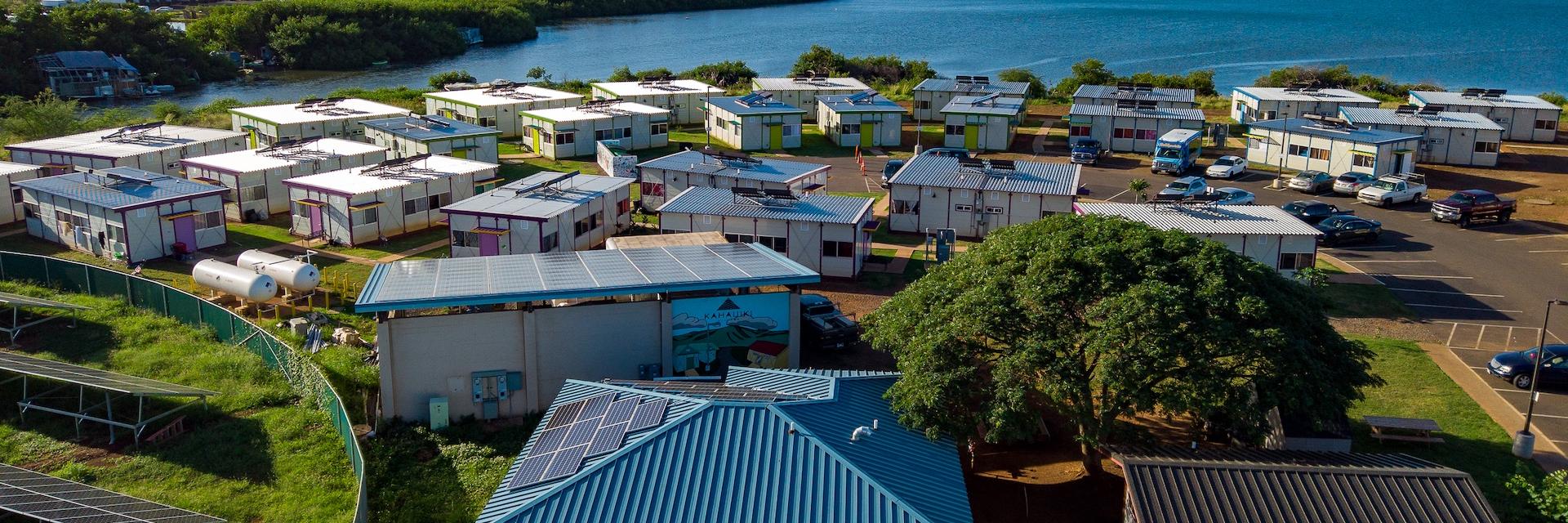
Microgrids
Kahauiki Village in Hawaii is a 144-unit community that provides long- term, affordable residences for homeless families and a suite of on-site services and facilities. Funded through a public-private partnership, it was built using low-cost, maintainable, and sustainable construction solutions, including repurposing emergency homes originally built for the 2011 Tohoku tsunami victims. The community is mostly energy independent, powered by a 500-kilowatt solar-powered microgrid with 2.1 megawatt hours of battery energy storage. The system is supported by some gas appliances, a generator, and a trickle of backup power from the grid to charge the batteries in extended overcast conditions.
Credit: Photonworks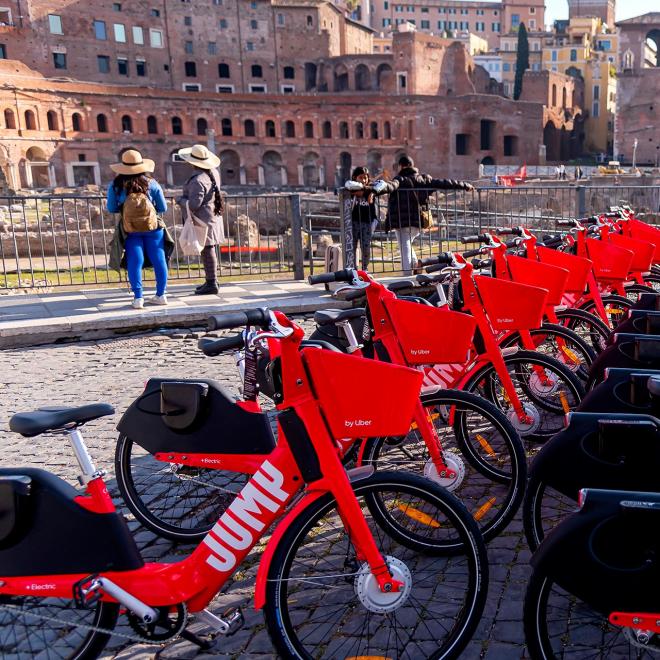
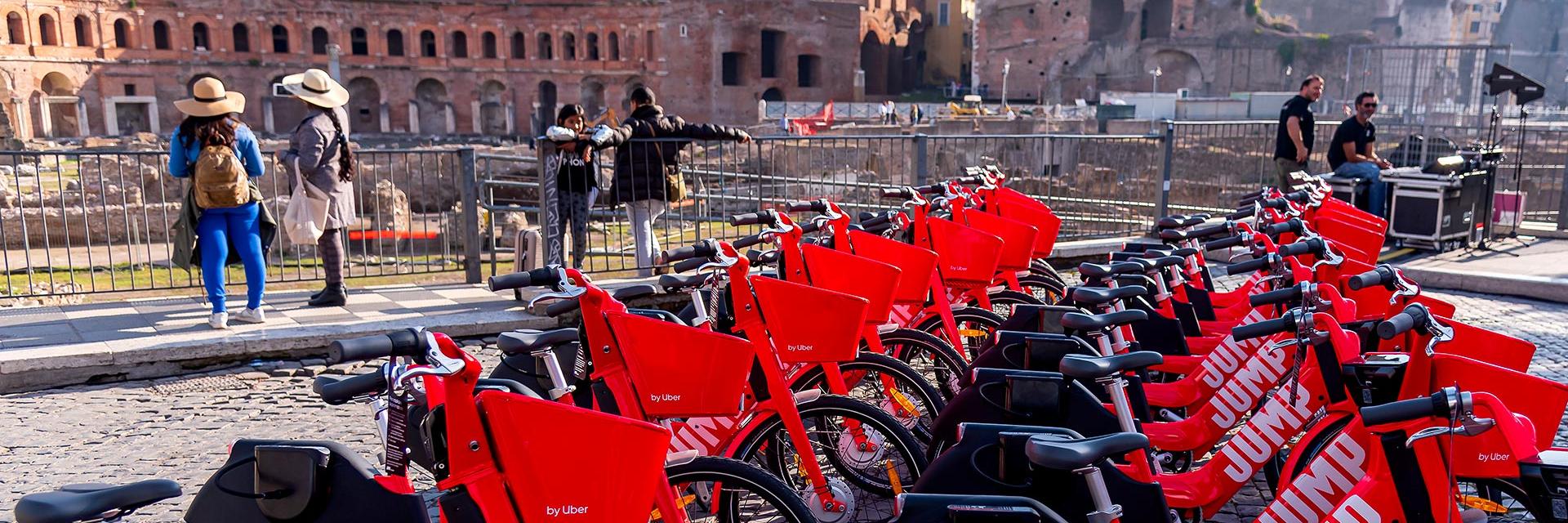
Micromobility
Electric bikes intended to expand transport options for citizens at affordable prices in Rome. Rome was chosen as the first city in Italy to launch one of the largest sharing-mobility networks.
Credit: Stefano Montesi / Getty Images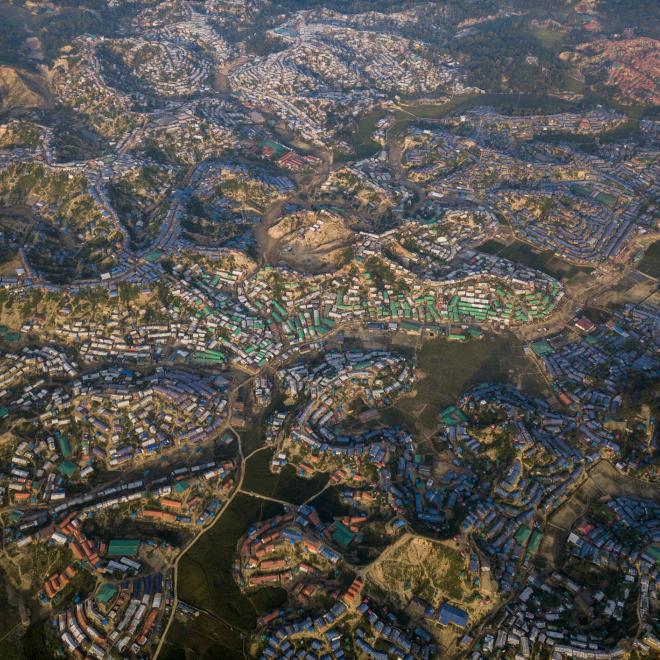

Migration
Aerial shot of the Rohingya Refugee Camp. Since August 25, 2017, over 700,000 Rohingya refugees have sought sanctuary in Bangladesh, constituting one of the swiftest and most extensive population movements in recent history. These refugees, predominantly from the Rohingya, a Muslim minority in Buddhist-majority Myanmar, are fleeing a situation the United Nations has deemed genocidal, stemming from decades of persecution and human rights violations. They have streamed into Bangladesh's Cox's Bazar district, joining a pre-existing community of more than 200,000 Rohingya who had fled in previous years. Presently, approximately 880,000 stateless Rohingya refugees inhabit Kutupalong, the world's largest and most densely populated refugee camp, with nearly half of them being children.
Credit: Zakir Hossain Chowdhury / Getty Images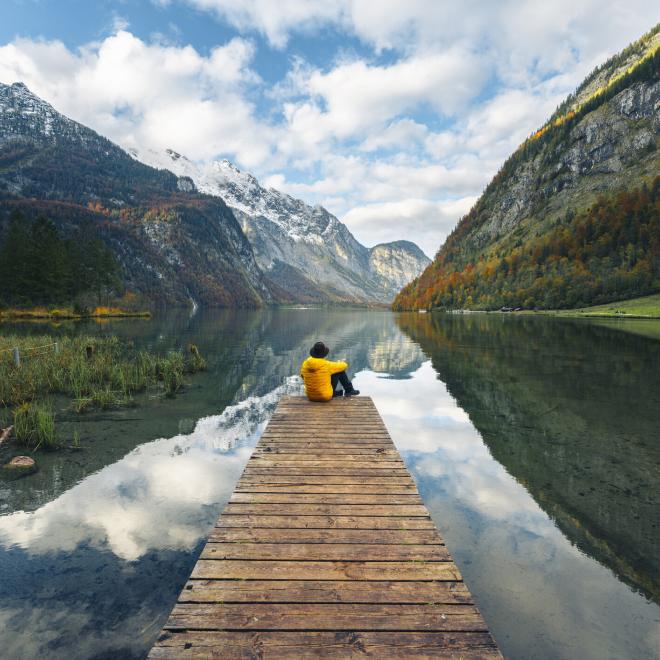
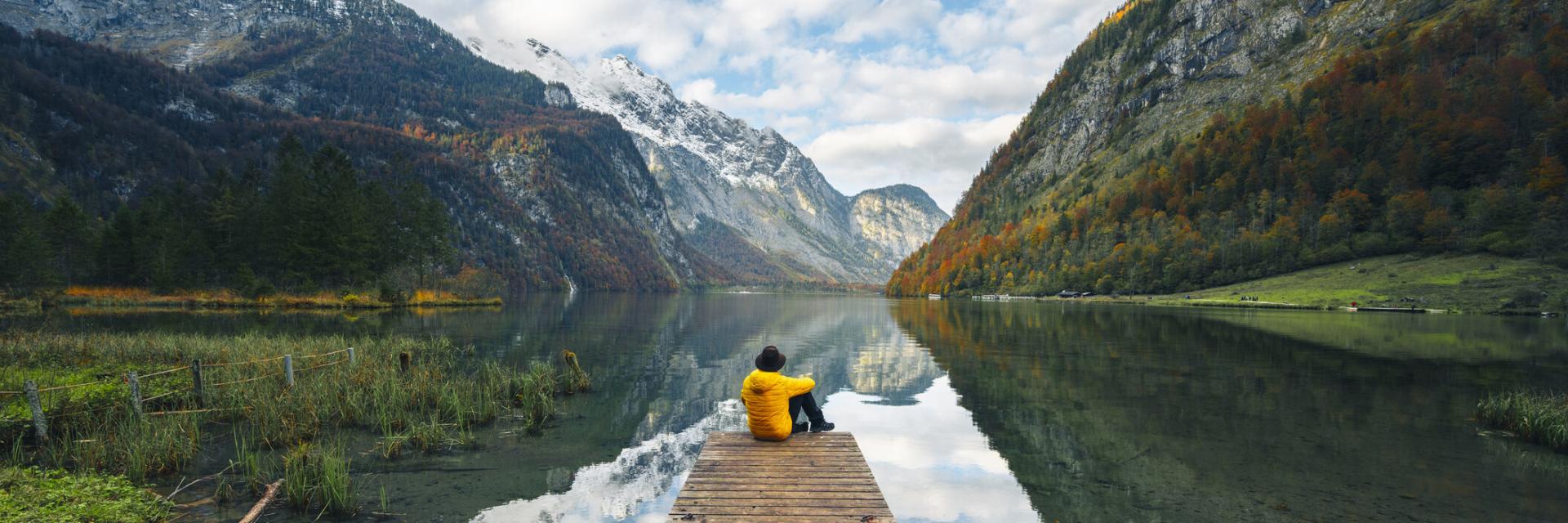
Nature Connection
Pictured is Lake Königssee, located in the heart of the Berchtesgaden National Park and bordered by the eastern side of Mount Watzmann.
Credit: © Marco Bottigelli / Getty Images

Nature of Cities
Vertical Forests was designed by Stefano Boeri as part of a broader Greener Cairo vision, which envisages six decarbonization strategies for the Egyptian metropolis aimed at achieving the ecological conversion of the city. In addition to planning new architectural forms, the vision includes a large-scale campaign for making the thousands of flat roofs of the city green. It also includes increasing urban vegetation through the creation of a system of green corridors that cross the old capital and join a larger orbital forest, making Cairo the first city in North Africa to deal with the challenge of climate change and ecological conversion.
Credit: Stefano Boeri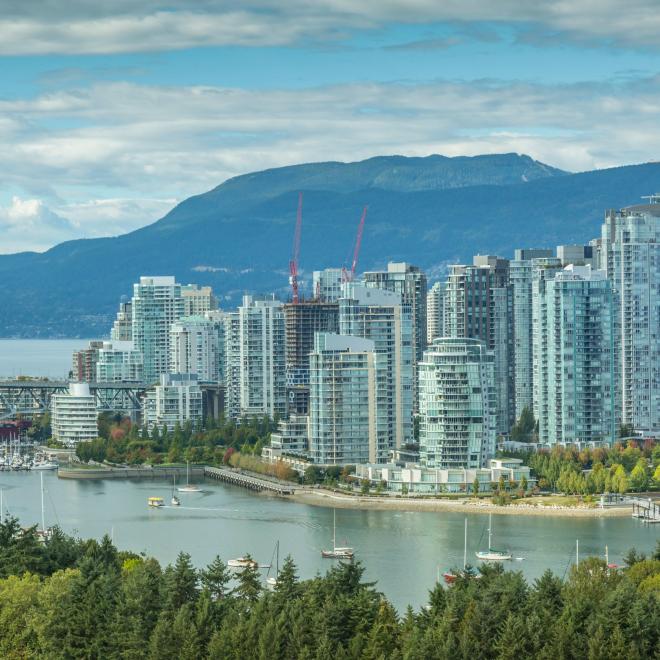
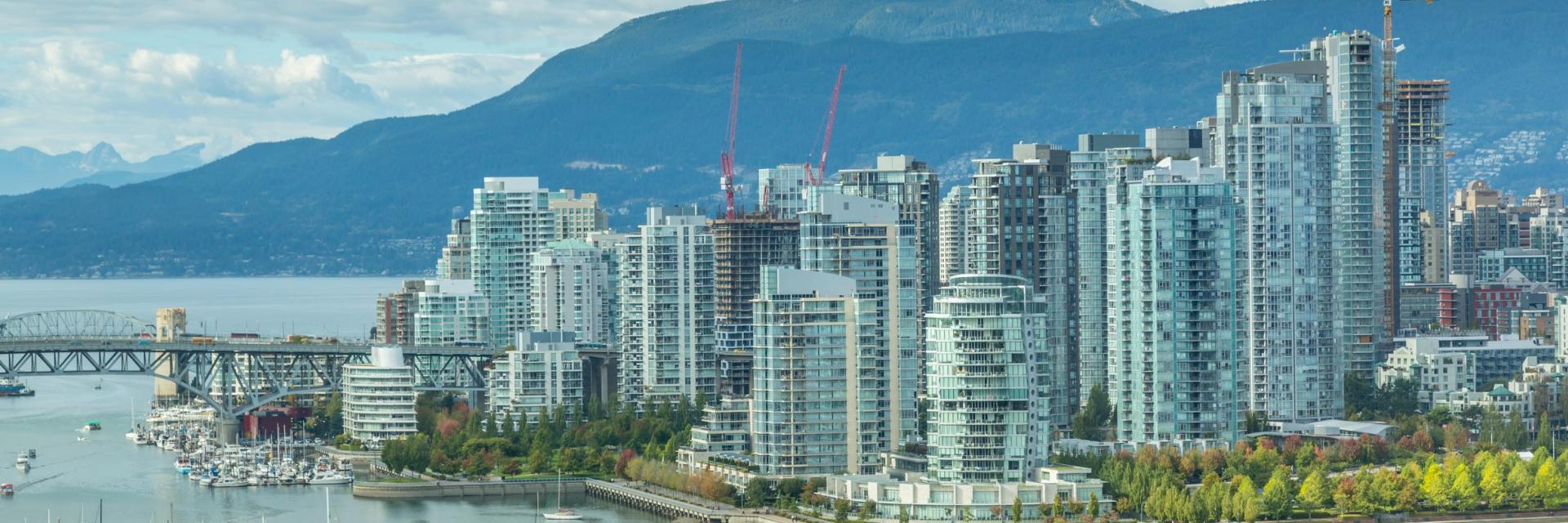
Net Zero Cities
Vancouver, Canada, has committed to reducing carbon emissions by 50 percent by 2030, and to be a net-zero city by 2050. The areas of focus will include natural gas use in buildings, gas and diesel in vehicles, walkability, and overcoming historic discriminatory legacies of social injustice. By 2030, 90 percent of citizens will be within walking or rolling (bike, scooter) distance of their daily needs. Two-thirds of all trips will be by public transit or nonmotorized active transportation. Half of all mileage will occur in zero-emission vehicles. Carbon pollution limits for existing buildings will be set to transition from fossil fuels to renewable energy. All replacement heating and water systems will be zero emissions (geothermal heat pumps). Embodied carbon in new building construction will be reduced by 40 percent.
Credit: Robert Harding / Alamy Stock Photo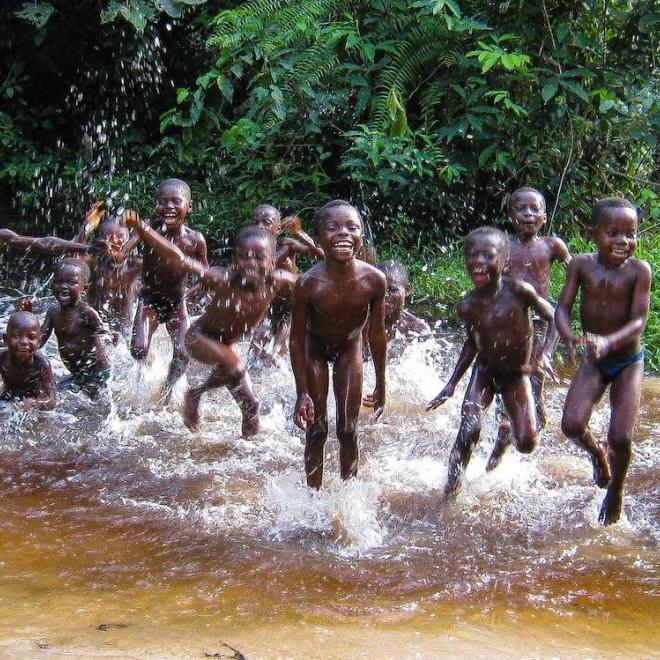
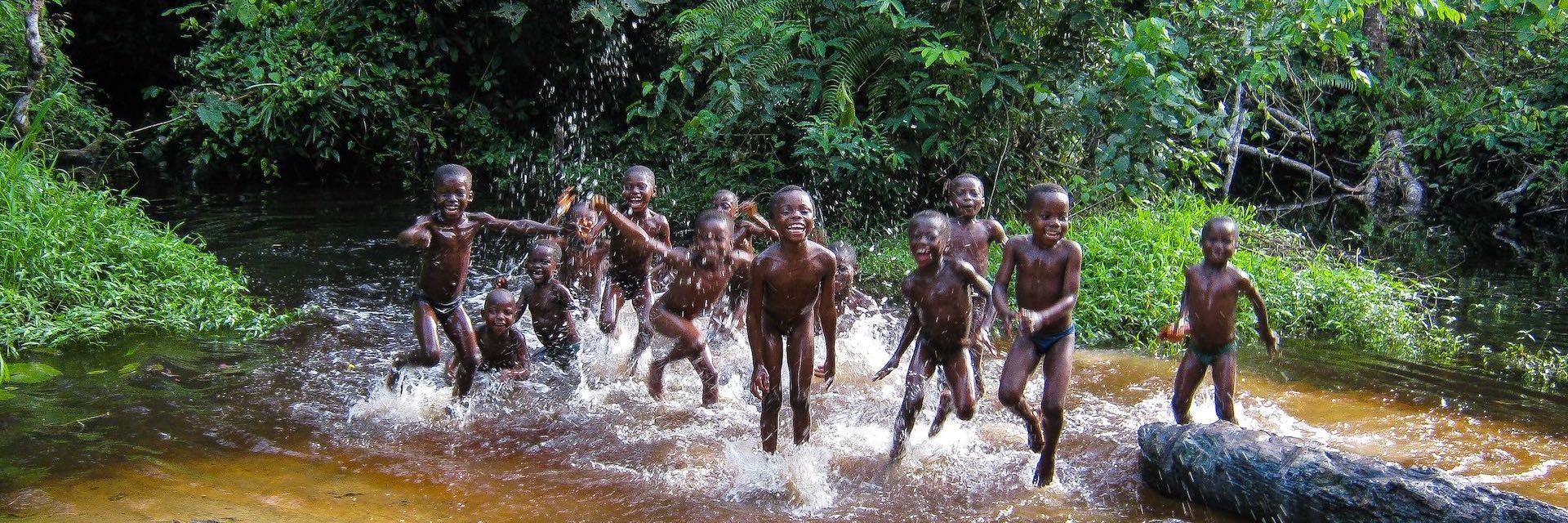
Offsets
Children of families who live in the Isangi Rainforest in the Democratic Republic of Congo. Offsets have stopped a former logging concession in the lowland tropical forests, an area that hosts 11 percent of the world’s known bird species.
Credit: Joseph Wasilewski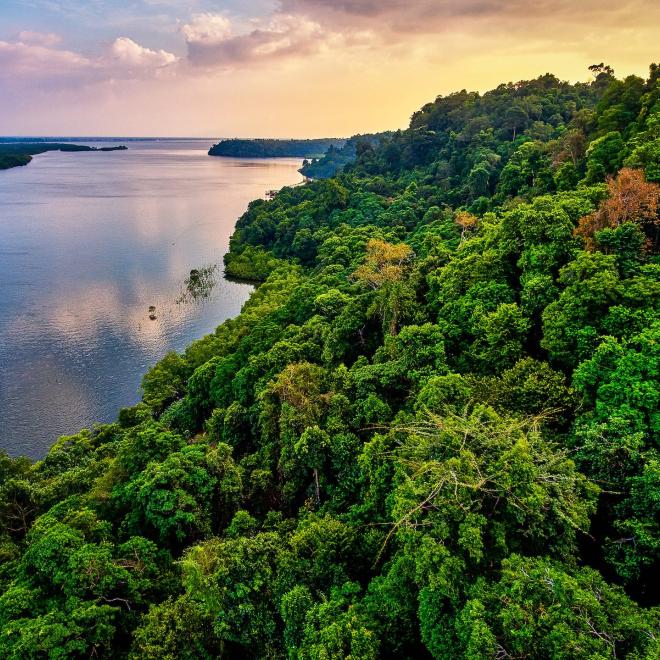
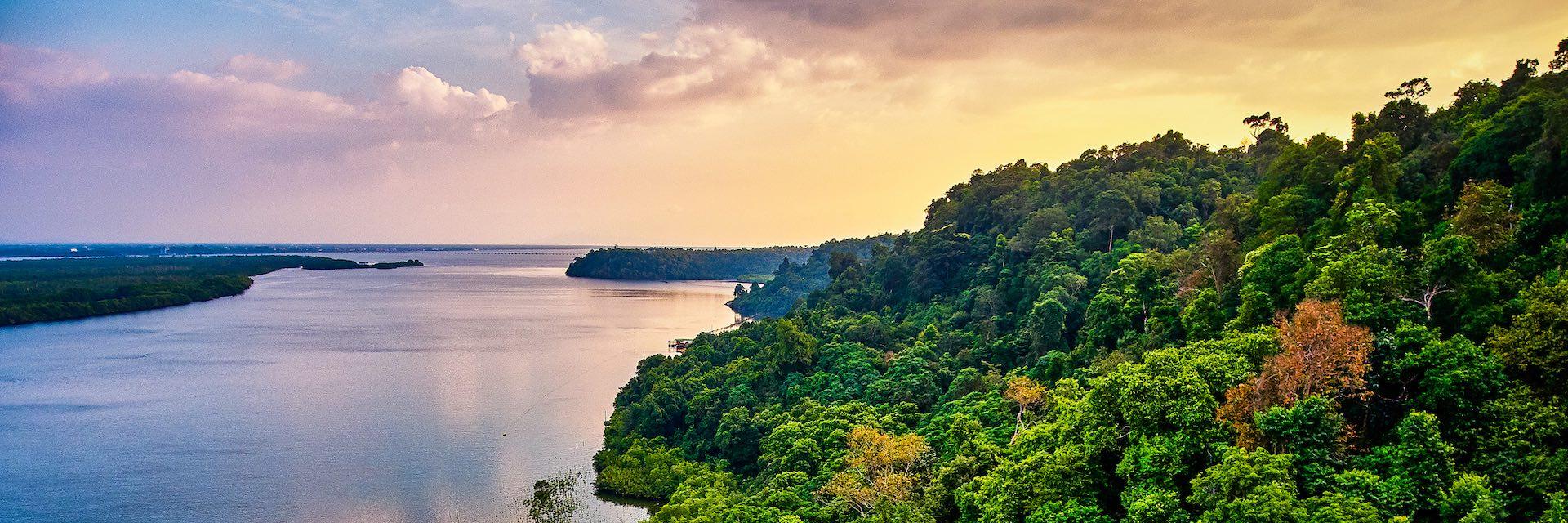
Onsets
The Southern Cardamom Forest lies in southwest Cambodia and covers 1.24 million acres of relatively intact tropical forest. Offset payments fund rangers, who confiscate over fifteen hundred chain saws a year from illegal loggers. It is home to more than fifty endangered species, including the Asian forest elephant, clouded leopard, pileated gibbon, Siamese crocodile, and sun bear. Offsets prevent 110 million tons of carbon emissions and support the local communities in tenure registration, scholarship funding for higher education, and ecotourism projects.
Credit: Andrea Pistoles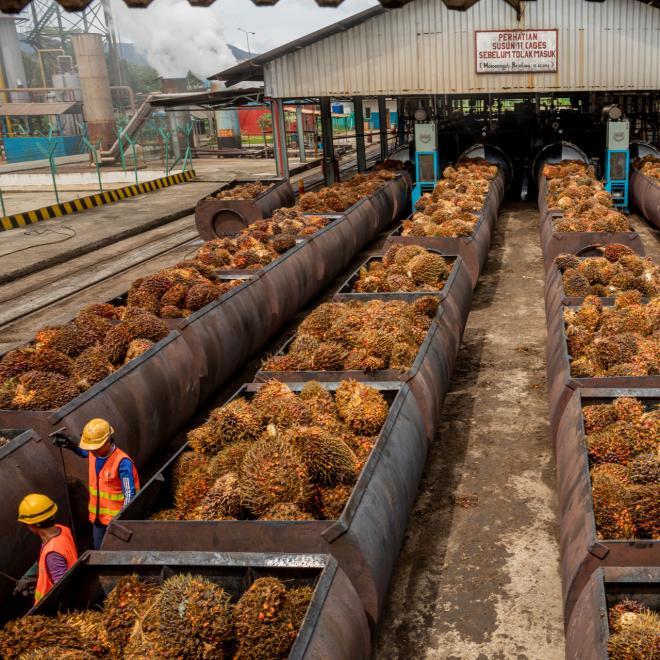
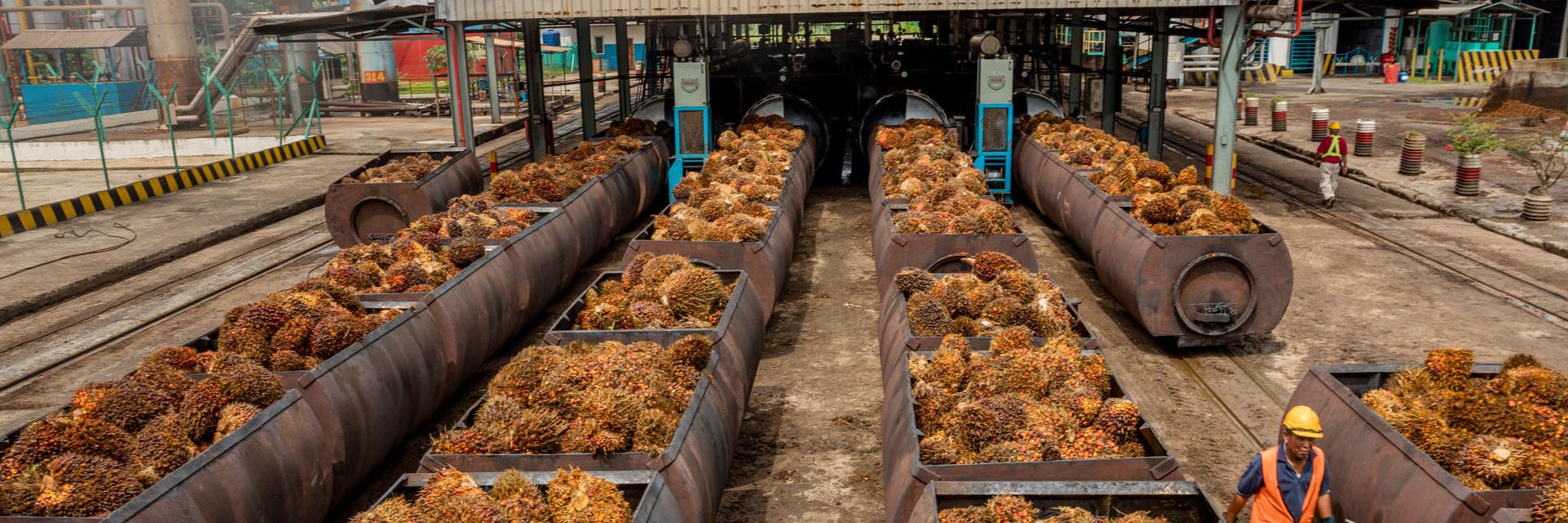
Palm Oil
Palm fruit is moved into high-pressure steam chambers to remove impurities. The Sapi palm oil plantation is said to be the largest palm oil trader in the world. One hectare produces six tons of palm oil (soy oil produces one ton per hectare).
Credit: George Steinmetz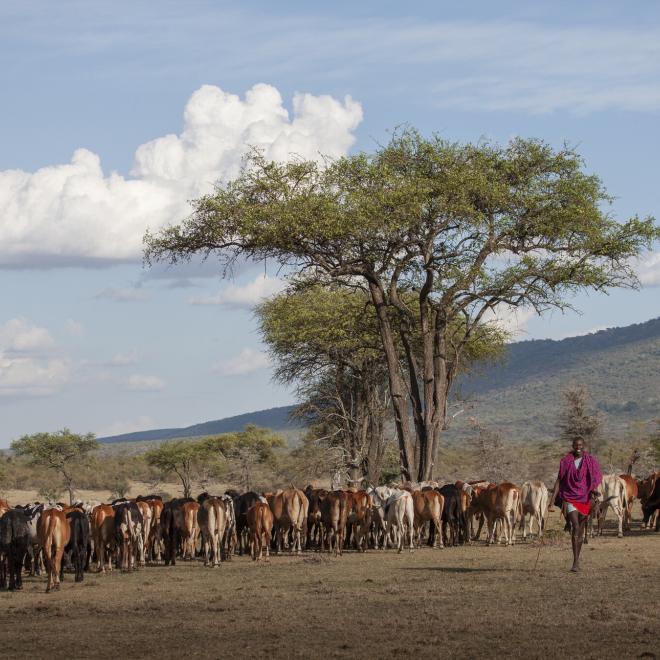
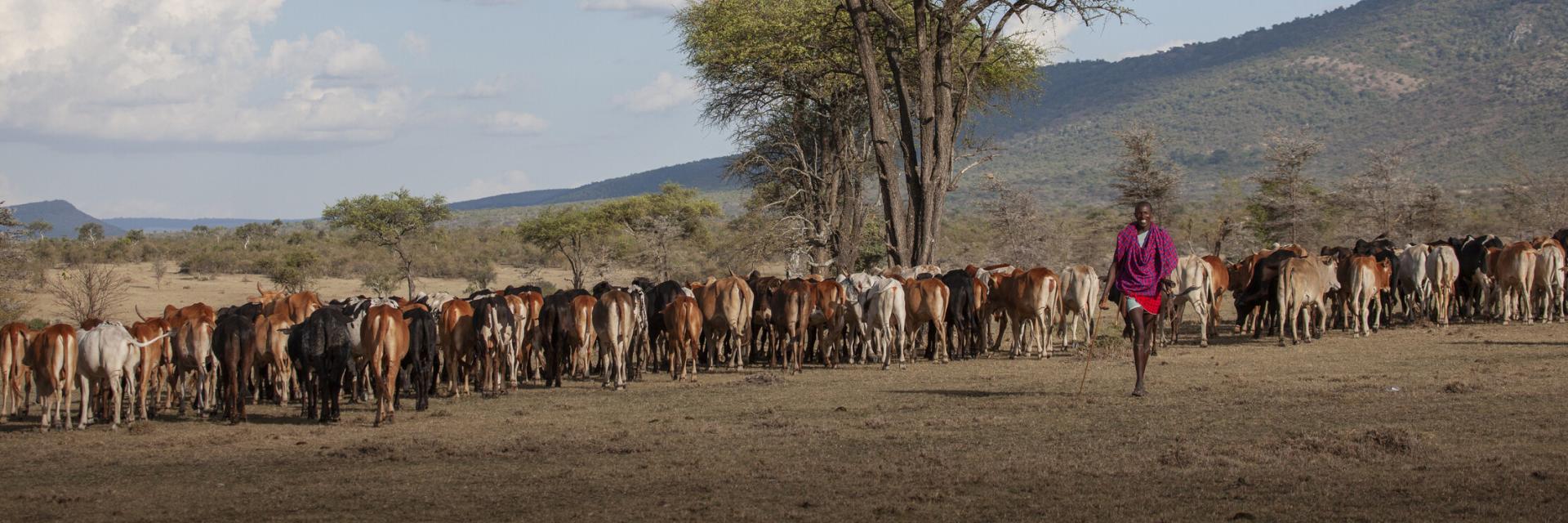
Pastoralism
The Maasai, like other pastoralists all over Africa, have lived for centuries earning their livelihood from herding livestock, cows, goats, and sheep, roaming over hundreds of kilometers in search of water and grazing land for their cattle.
Credit: Buena Vista Images / Getty Images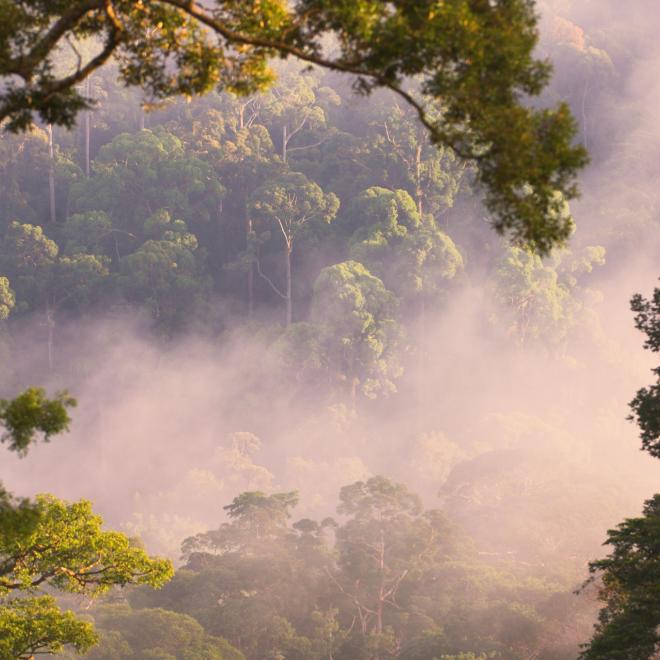
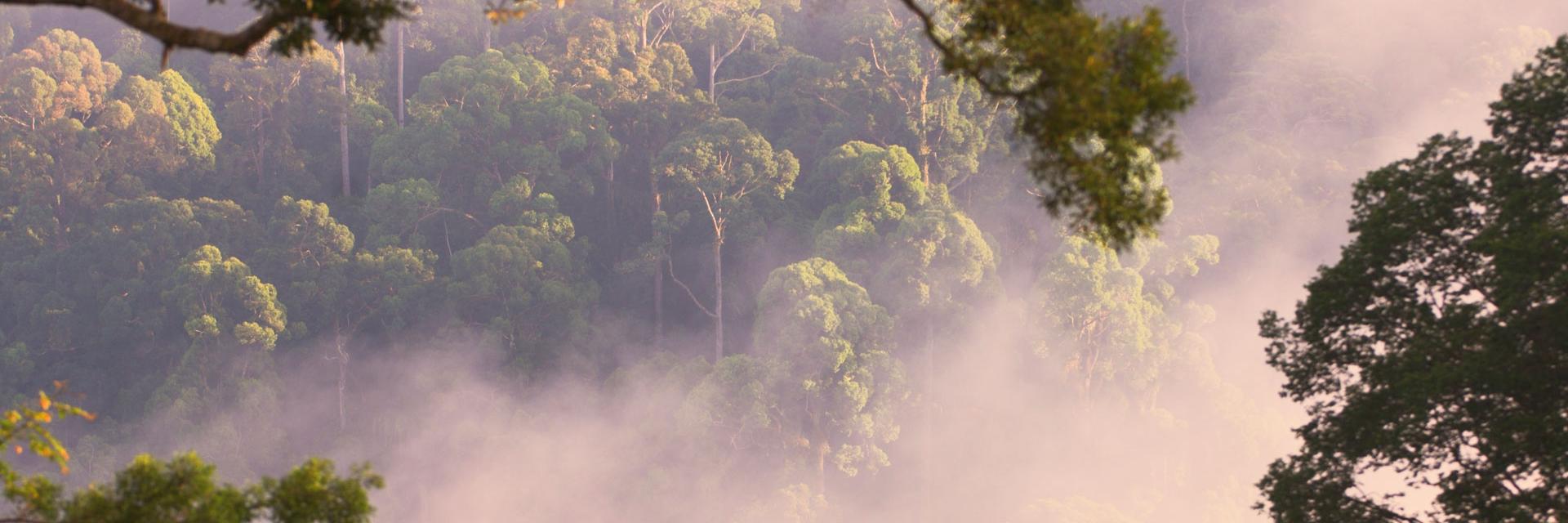
Peatlands
Early morning mist rising from the canopy of the lowland forest in the Danum Valley, Sabah, Borneo.
Credit: Nick Garbutt / Nature Picture Library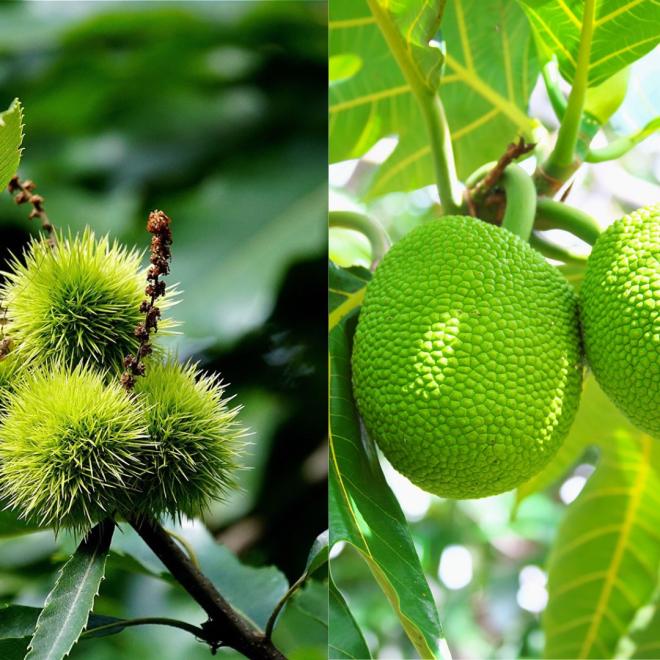
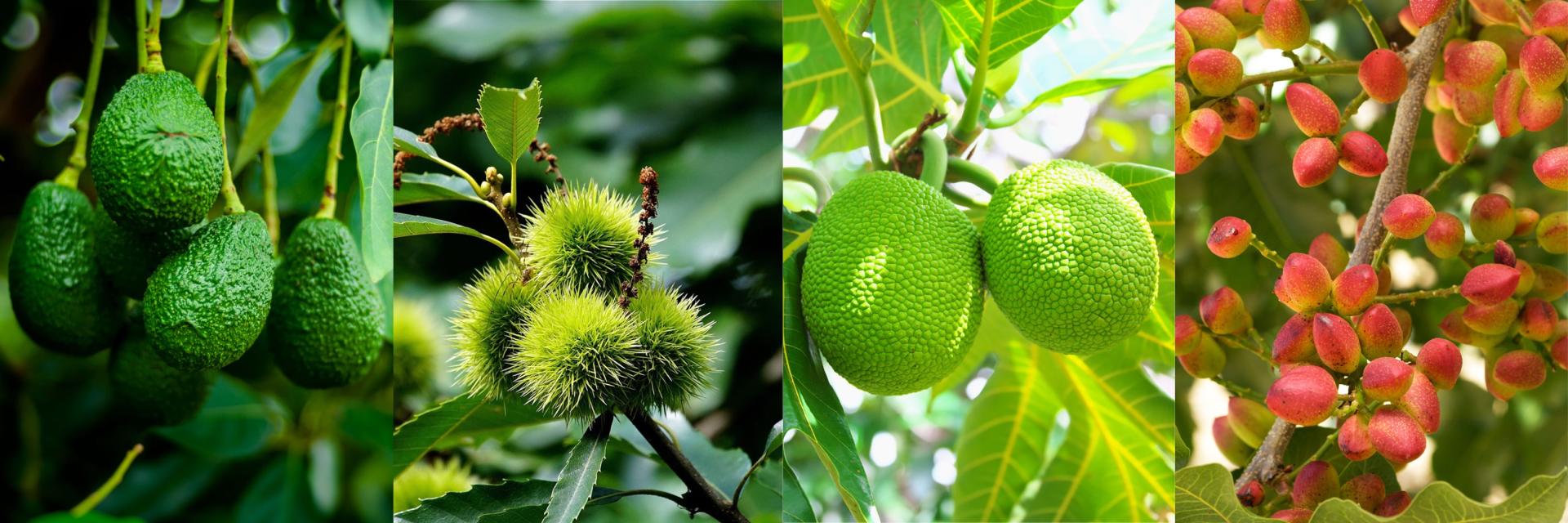
Perennial Crops
From Left to Right: Avocados | Breadfruit | Chestnuts | Pistachios.
Credit: Jim Lightfoot, Masataka Ishi/AFLO, Manuela Schewe-Behnisch / EyeEm, GomezDavid / Getty Images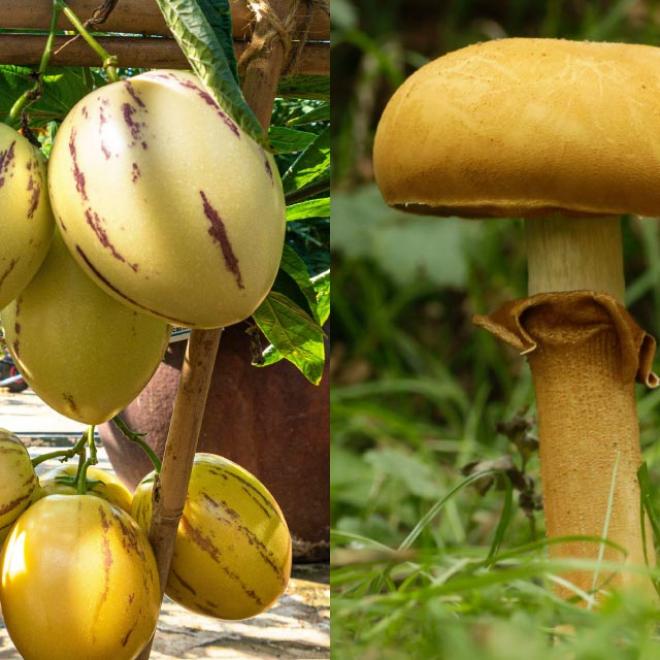

Plant Diversity
From Left to Right: Waxberries | Pepino melons | Golden Bootleg Mushrooms | Yacon Root.
Credit: Westend61, Ian Shaw, Buiten-Beeld, Phloen / Alamy Stock Photos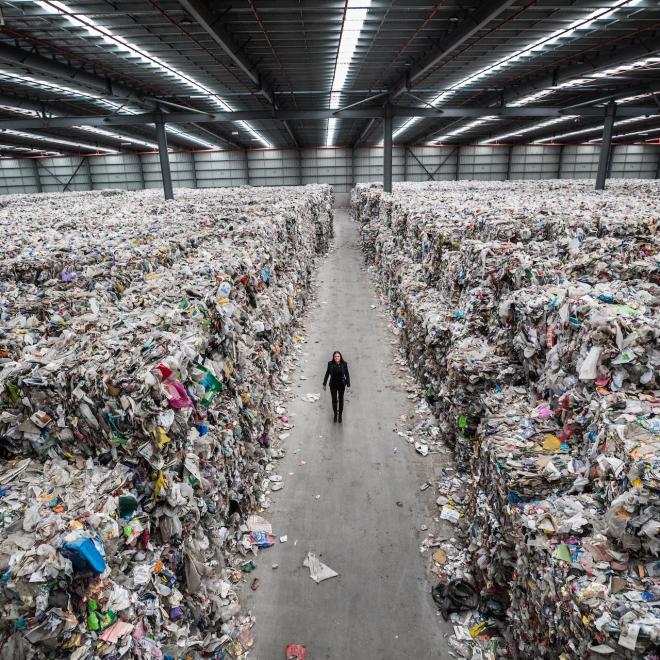
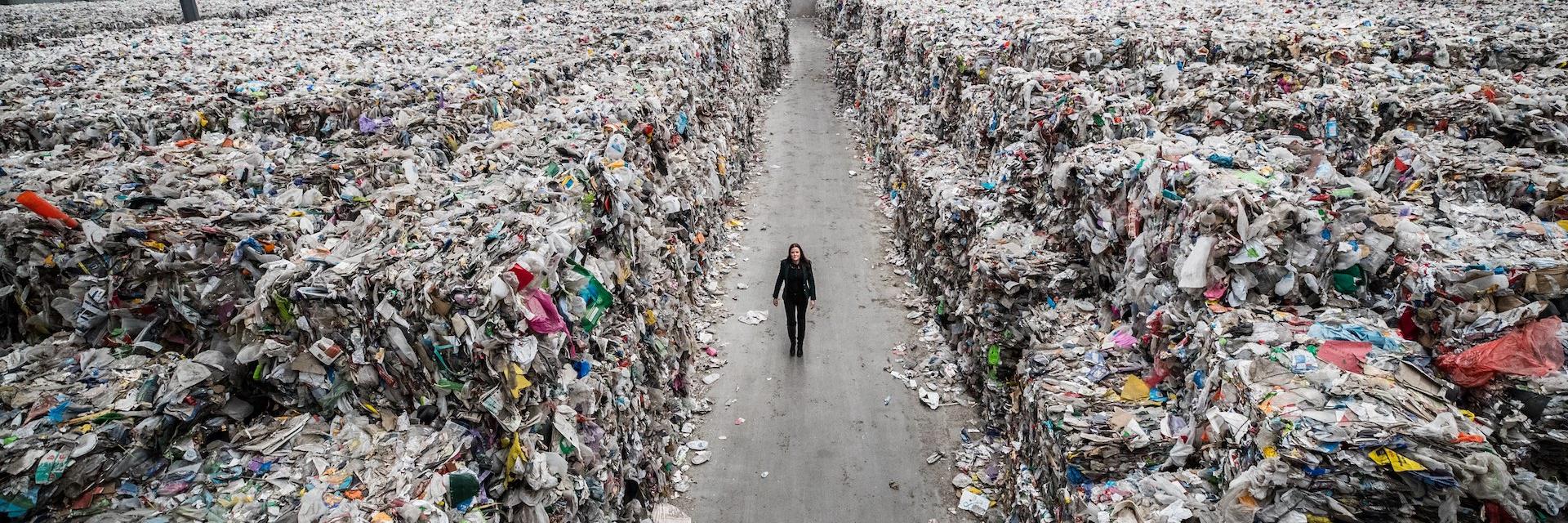
Plastics
SKM, a recycling company in Melbourne, Victoria, Australia, declared bankruptcy; its six major warehouses were full of recyclable materials awaiting processing. The Victoria government and the warehouse owners, Marwood Constructions, did not know how to deal with this material, which is largely unsorted and cannot be sold easily to other materials processors. With no one to process their household recycling, Victoria councils were forced to send thousands of tons of recyclable waste to landfills.
Credit: Jason South / Getty Images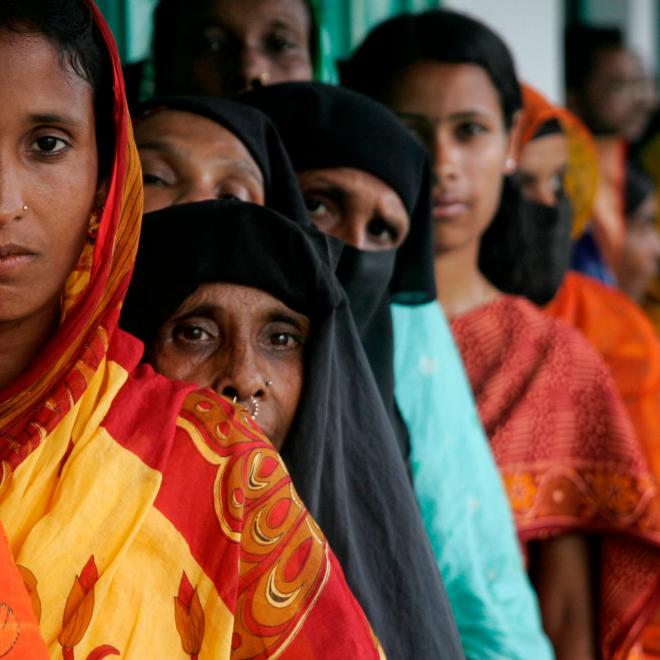
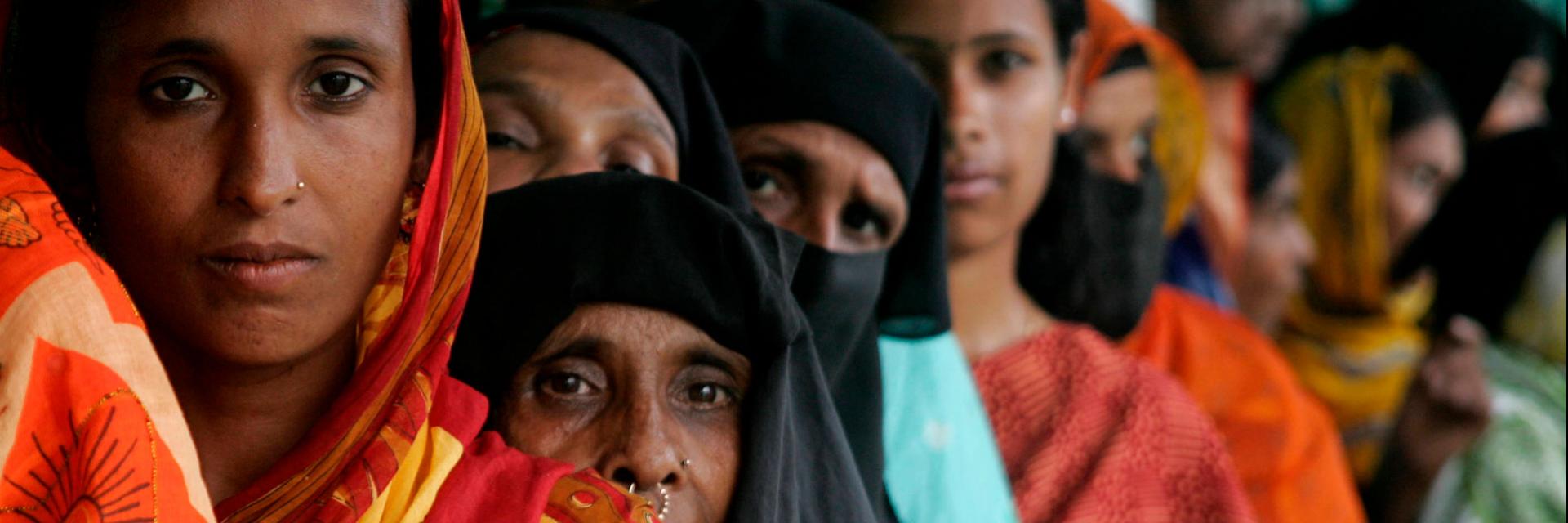
Politics Industry
Bangladeshi villagers line up to have their photographs and signatures taken and saved to an extensive database in Rajashi Division, some 200 kilometers northwest of Dhaka on March 16, 2008, as part of a United Nations Development Programme (UNDP) voting initiative. One of the main reasons for the deferment of the January 2007 elections was an inaccurate electoral roll that was not acceptable to opposition parties. The UNDP is supporting the Bangladeshi government’s creation of a fresh voters list with photographs and fingerprints. It is the first time in Bangladesh that photographs are being included in the voters list. The completion of this list will eliminate fraudulent entries and build the nation’s confidence in the credibility of parliamentary elections.
Credit: Lalage Snow / Getty Images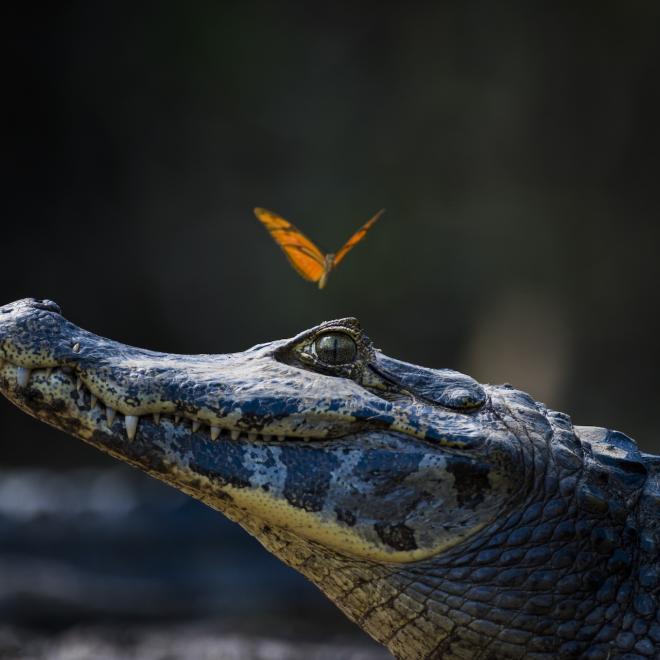

Pollinators
Julia heleconia (Dryas iulia) butterfly on head of Yacare caiman (Caiman yacare). Butterflies often land on caiman's head to drink the salt from its eyes. Pantanal, Brazil.
Credit: Wim van den Heever / Nature Picture Library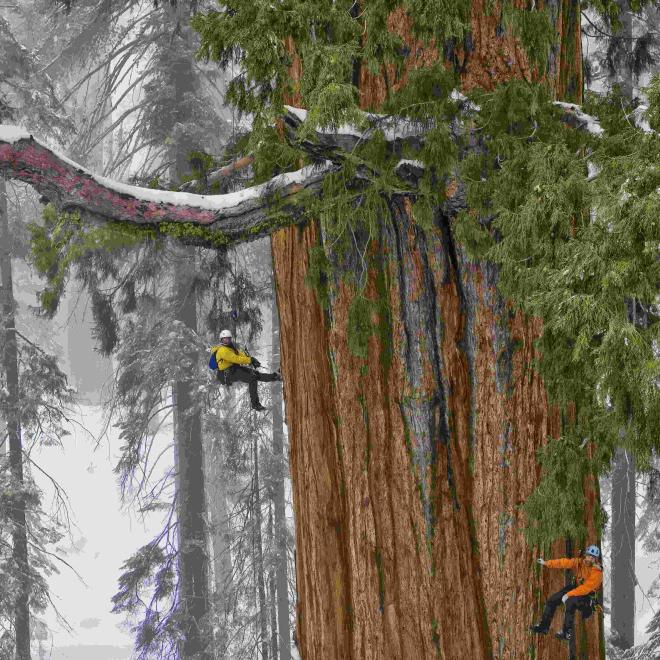
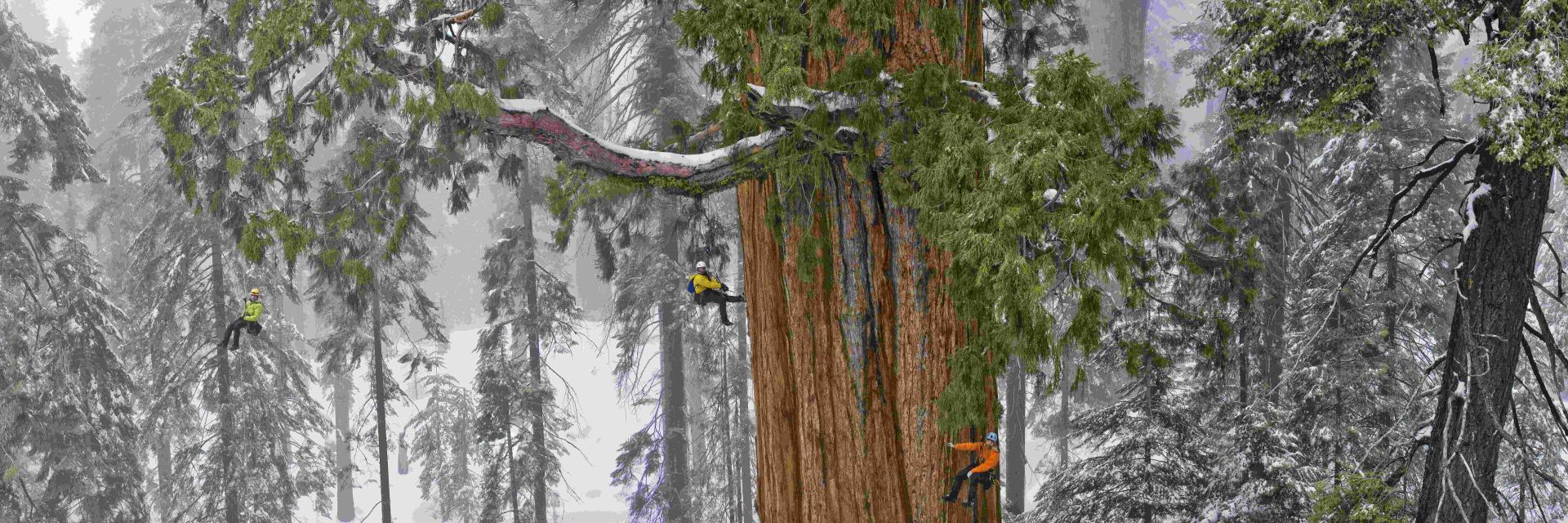
Proforestation
Scientists measuring the health and caliper of the largest trees on earth, the giant Sequoia of Sequoia National Forest in Tulare County, California. The larger trees are over 250 feet high and up to 102 feet in circumference at the base, more than the distance between home plate and second base in a baseball field.
Credit: Mike Nichols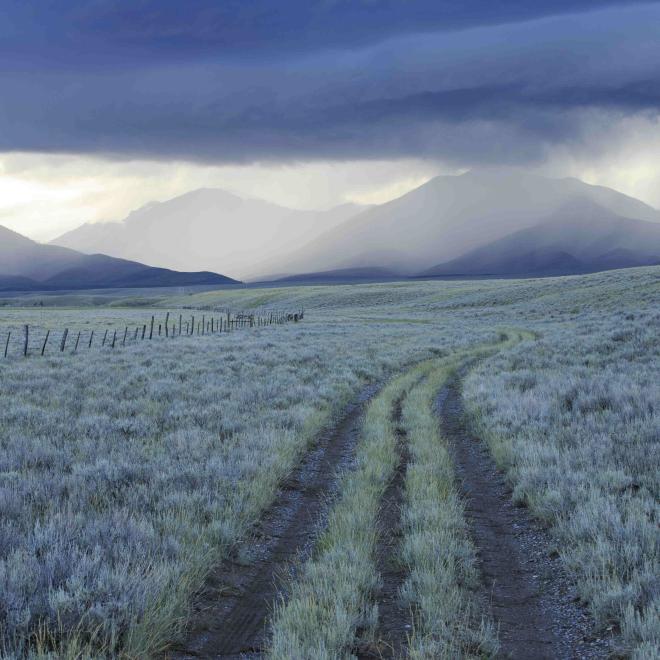
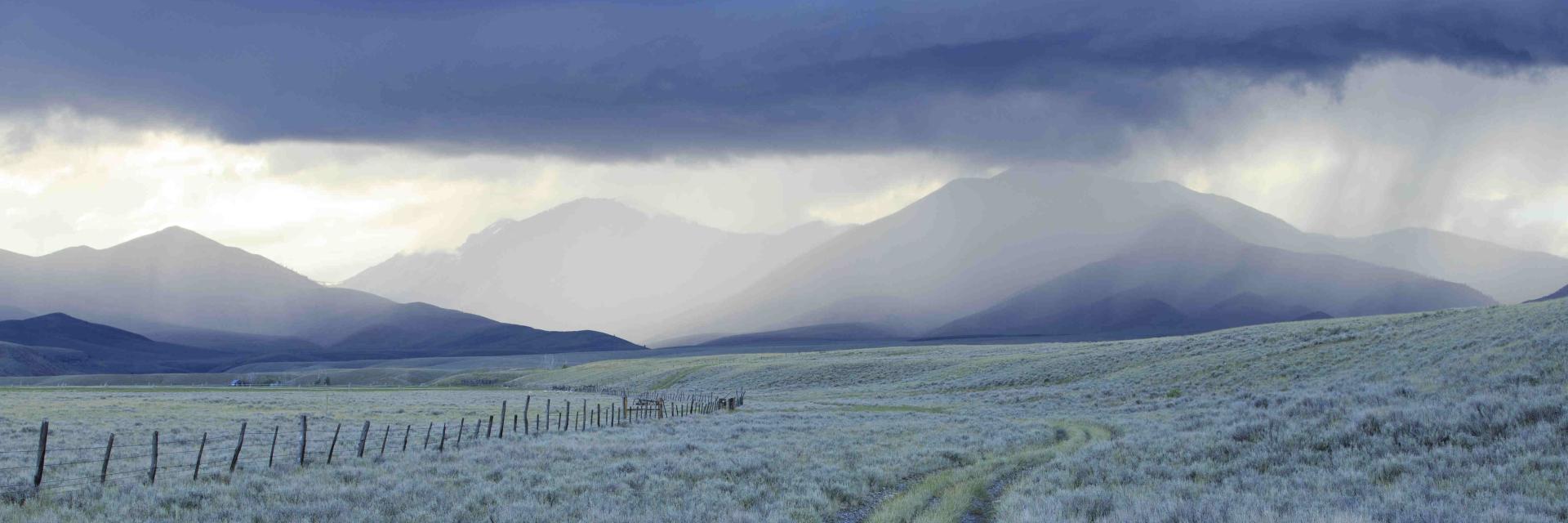
Rainmakers
Rain showers over sagebrush-steppe at the foot of the Sawtooth Mountains in Clark County, Idaho.
Credit: Gerrit Vyn / Nature Picture Library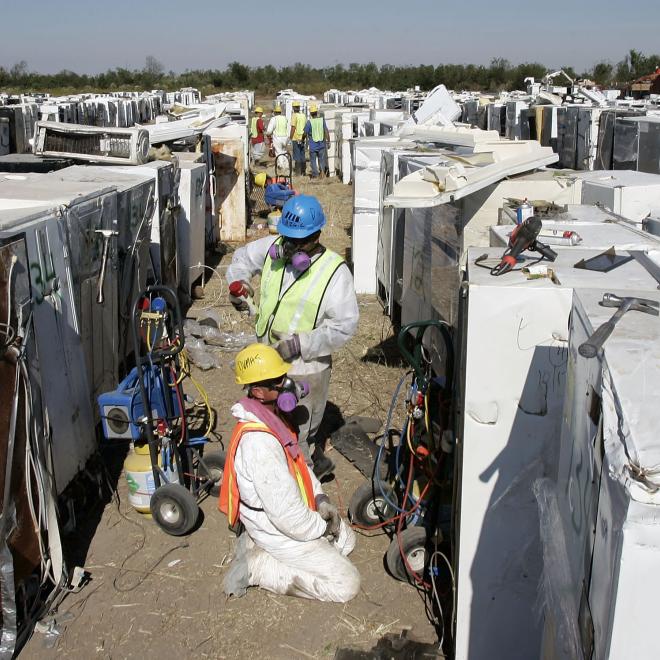
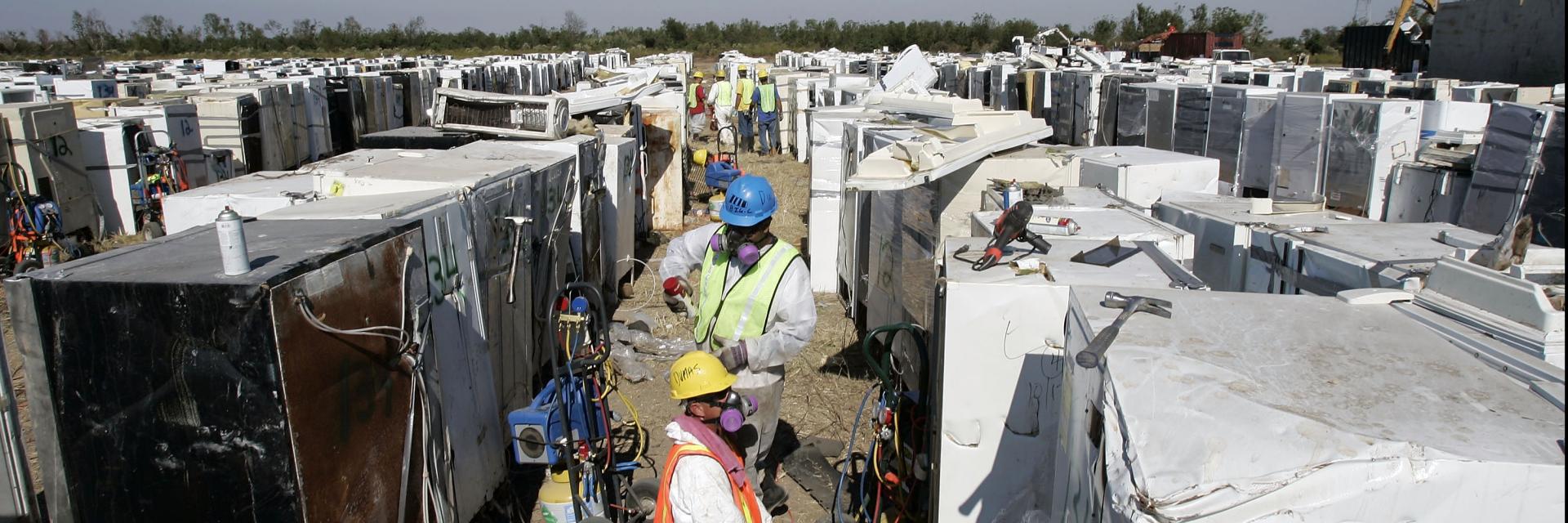
Refrigerants
EPA workers prepare to remove freon, compressor oil, mercury switches, and rotten food from refrigerators and other "white goods" at the Katrina Dumpsite on October 19, 2005, in New Orleans, Louisiana. Removing the hazardous materials helps minimize soil and groundwater contamination and prevents highly potent greenhouse gases from leaking into the atmosphere.
Credit: Chris Graythen / Getty Images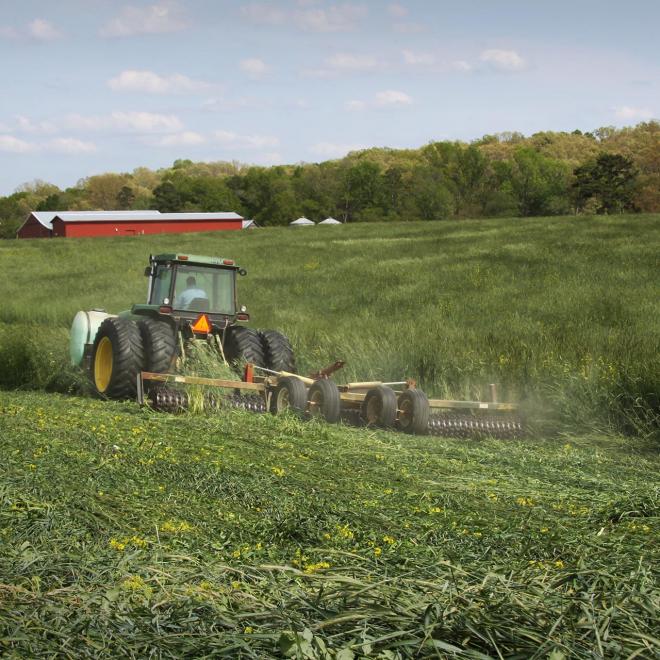

Regenerative Agriculture
A producer in Stanly County, North Carolina, rolls down a cover crop just minutes before planting corn. The ”blanketlike” results of rolling or crimping provide season-long weed protection, moisture retention, and food for soil microbes.
Credit: NCRS Photo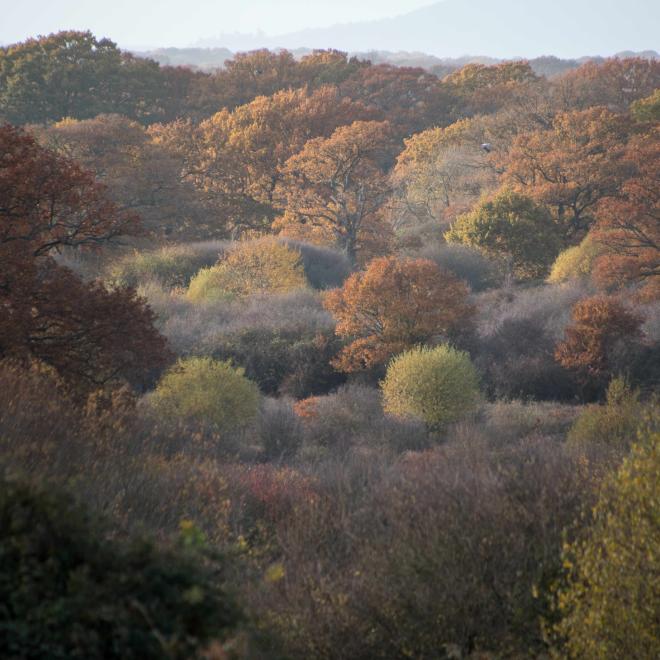
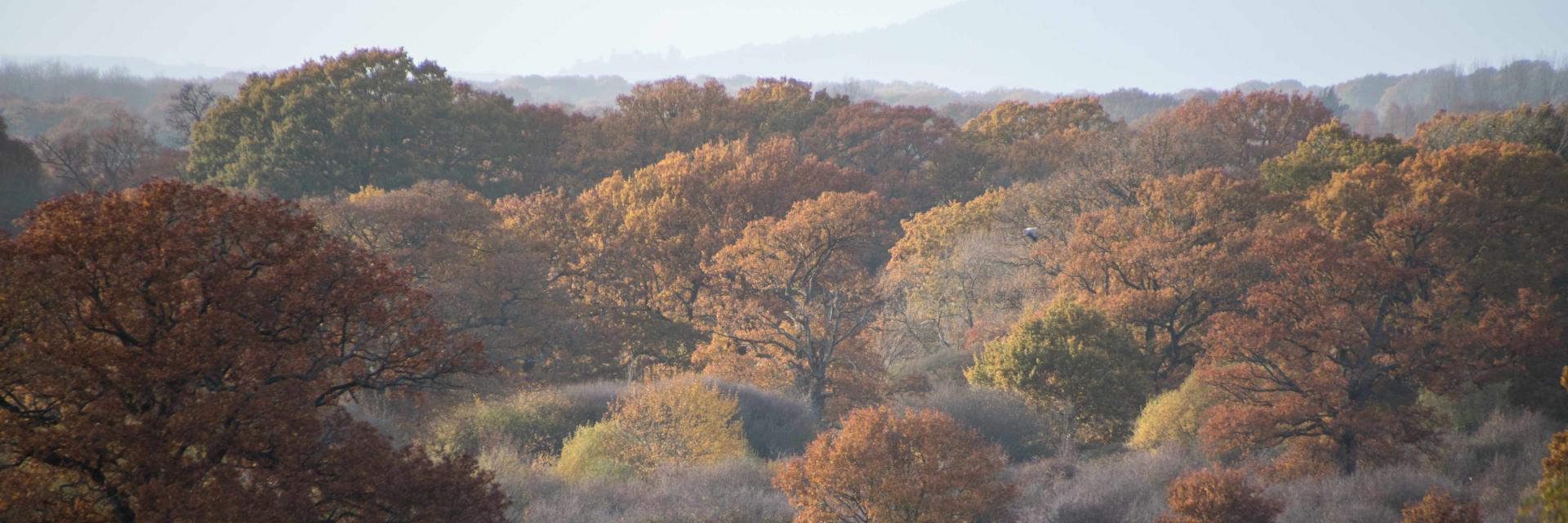
Rewilding
An entirely different ecosystem has emerged from ending the intensive industrial farming and dairy practices at the Knepp Estate. Without any farming at all, it now produces 75 live-weight tons of organic, wild- pasture fed, free-roaming meat every year. Rewilding has resulted in huge gains in terms of soil restoration, carbon sequestration, water storage and water purification, flood mitigation, air purification, and habitat for rare species and other wildlife, including pollinating insects— a space for nature, contributing to human health and enjoyment.
Credit: Klein and Hubert / Nature Picture Library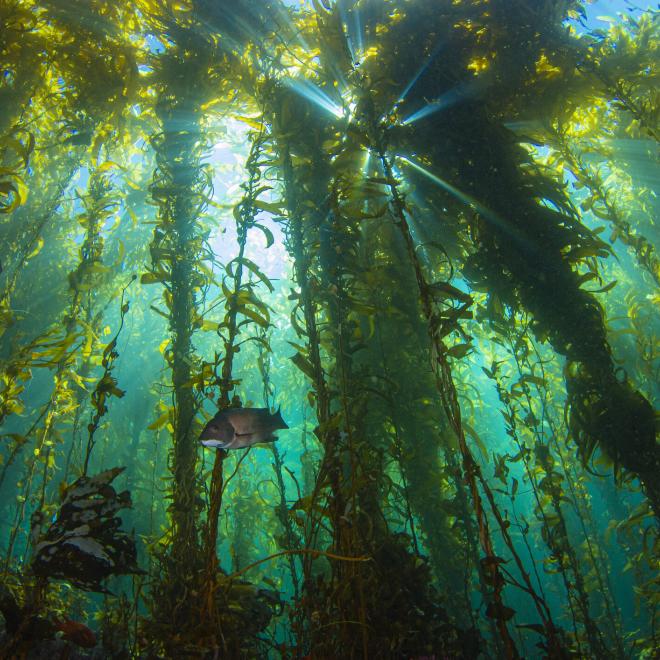
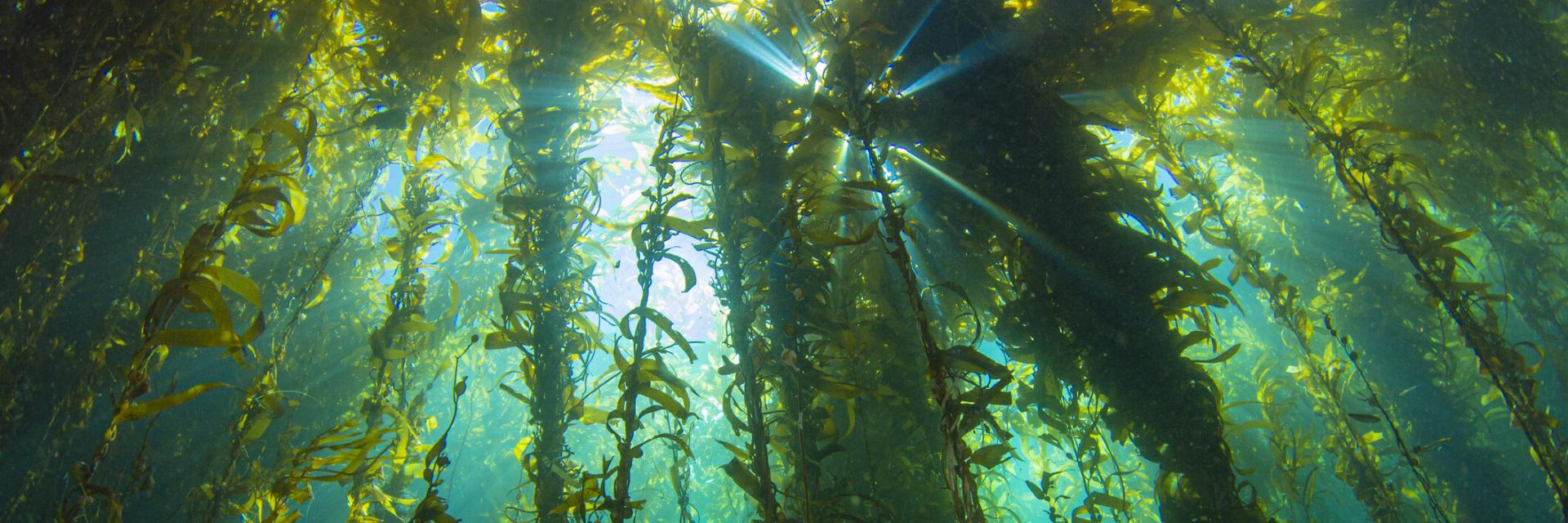
Seaforestation
A kelp forest in Santa Barbara, California.
Credit: Douglas Klug / Getty Images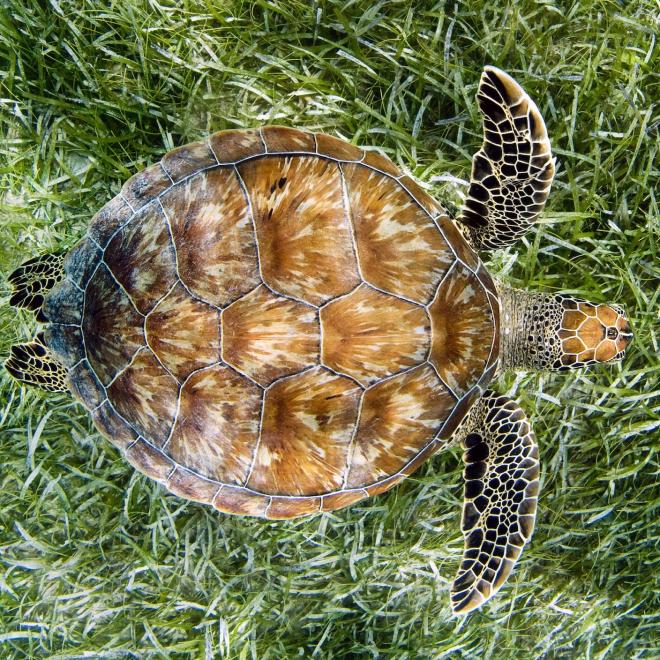
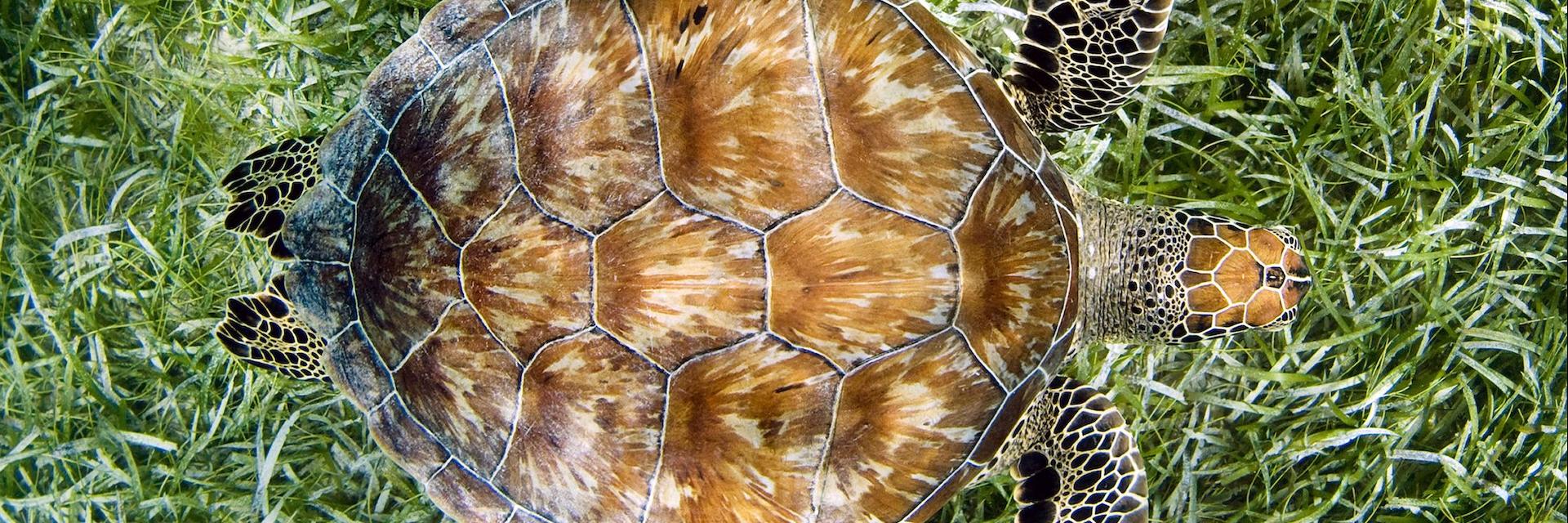
Seagrasses
Green turtles can travel thousands of miles in their lifetime, traversing entire oceans. They read the earth’s magnetic field perfectly to guide them in their migrations. They return unerringly to the beach where they hatched.
Credit: Jay Fleming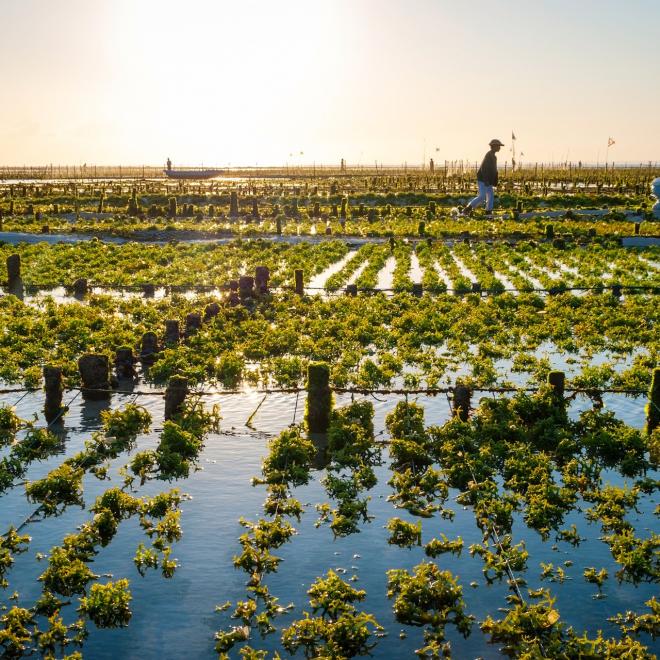
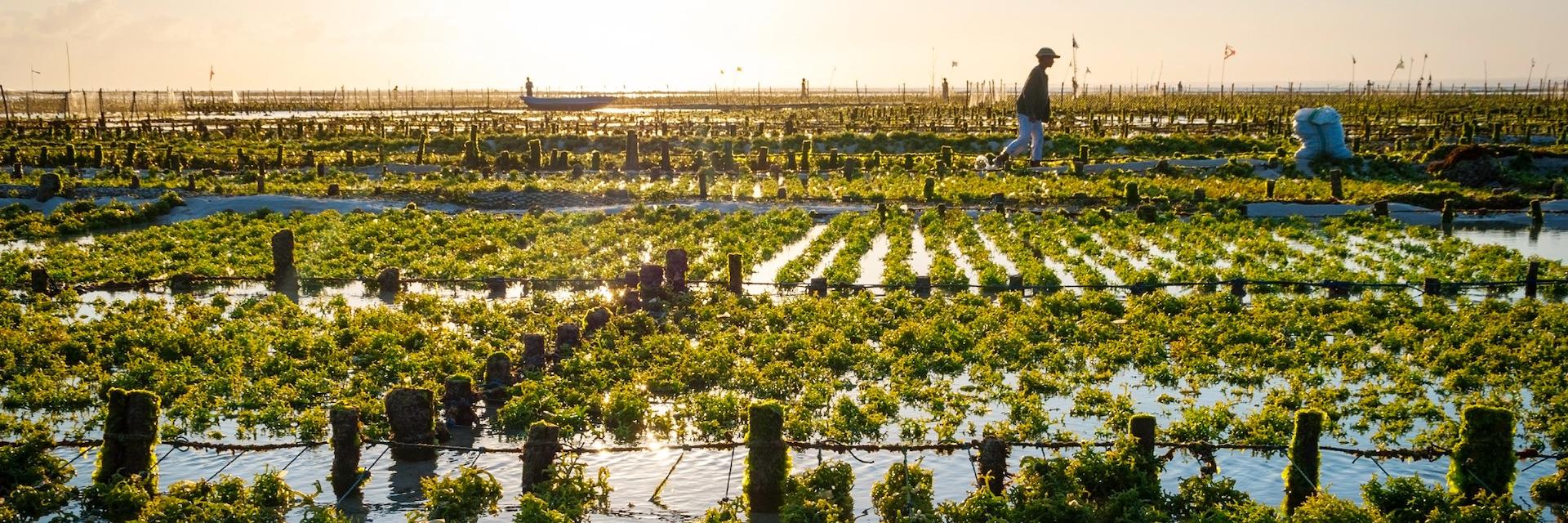
Seaweed Farming
Algae farm field in Indonesia.
Credit: dinozzaver / Adobe Stock
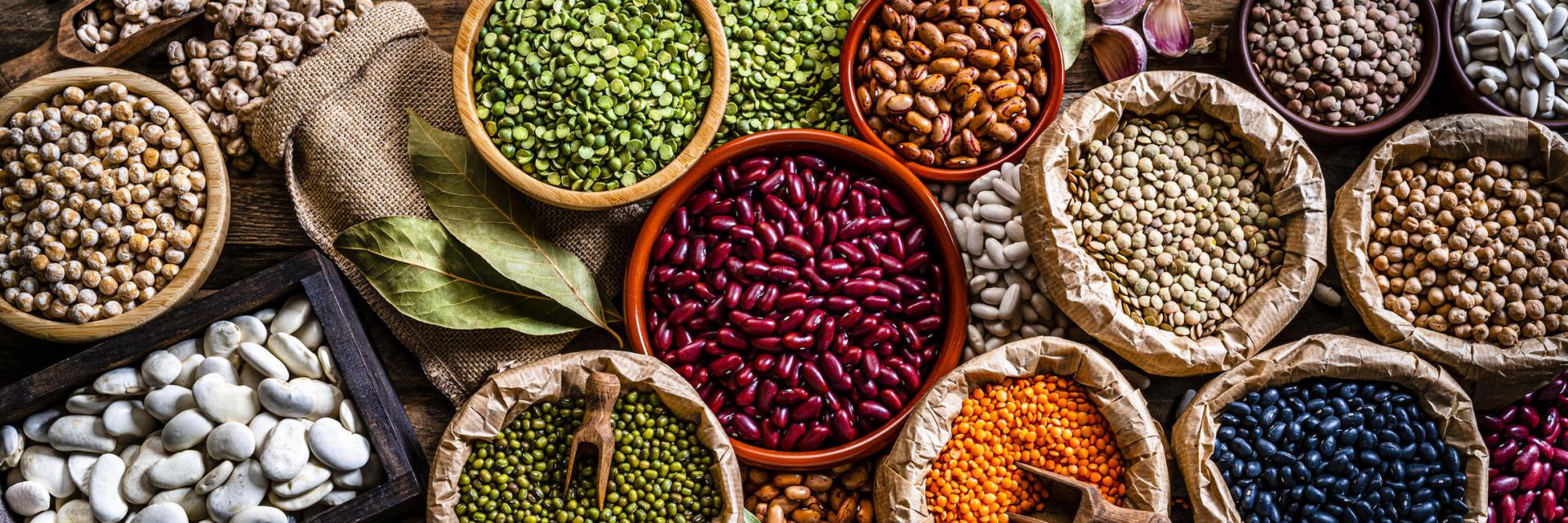
Seeds
A variety of seeds including green, yellow, and brown lentils, chickpeas, black beans, pinto beans, kidney beans, fava beans, mung beans, white beans, and soybeans.
Credit: fcafotodigital via Getty Images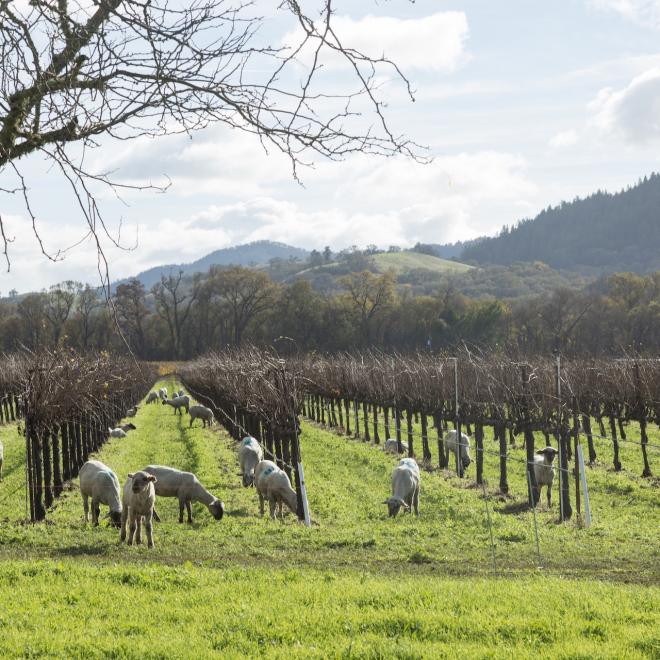

Silvopasture
The sheep act as lawn mowers, weed eaters, do some pruning, and provide much needed fertility. All of these services translate into fewer passes of a tractor through the vineyard. Every opportunity to decrease the number of tractor passes is an opportunity to save money and burn less fossil fuel, not to mention decrease the soil compaction that the weight of a tractor causes.
Credit: Paige Green / Fibershed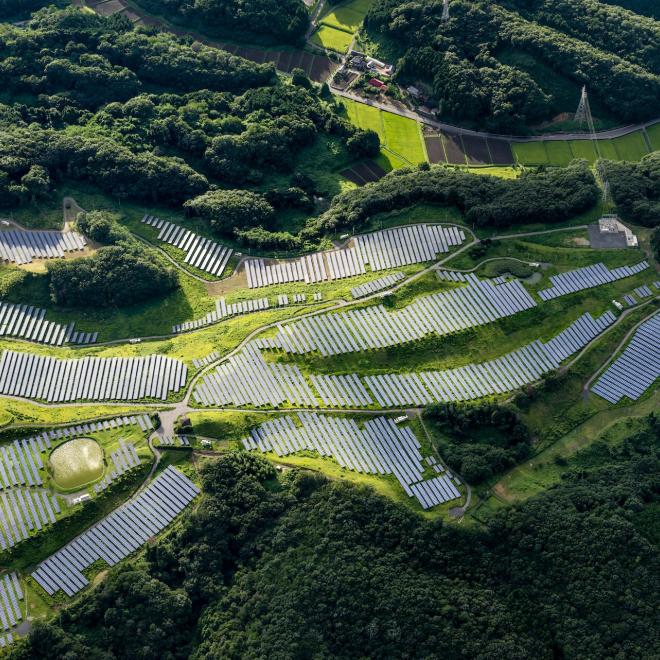

Solar
The Nasu-Minami Photovoltaic Solar Power Plant located on a former golf course in the mountains of Tochigi Prefecture, Japan.
Credit: Jaime Stilling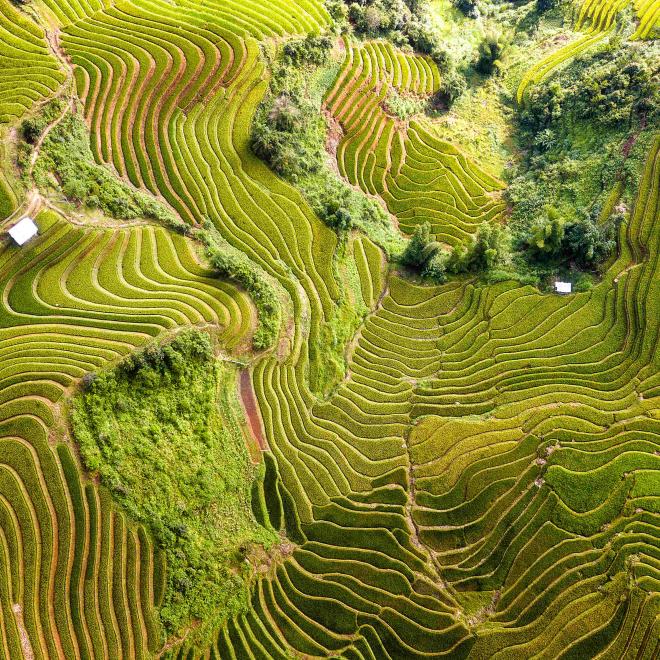

System of Rice Intensification
Top view from drone of green rice terrace field at mu cang chai, Vietnam.
Credit: ImpossiAble / Getty Images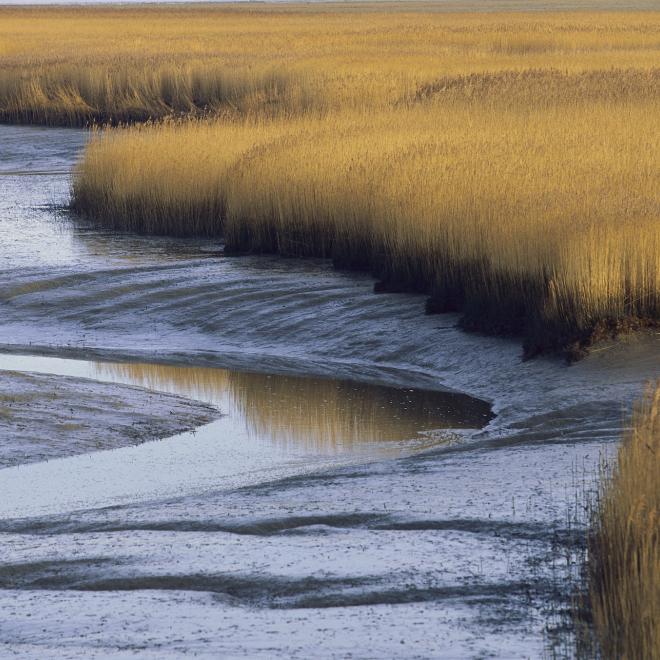
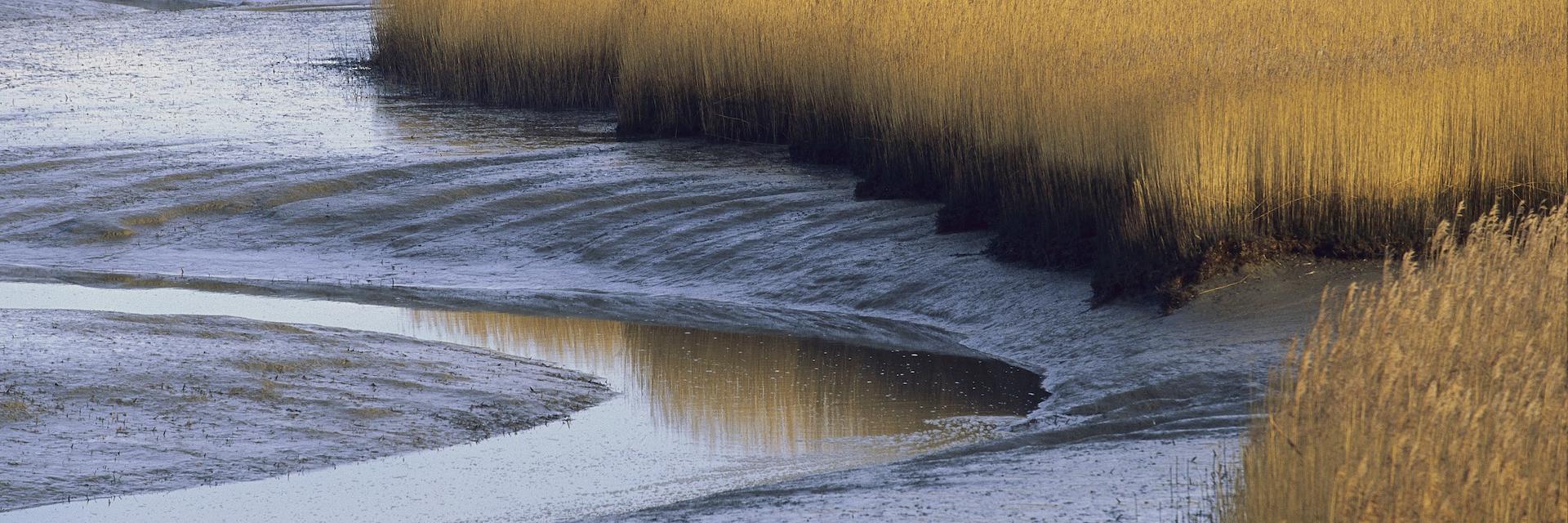
Tidal Salt Marshes
Reeds and mudflats on the North Sea in Holland.
Credit: Neils Kooyman / Minden Pictures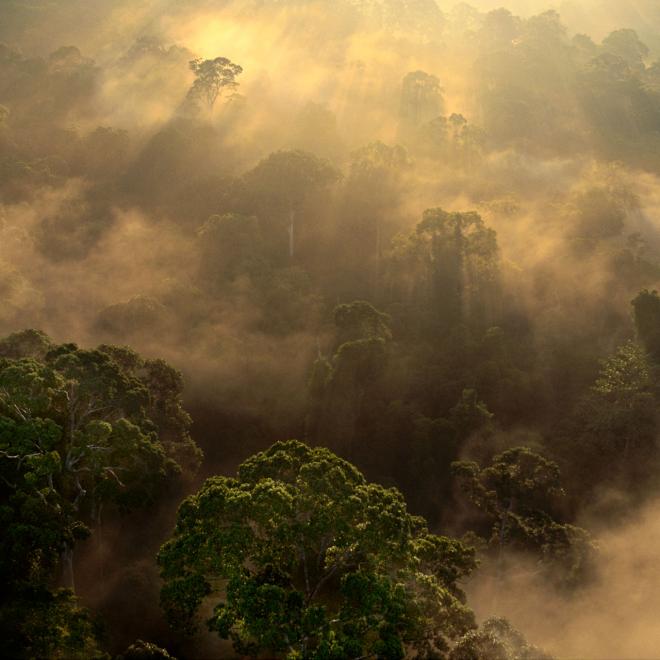

Tropical Forests
Sunrise over lowland rainforest in the Danum Valley in Borneo. The Danum Valley Conservation Area encompasses 171 square miles. It is one of the most diverse forests in the world, with over 200 species of plants per hectare, 270 bird species, and 124 species of mammals, including the Bornean rhinoceros and pygmy elephant. The rainforest is said to be 130 million years old. In 2019, the tallest tropical tree in the world was discovered there, a 331-foot Yellow Meranti Tree.
Credit: Frans Lanting / National Geographic

Ultra-Processed Foods
An assortment of ultra-processed foods. While hyper-palatable and often irresistable, these foods do demonstable metabolic harm at a scale difficult to comprehend. A 2018 study on fried foods drew an alarming comparison of eating 154g of potato chips as being comparable in aldehyde content to smoking 25 nicotine cigarettes.
Credit: Yuliya Furman / 500px / Getty Images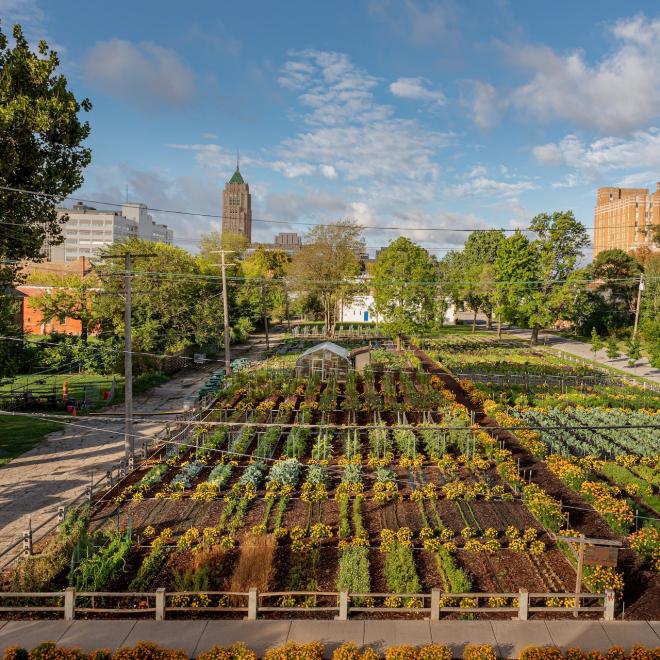
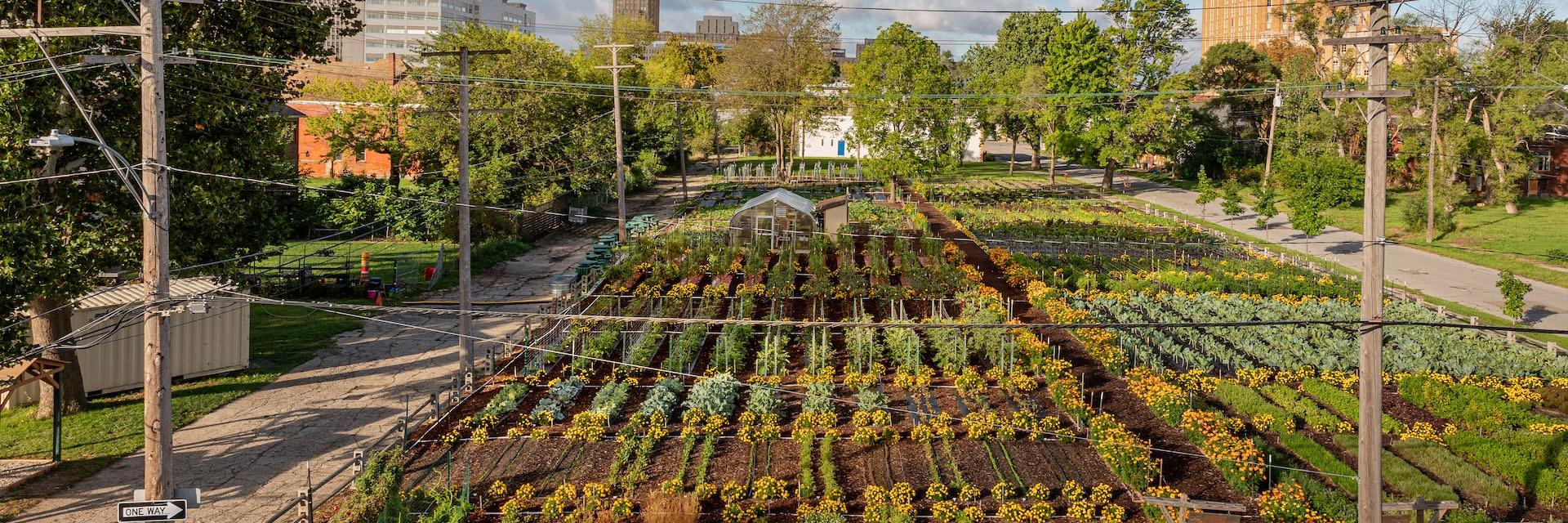
Urban Farming
The Michigan Urban Farming Initiative runs an urban agriculture campus in Detroit’s North End neighborhood to increase food security and promote education, sustainability, and community. Over ten thousand volunteers have grown and distributed over 120,000 pounds of organically grown produce to over 2,500 local households. One hundred percent of the produce is available free of charge, using a pay-what-you- can model.
Credit: Michelle and Chris Gerard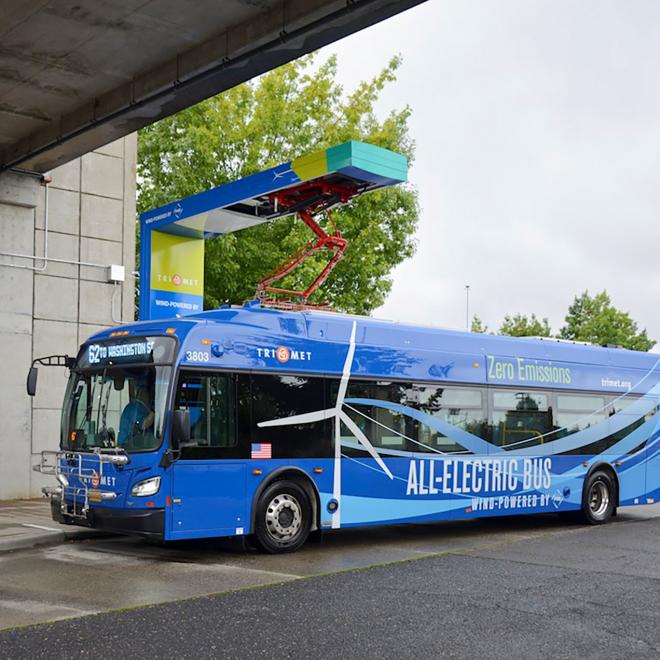
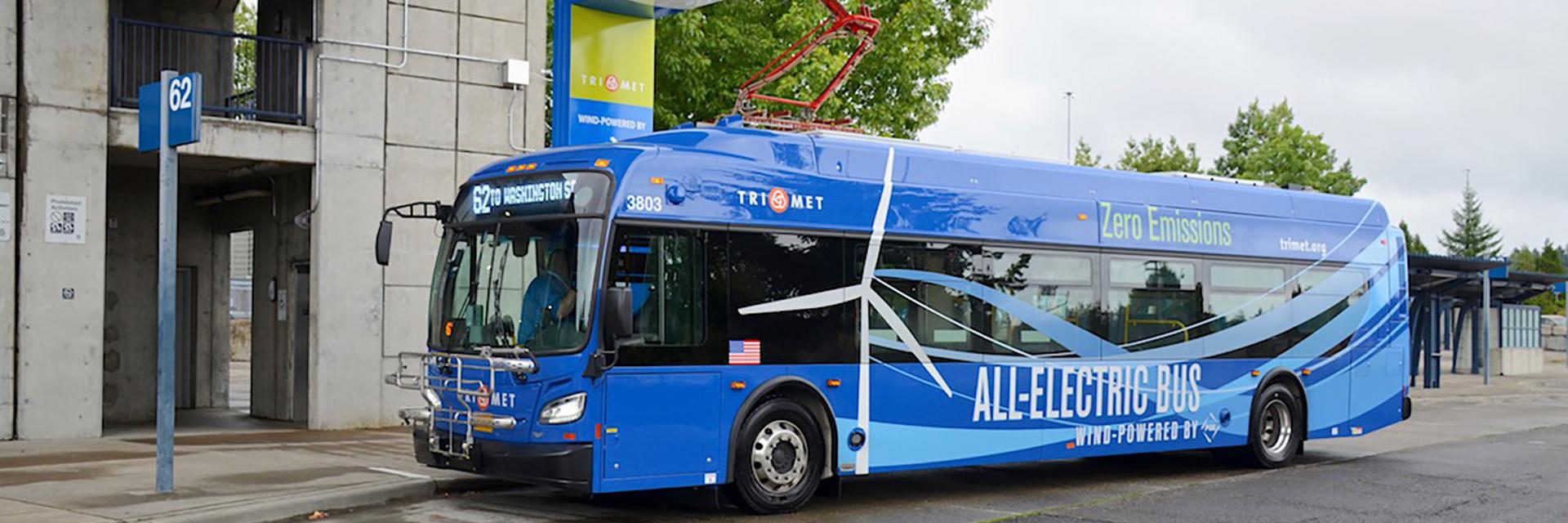
Urban Mobility
An XE40 battery-electric bus operated by TriMet in Portland, Oregon, connected to a SAE J3105 (OppCharge) overhead recharging station (2019).
Credit: Steve Morgan / Wikipedia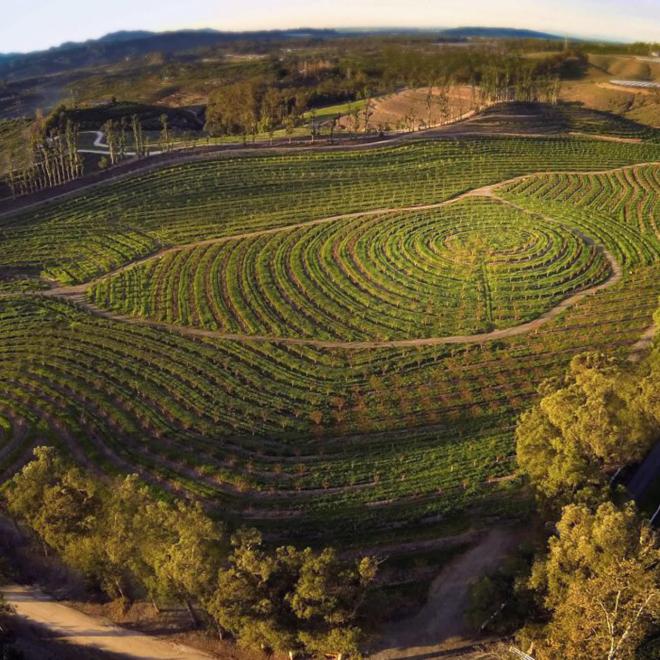
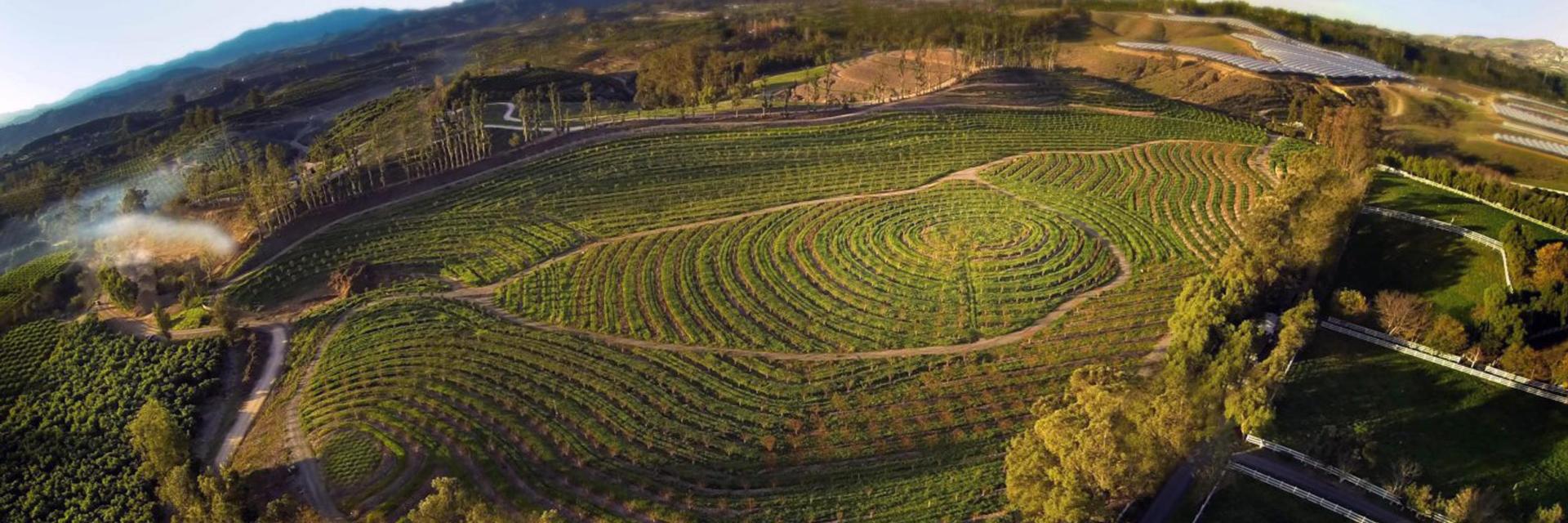
Vermiculture
Aerial view of orchard plantings at Apricot Lane Farms in Moorpark, Ventura County, California.
Credit: Farmlore Films / Alamy Stock Photo

War Industry
This photo taken on January 4, 2021 shows Chinese People's Liberation Army (PLA) soldiers assembling during military training at Pamir Mountains in Kashgar, northwestern China's Xinjiang region.
Credit: STR / Contributor / Getty Images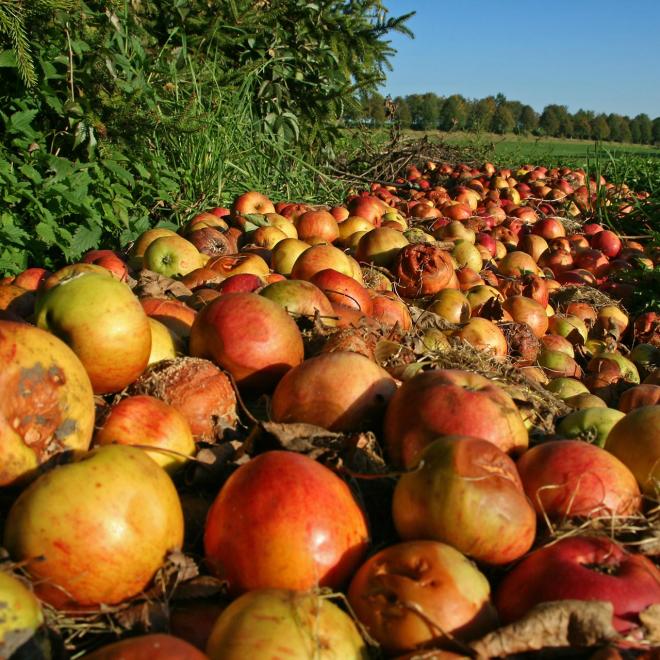
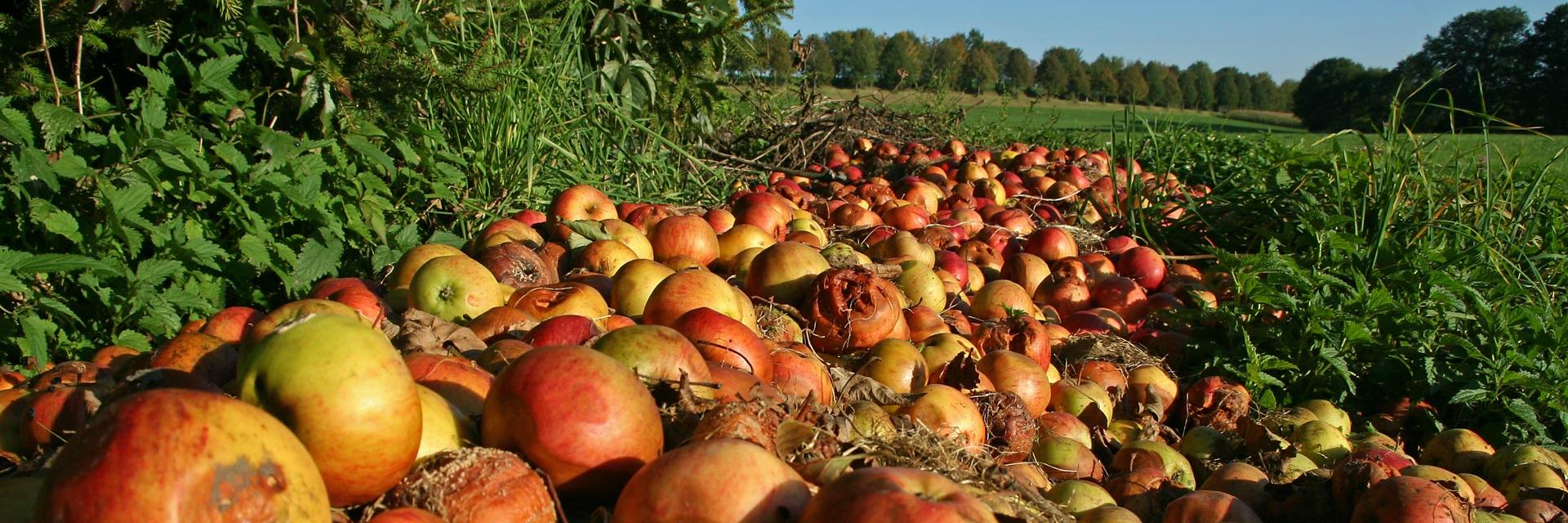
Wasting Nothing
A heap of windfall apples.
Credit: CgWink / Getty Images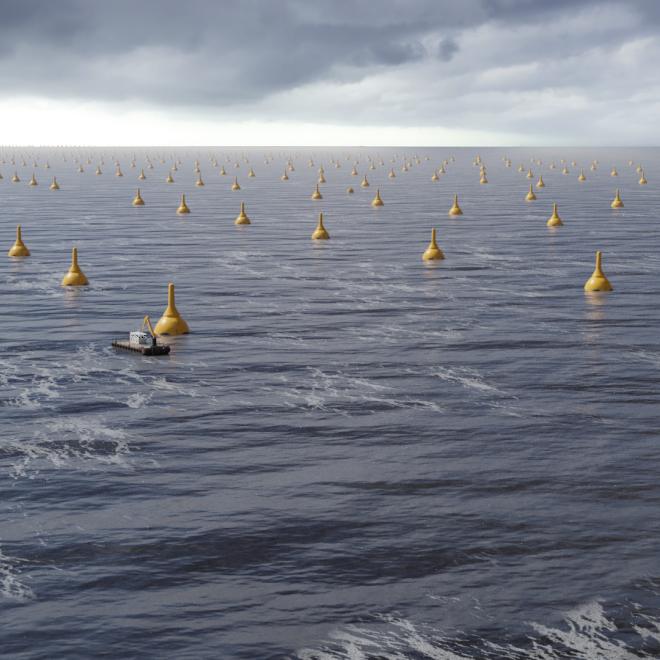

Wave and Tidal Energy
Headquartered in Sweden, CorPower Ocean brings high-efficiency Wave Energy technology enabling reliable and cost-effective harvesting of electricity from ocean waves, with this ocean farm pictured generating 300 MW.
Courtesy of: CorPower Ocean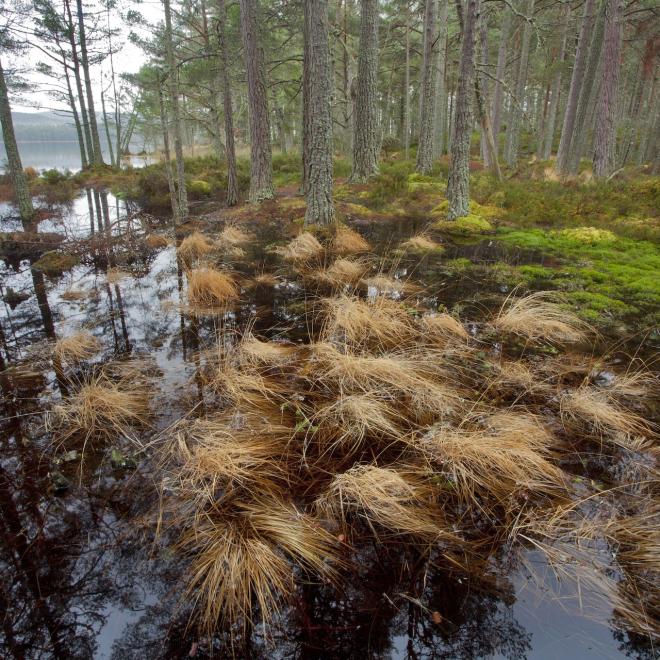
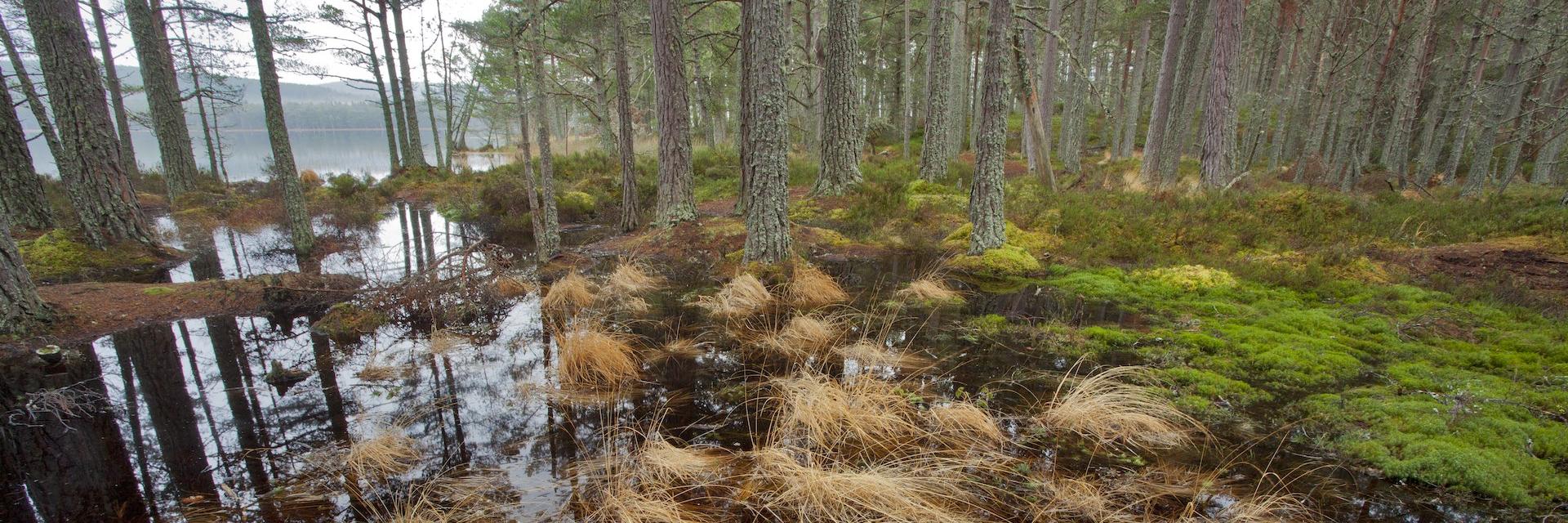
Wetlands
Wetland area of Scots pine in the Abernethy Forest, Cairngorms National Park, Scotland.
Credit: Mark Hamblin / Nature Picture Library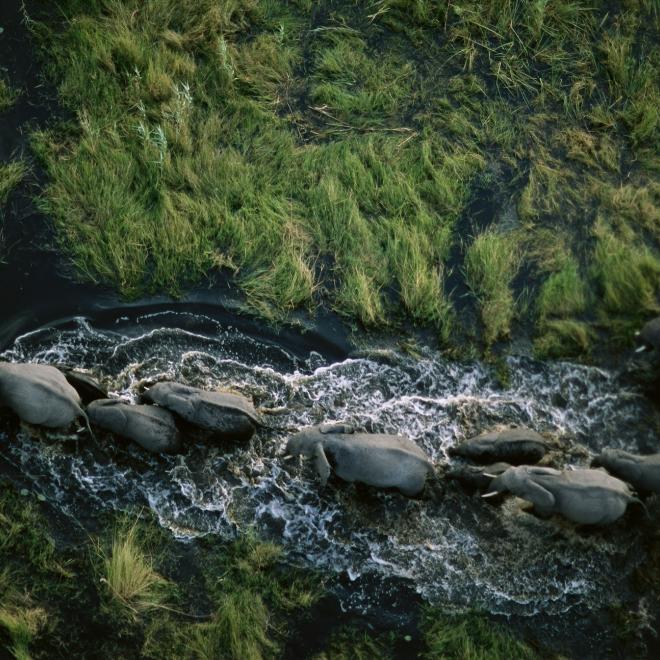
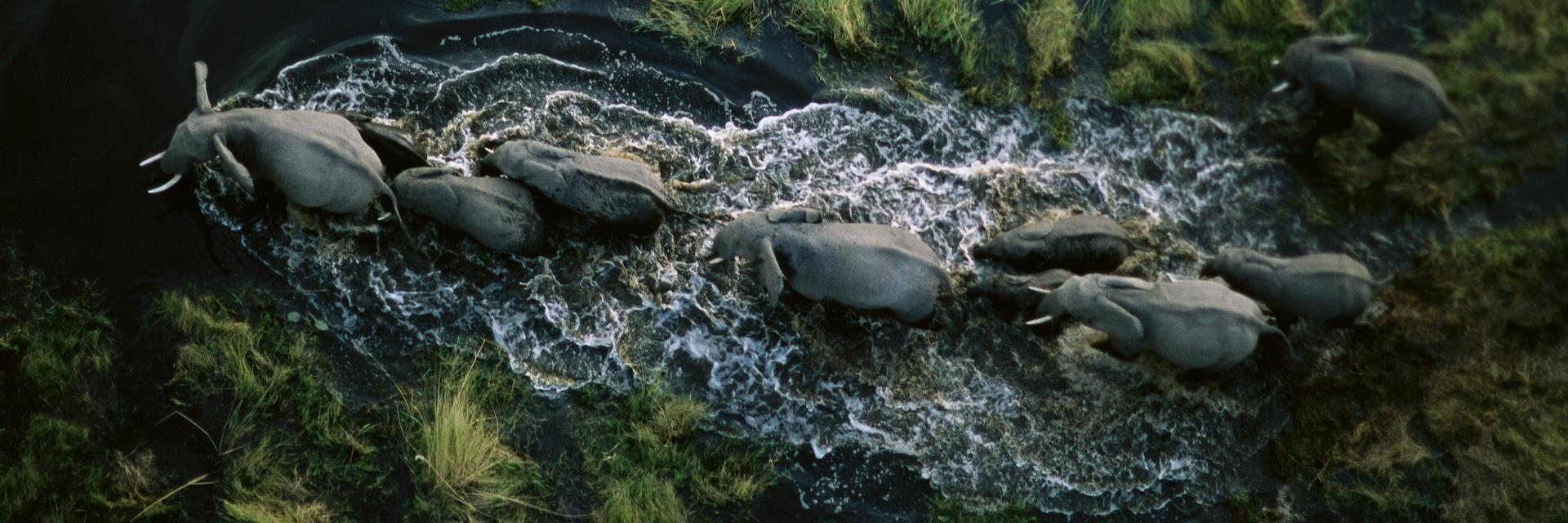
Wildlife Corridors
A family of elephants returning to dry brushland.
Credit: George Steinmetz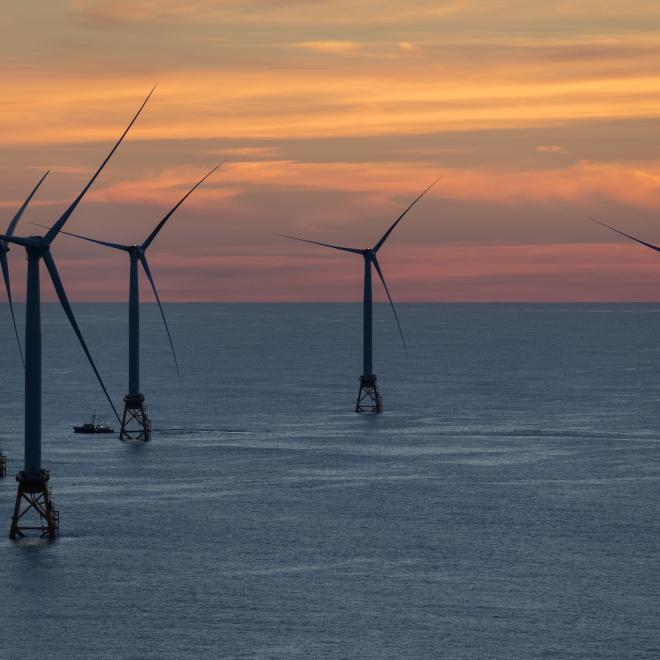

Wind
Block Island Wind Farm, with five turbines in 90 feet of water two miles off the shore of Rhode Island, is the first offshore wind farm in the United States. The wind farm has a total generating capacity of 30 megawatts and will produce over 125,000 MWH each year, enough to power 17,000 homes. Approximately 10 percent of the capacity is for use on Block Island, and the rest will be sent to the mainland via underwater cable. The cable will also allow Block Island to get power from the mainland at times when there is not enough wind power. The turbines are 360 feet above sea level, with blades 240 feet long. The wind farm is permitted for a twenty-year life span, and when decommissioned, it is required that the supporting foundations be cut off at sea bottom. So far, local fishermen say that the towers have increased habitat for fish and other forms of marine life.
Credit: George Steinmetz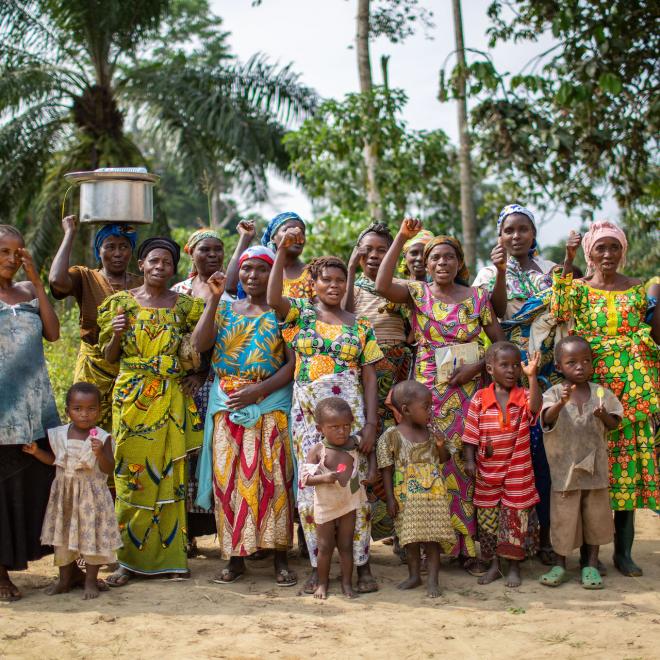
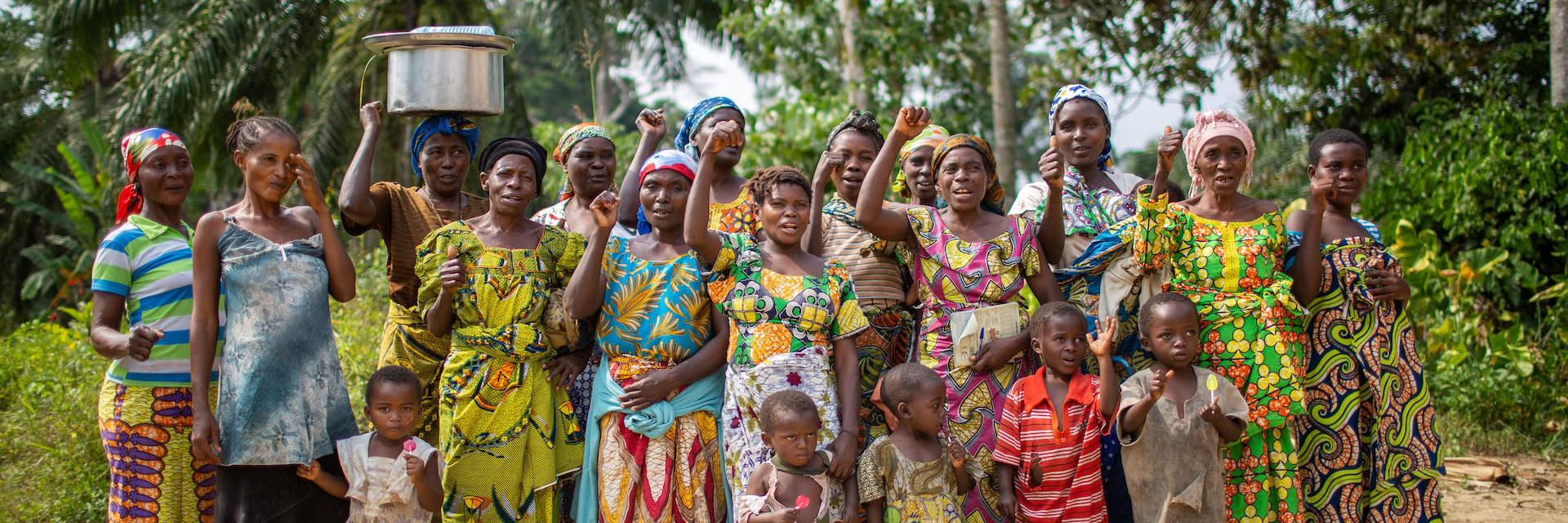
Women and Food
Coodad is a women-led cacao growers cooperative established in 2017 on lands adjoining the Virunga National Park, a UNESCO World Heritage site in the Democratic Republic of Congo, celebrated for its spectacular scenery and the world's last mountain gorillas. The cooperative emerged after regenerative chocolate company Original Beans focused expansion of production on women. Recognizing their role in forest management for firewood and in healing their war-torn communities, the company organized leadership and artisanal enterprise training for hundreds of women in the remote villages around Virunga Park. The "Femmes de Virunga” cooperative shares know-how and income from cacao crop sales with more and more women. In 2020, each participating woman planted more than fifty new trees on average, more than one hundred thousand in total. Communal forest conservation areas have grown to the size of thirteen thousand soccer fields.
Credit: Philipp Kauffmann